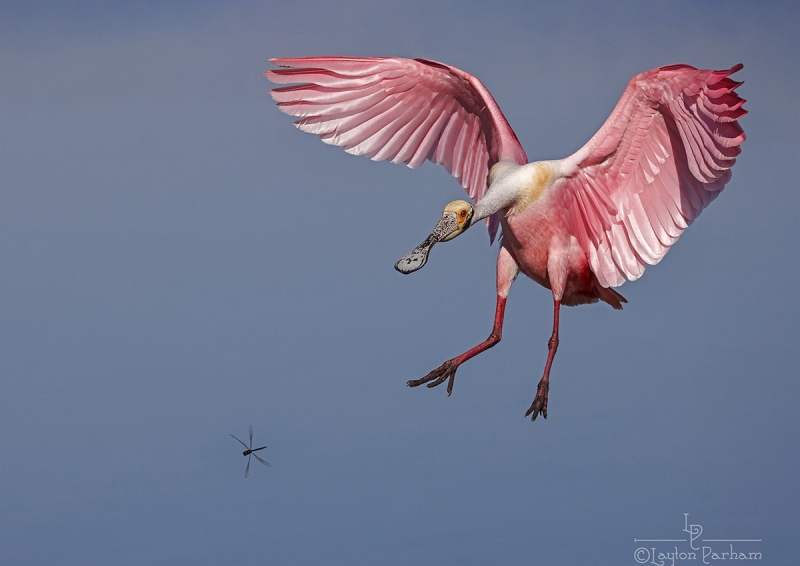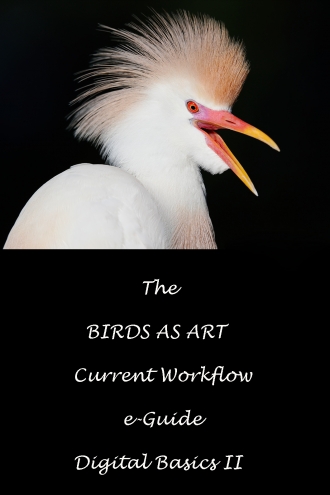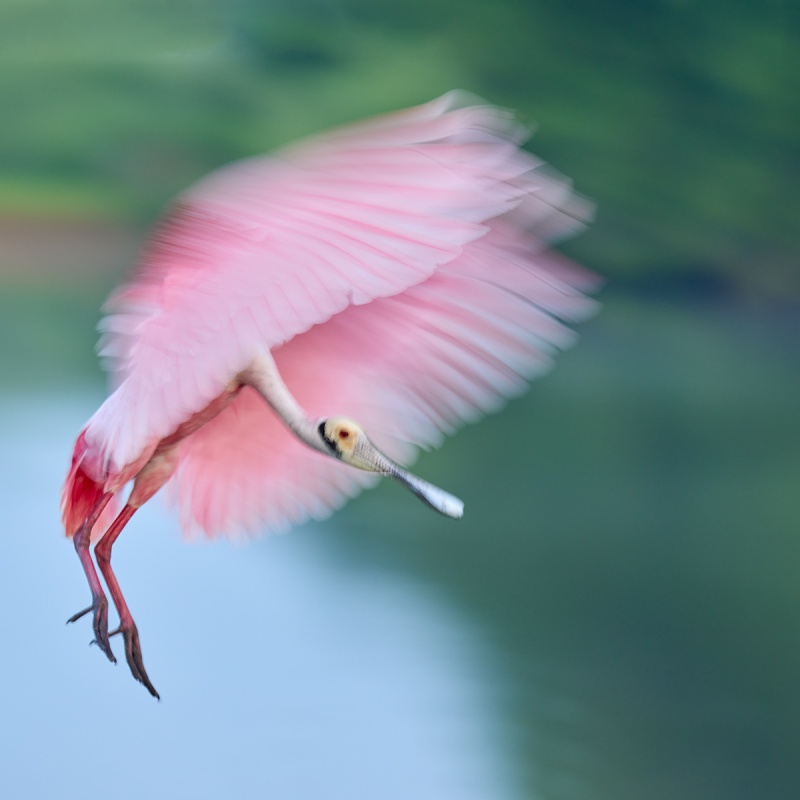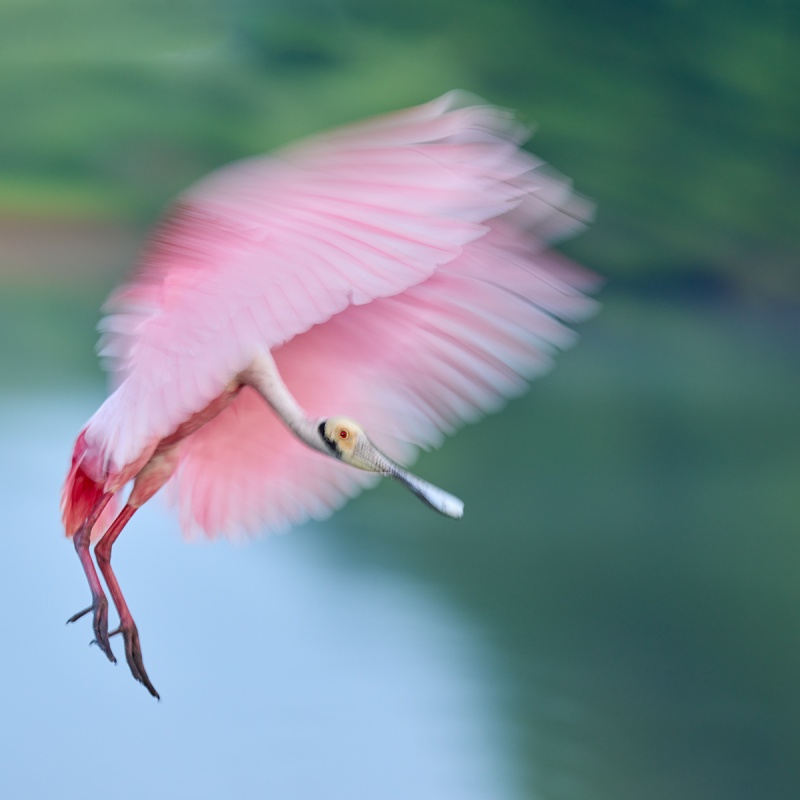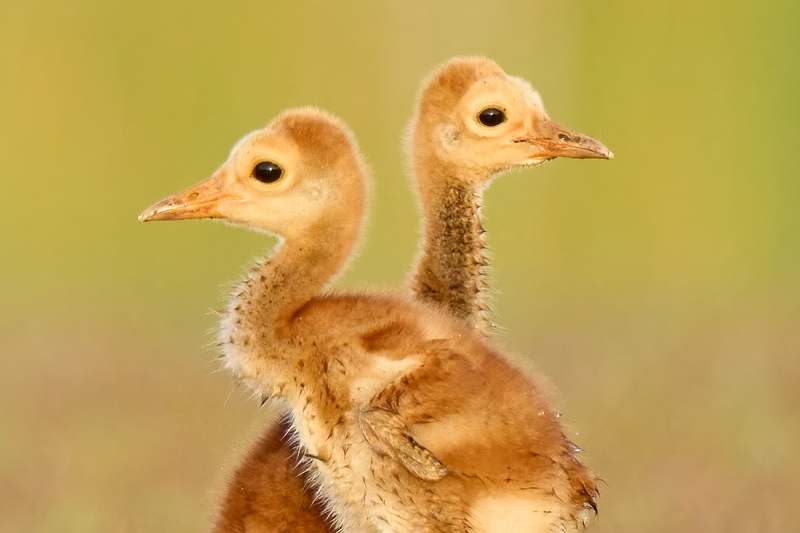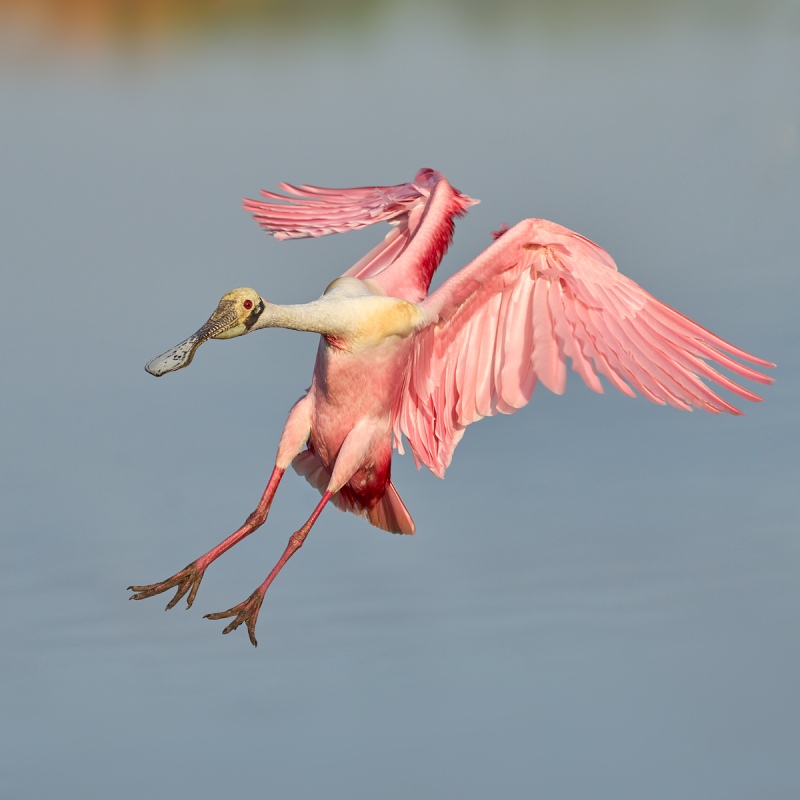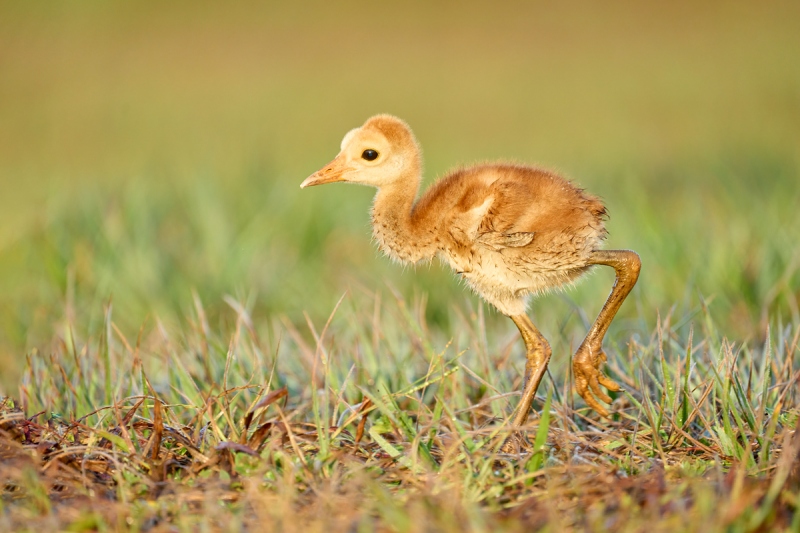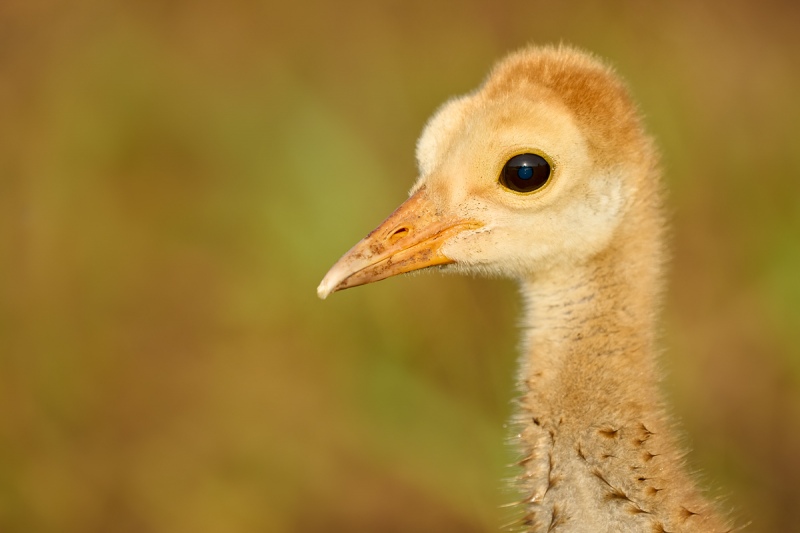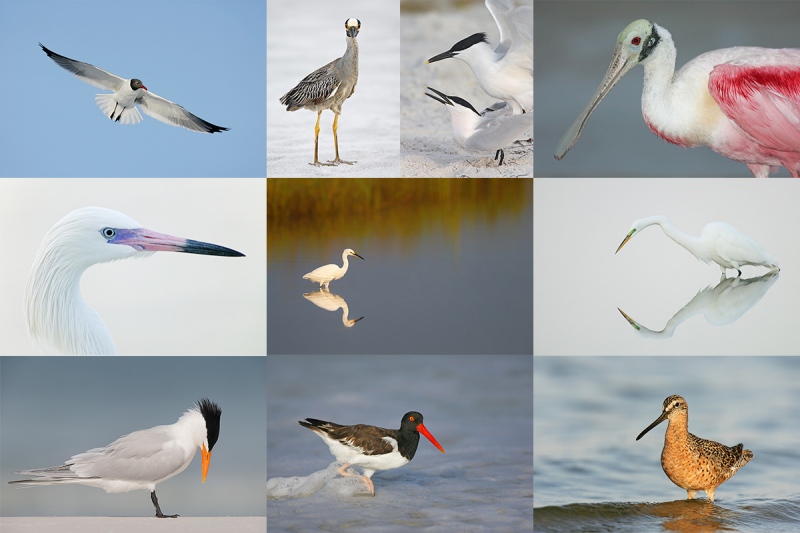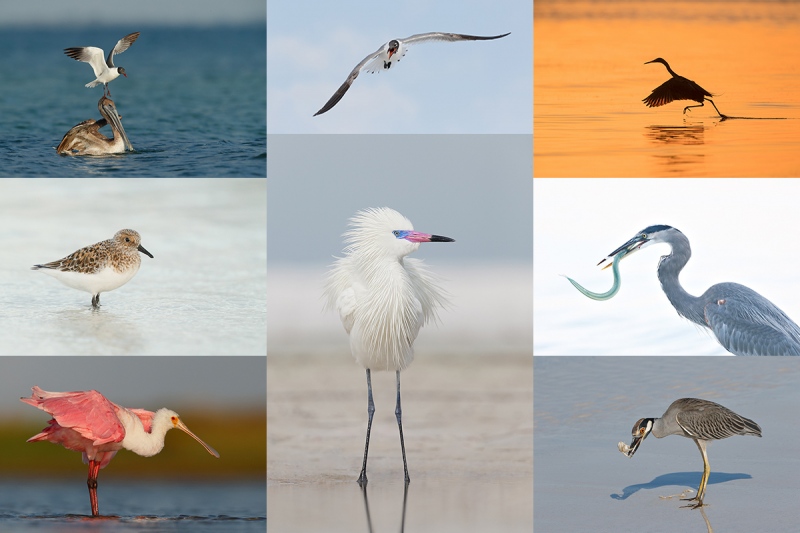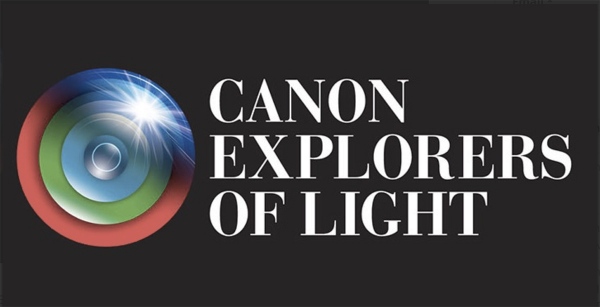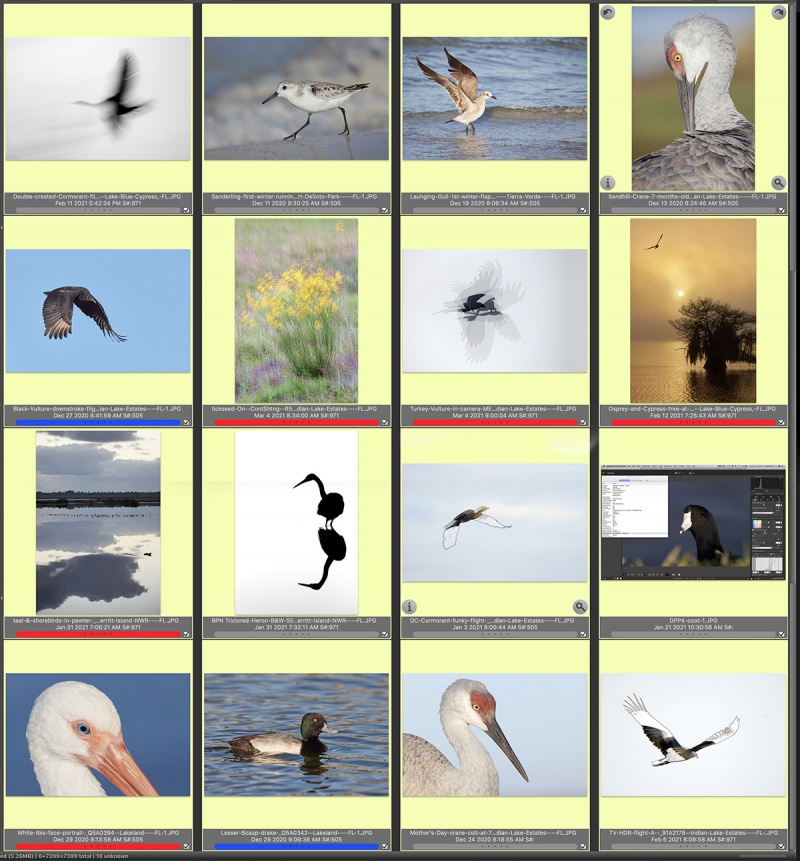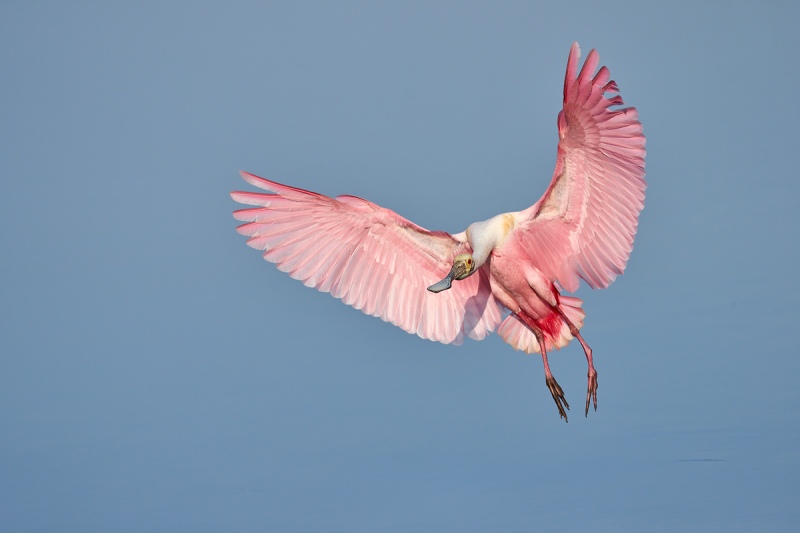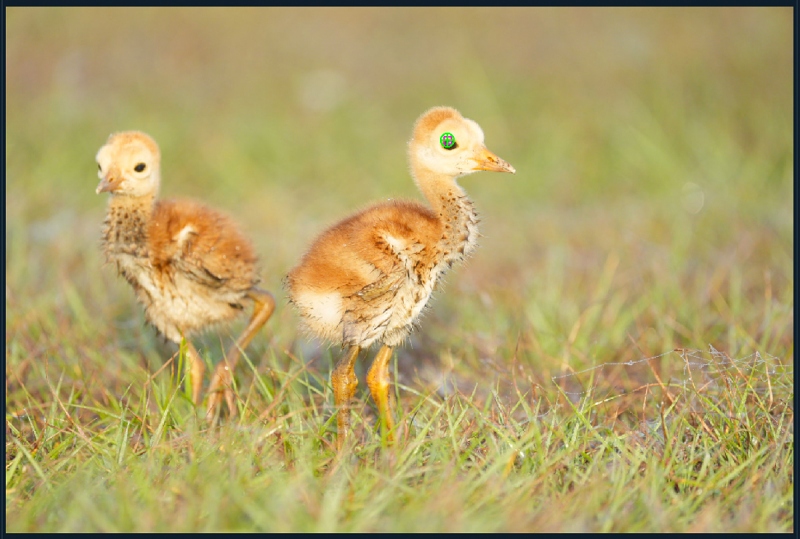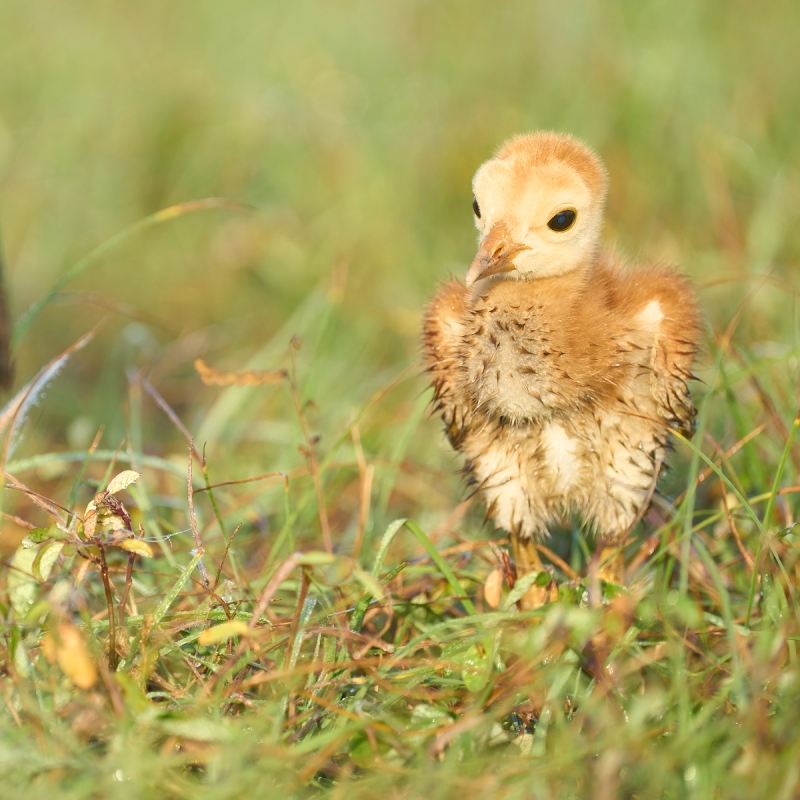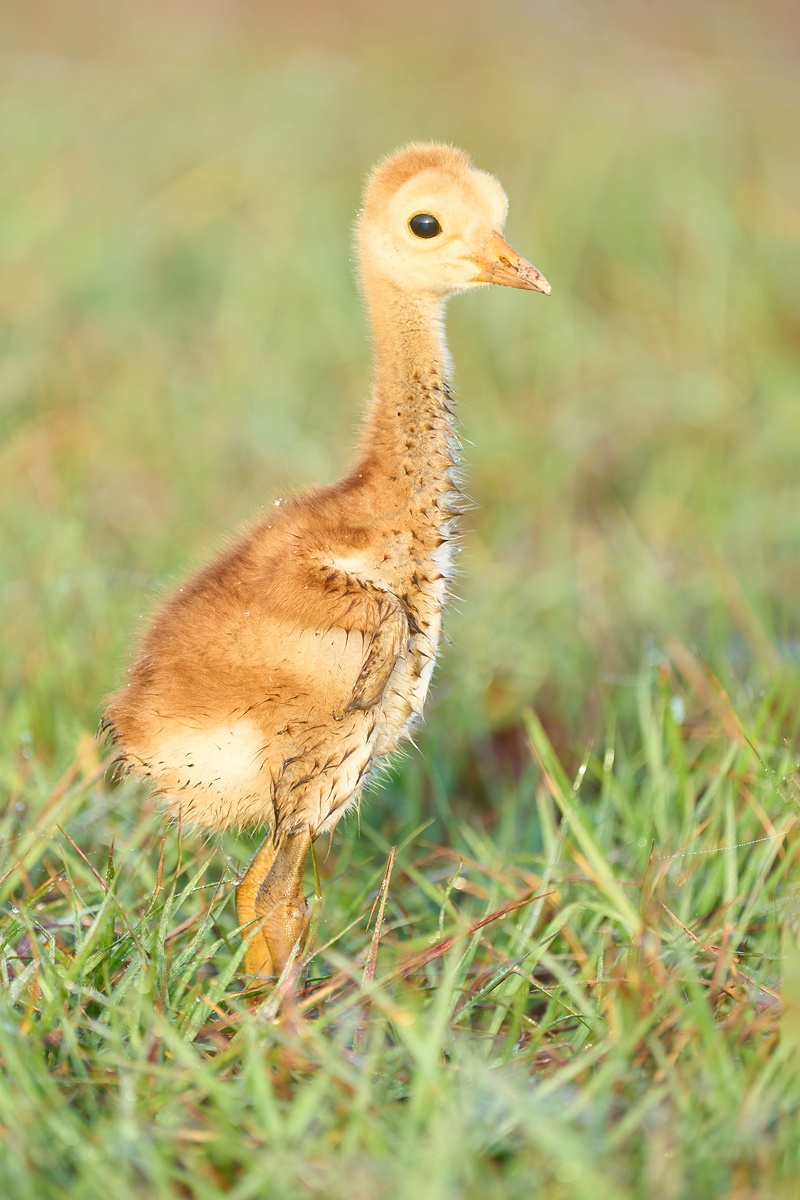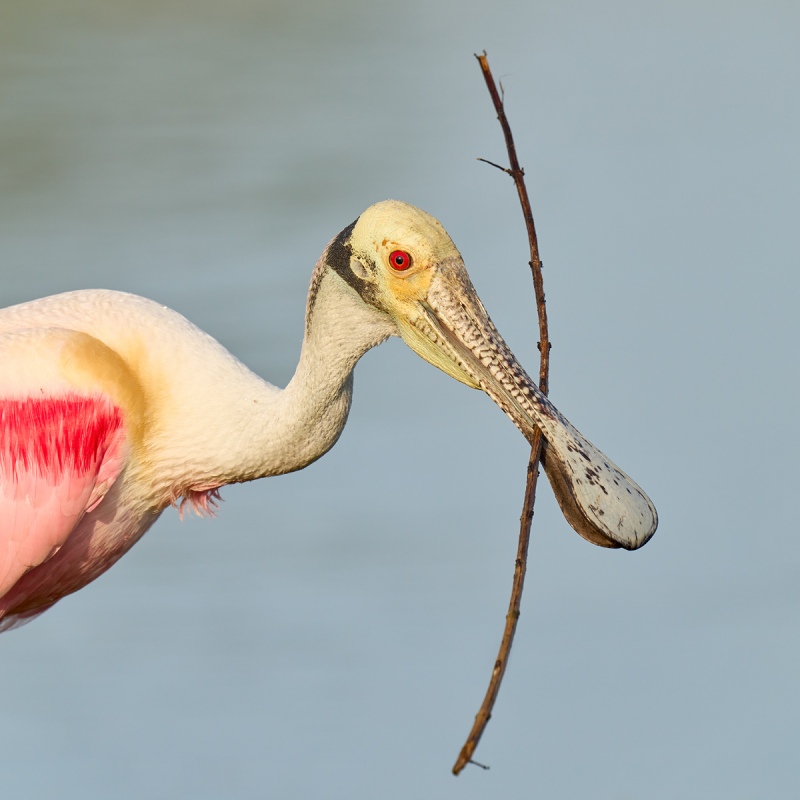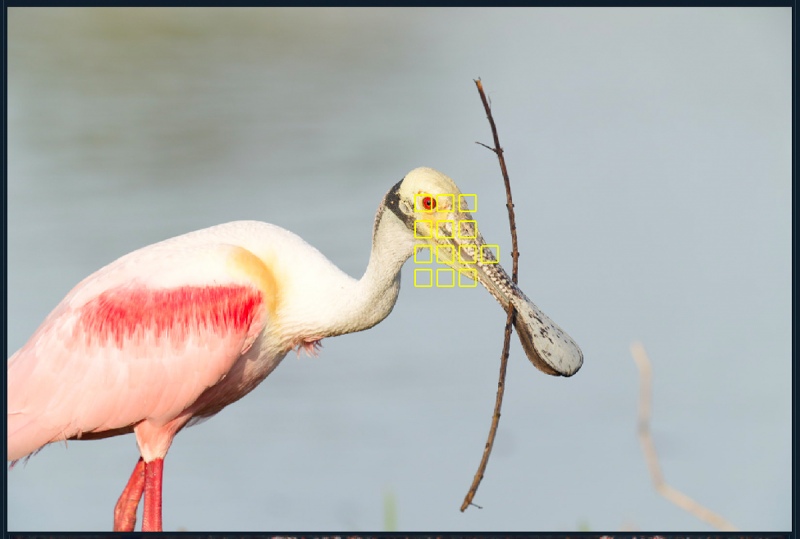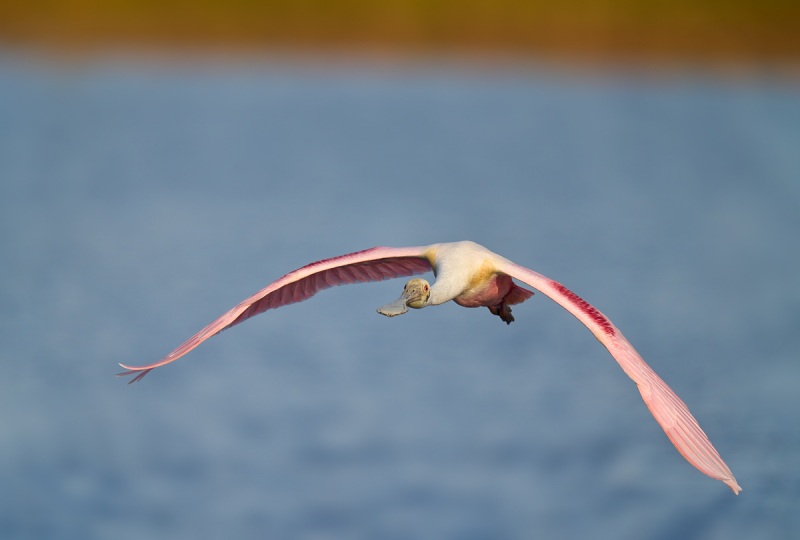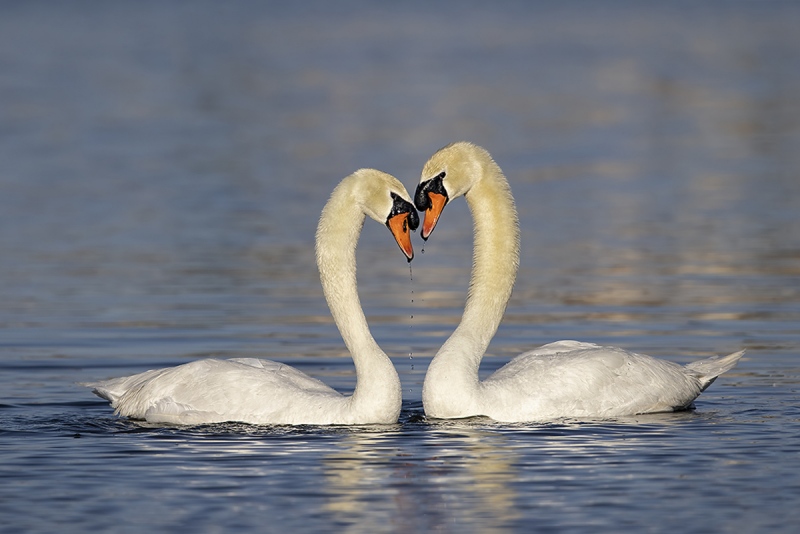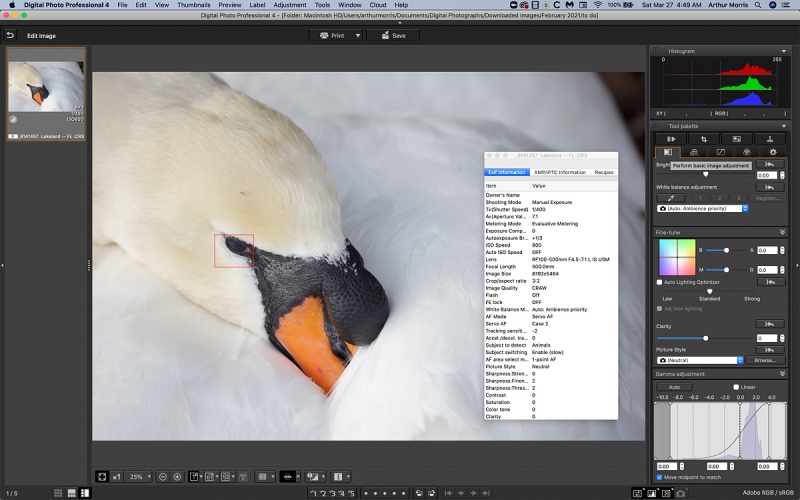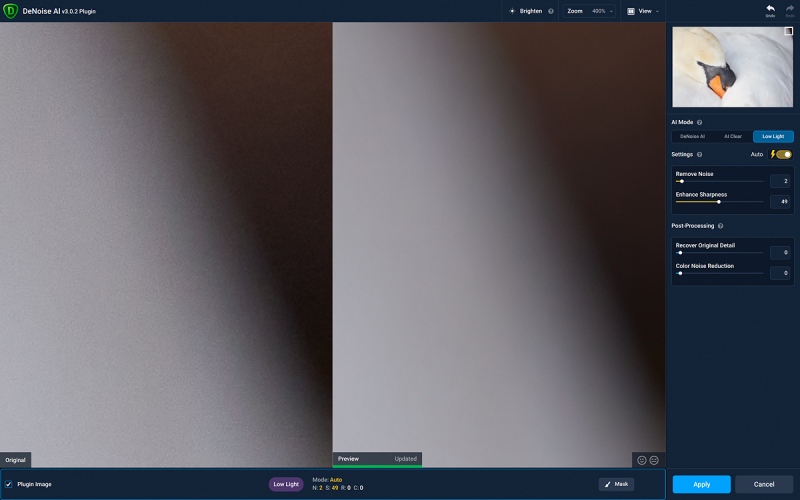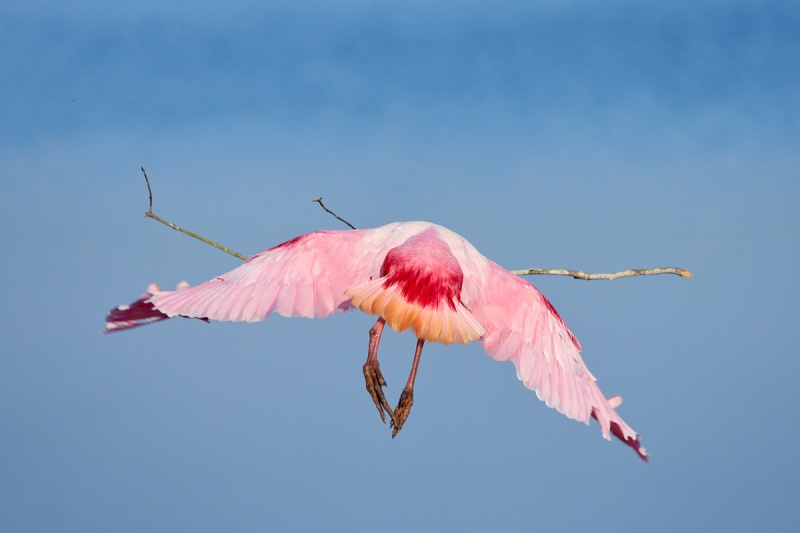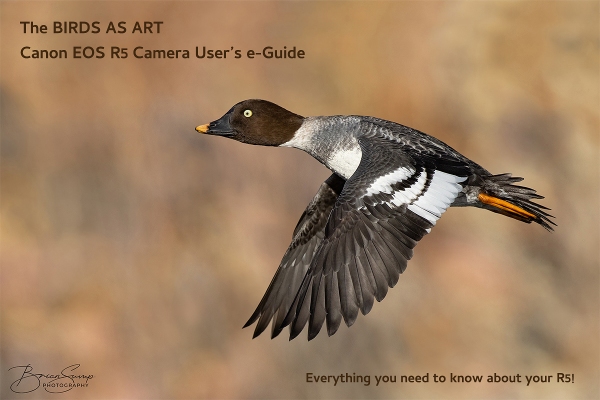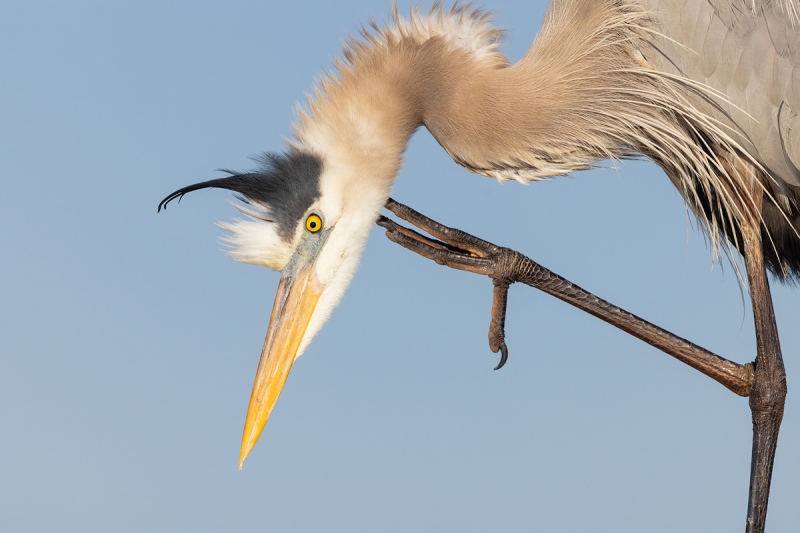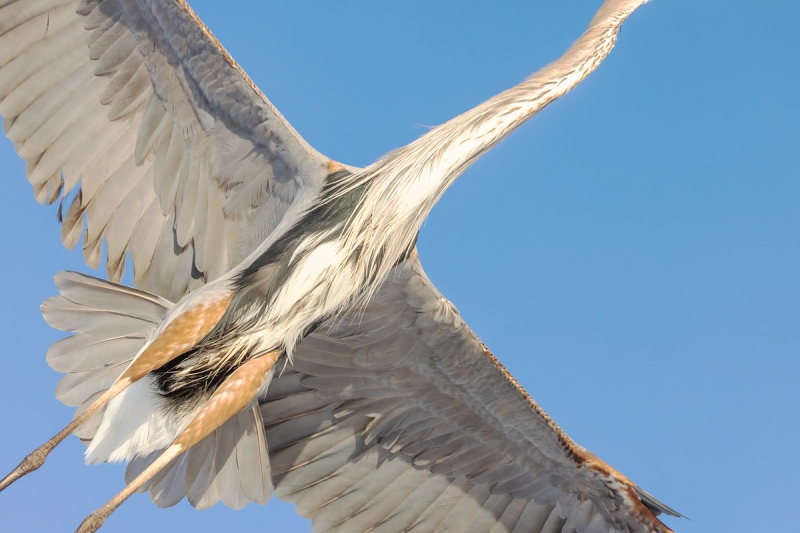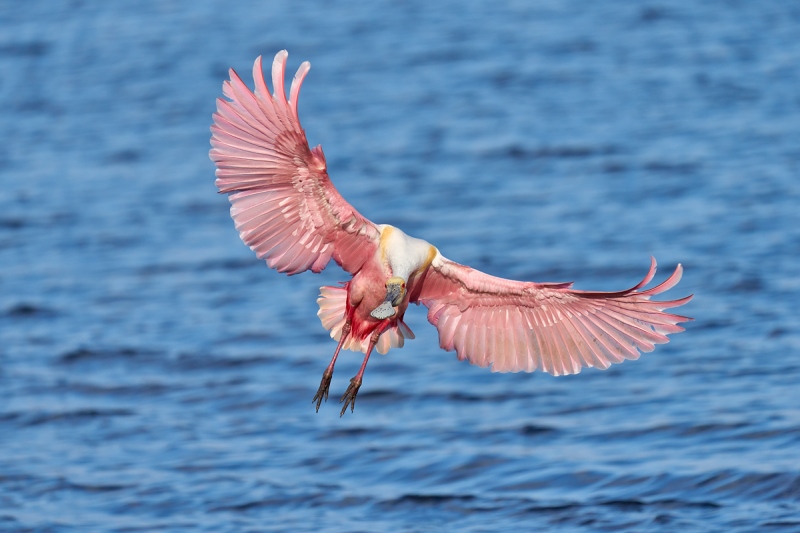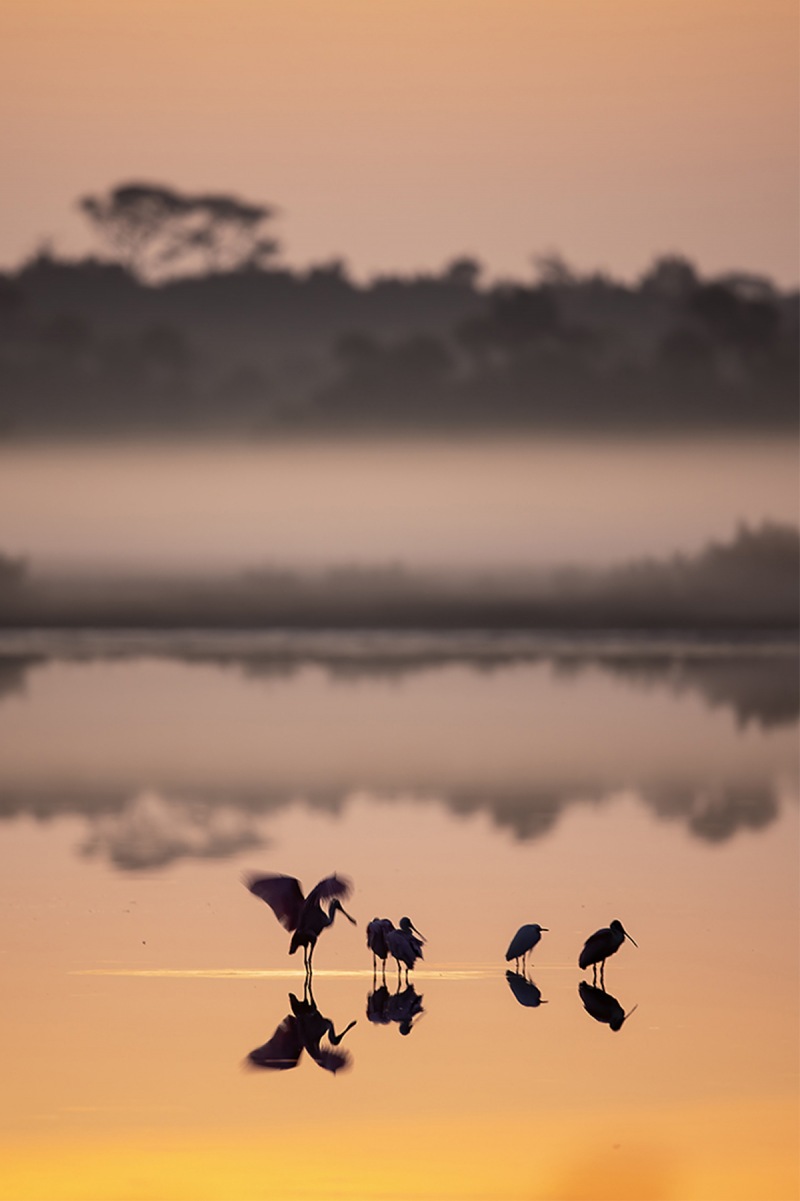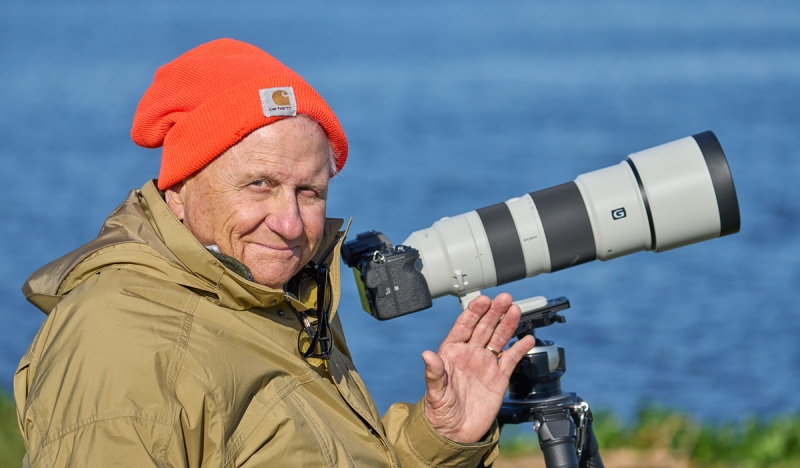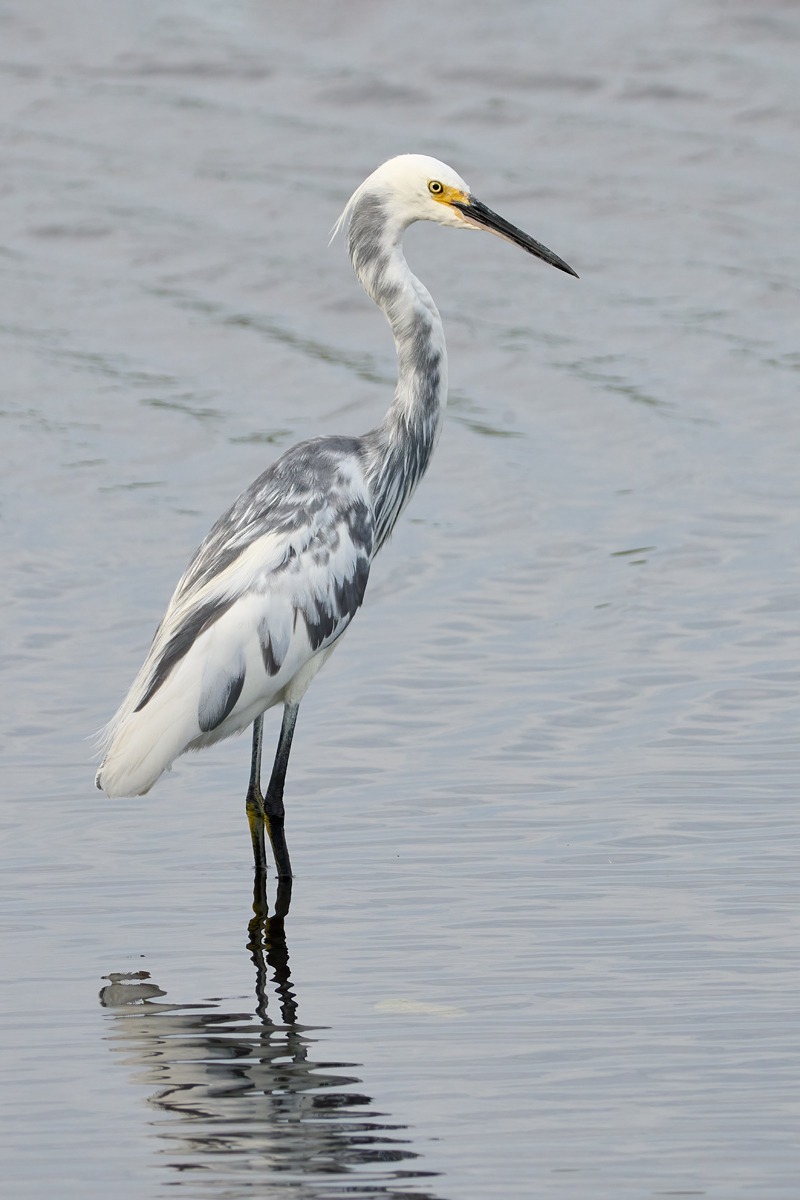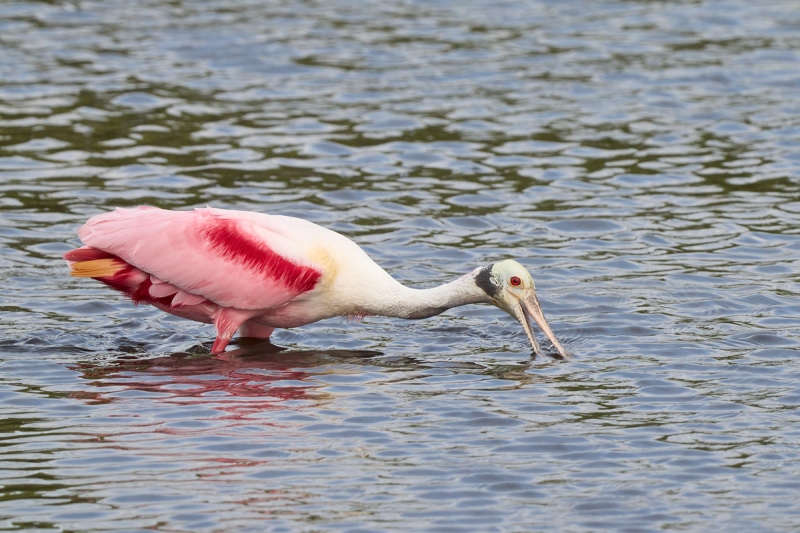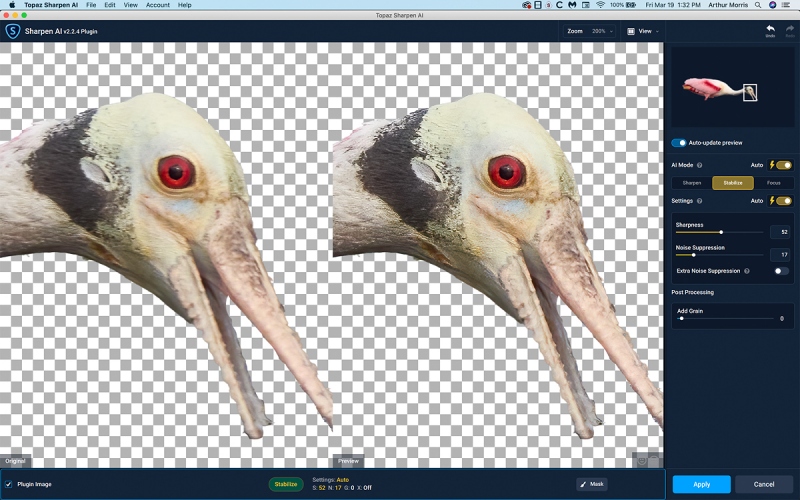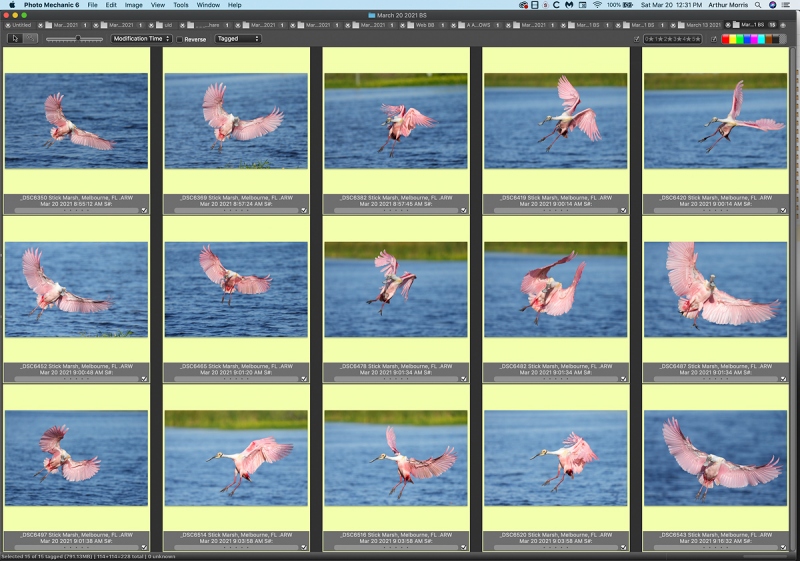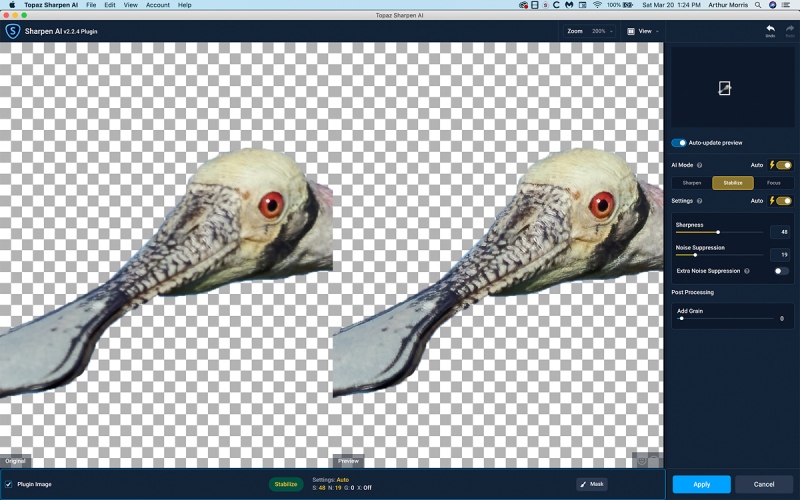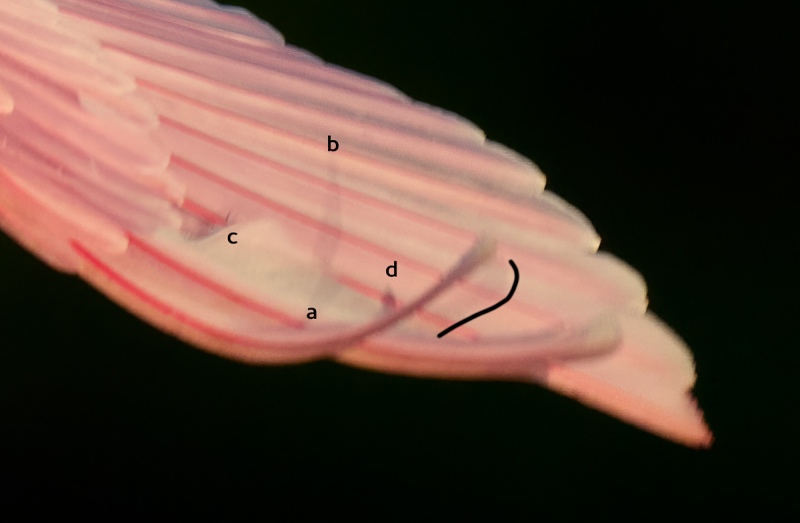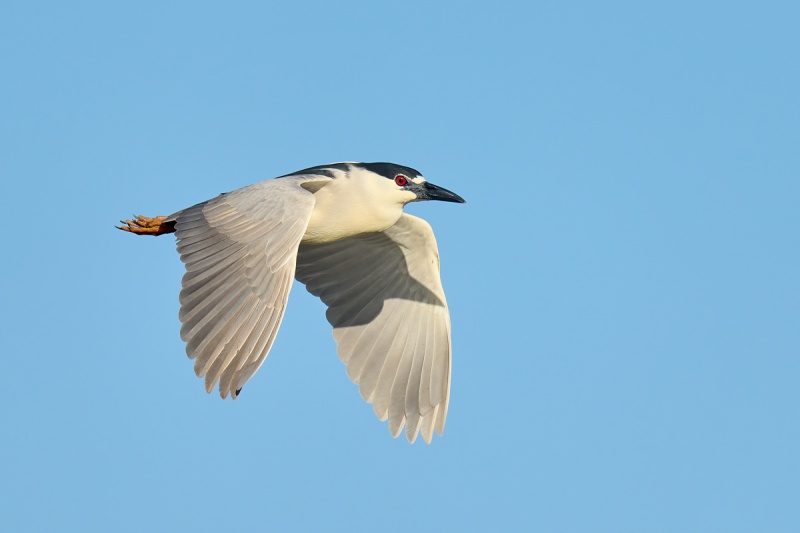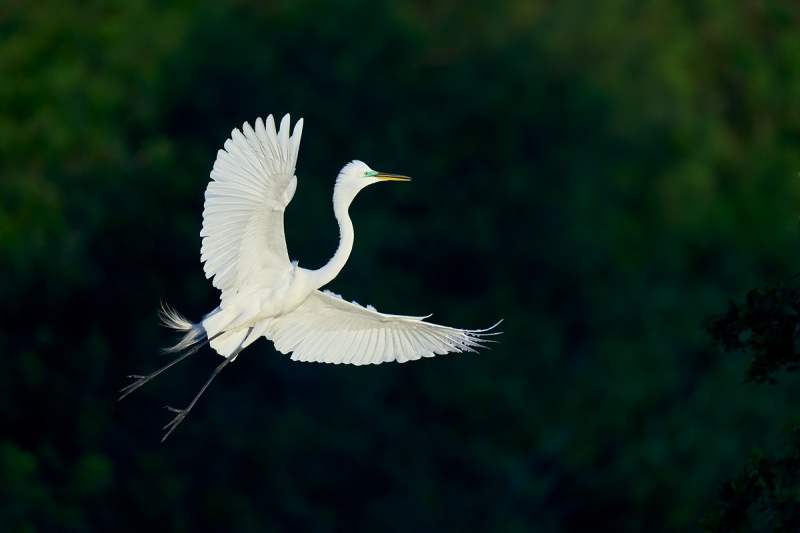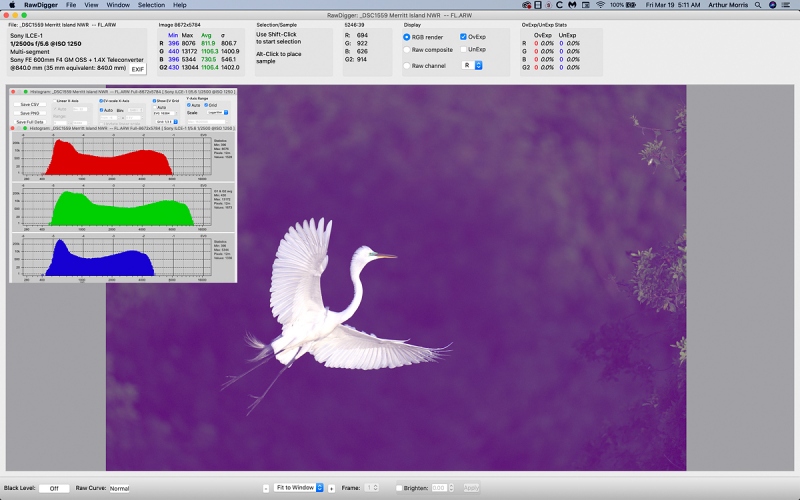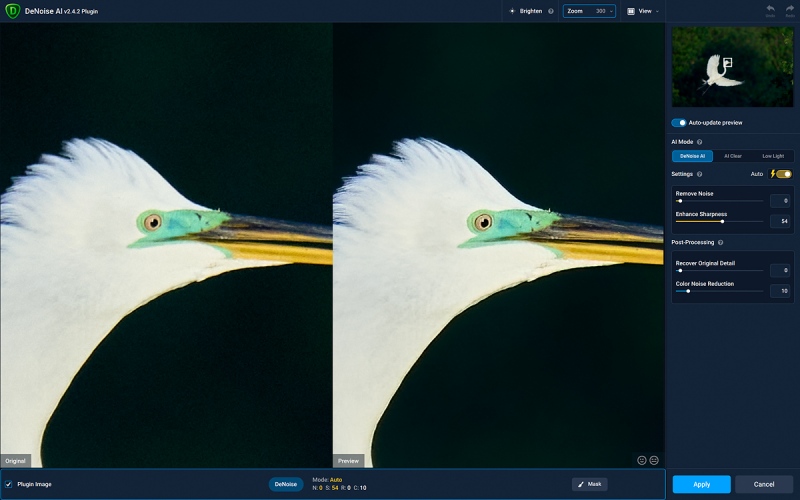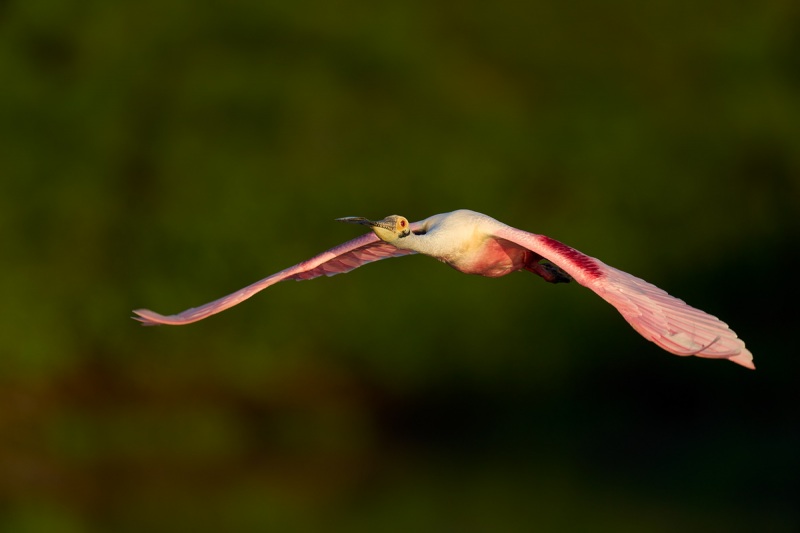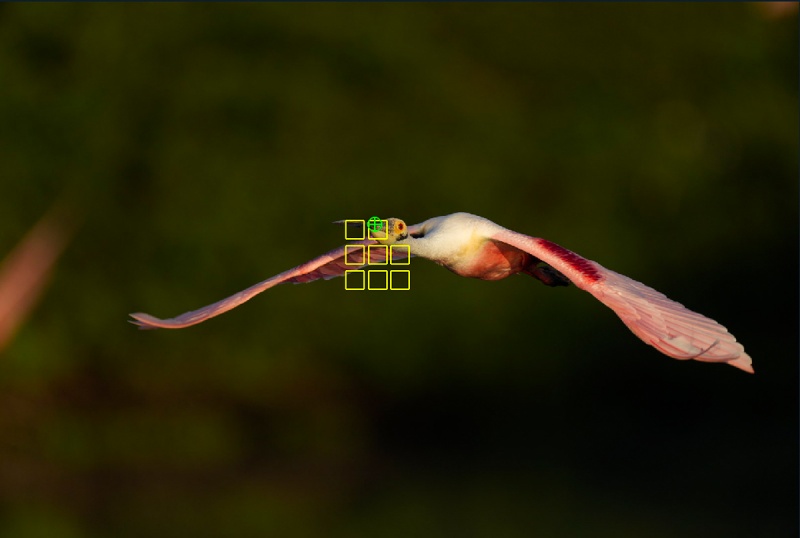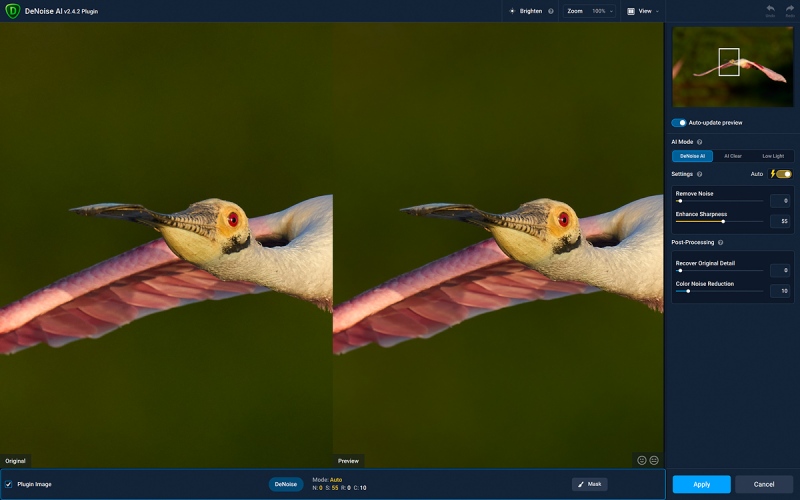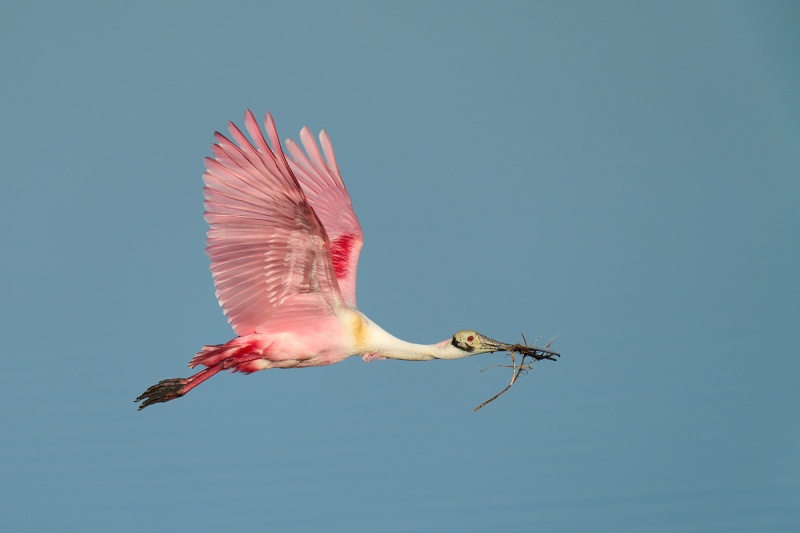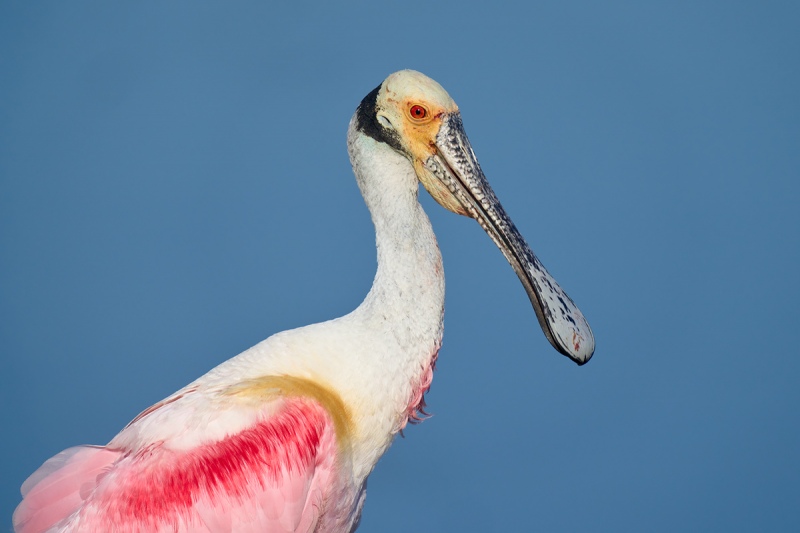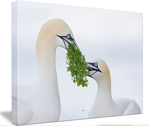April 5th, 2021 What’s Up?
I headed down to the lake early on Sunday morning hoping to find the new crane family coming off the nest in the South Marsh. I arrived 15 minutes before sunrise, only to find the family of four feeding right where they have been for the past ten days. Needless to say, I had fun. I even tried some head shots with the hand held 200-600/1.4X TC/a1 combination.
I headed back down to the lake about an hour before sunset. I put up two perches on posts near a recently dismantled boat dock. I am hoping that nobody takes them down. And if that works, I am hoping to get a nice Anhinga or a Little Blue on one of them in the morning. Sunset was very good with a stiff east wind and some decent color.
Today is Monday 5 April 2021. Rajat Kapoor is driving over from his beachside hotel in Melbourne with his younger son to see and photograph the cranes chicks and the single surviving large colt. The forecast is perfect: clear with a 10mph wind from the east. Though there have not been a lot of vultures around, I will likely put out the raccoon that has been in the fridge for far too long. Wherever you are and whatever you are doing, I hope that you have a great day.
This blog post took less than an hour to prepare and makes 104 consecutive days with a new one. Please remember to use my B&H affiliate links or to save money at Bedfords by using the BIRDSASART discount code at checkout. Doing either often earns you free guides or discounts. And doing so always earns my great appreciation.
R5 Guide Kudos
Unsolicited, via e-mail, from Fernando Ramos
The excellent Canon EOS R5 Camera User’s e-Guide is unlike anything I’ve encountered. Your detailed instruction supported by excellent reasoning is exactly what I needed to set-up my Canon EOS R5. Thank you for sharing your expertise with me; as a result, you saved me immeasurable time. Fernando
Unsolicited, via e-mail, from Joel Eade
Thank you so much for the R5 guide! It is a wonderfully written, extremely comprehensive document that would benefit any R5 user. It is evident that a tremendous amount of time and effort was required to create it. After reading through, I can say it that flows in a logical fashion and that each item is carefully described in a way that is not difficult to follow. I agree with 99% of your set up suggestions 🙂 Joel
|
|
|
Cover Image courtesy of and Copyright 2021 Brian Sump (Sump scores!)
|
The BIRDS AS ART Canon EOS R5 Camera User’s e-Guide: $75.00
The guide is 82 pages long: 21,458 words. More than 50 DPP 4 Autofocus-depicting screen captures. And a 31 minute 44 second educational video. This guide took three and a half months of hard work and a ton of help from at least seventeen very helpful and generous folks.
The guide covers — in great detail — all Menu Items that are relevant to bird, nature, and wildlife photography. It does not cover video. The section on AF methods and the AF Gallery has been expanded from the R5/R6 AF e-guide. It remains the one of the great strengths of this guide. I share my thoughts on what I am sure is the single best AF Method for photographing birds in flight. As most of you know, the guide includes a simple and easy way to change AF Methods that was introduced to me by Geoff Newhouse. In the AF Gallery you will see exactly how Face Detection plus Tracking AF works. In the Educational R5 Gallery video, I share my favorite R5 images along with dozens of bird photography tips and techniques.
In addition, I teach you how to get the best exposures with your R5. Detailed instructions on using the great In-camera HDR and Multiple Exposure features will be appreciated by creative folks who like to have fun. The three shutter modes are explained in detail as well. Bruce Dudek solved the can’t-get-to-Auto ISO problem that had stumped everyone at Canon. This information is of course shared in the guide. You will learn how to set up your EVF (Electronic Viewfinder) and Screen toggle options. Not to mention that the mysterious performance of the Q Button is revealed and simplified. Brian Sump’s images reveal how well you can do when using the R5 with EF lenses using one of the three Canon EF-EOS R Mount Adapters (as Donna did with Image #1 below). You will learn how I use Customize Dials to put either ISO or EC on the Thumb Dial and how to set up and save Custom Shooting Modes (C1-C3) that can remember both your Customize Dial and Customize Button settings! That is something that none of the SONY bodies do. 🙁 Near the end of the guide I share my all-important MY MENU items with you.
Like all BAA educational materials, the R5 guide is written in my informal, easy-to-follow style. I am quite proud of this guide and look forward to hearing your thoughts on our hard work.
You can purchase your copy of the BIRDS AS ART Canon EOS R5 Camera User’s e-Guide for $75.00 here in the BAA Online Store or by calling Jim in the office weekday afternoons at 863-692-0906 with your credit card in hand.
New and Better Bedfords Discount Policy!
You can now save 3% on all of your Bedfords photo gear purchases by entering the BIRDSASART coupon code at checkout. Your discount will be applied to your pre-tax total. In addition, by using the code you will get 2nd day air shipping via Fed Ex.
Grab a Nikon AF-S Teleconverter TC-14E III and save $14.99. Purchase a Canon EOS R5 and your discount will be $116.97. Purchase a Sony FE 600mm f/4 GM OSS lens and save a remarkable $389.94! Your Bedford’s purchase no longer needs to be greater than $1,000.00 for you to receive a discount. The more you spend, the more you save.
Money Saving Reminder
Many have learned that if you need a hot photo item that is out of stock at B&H and would enjoy free second-day air shipping, your best bet is to click here, place an order with Bedfords, and enter the coupon code BIRDSASART at checkout. If an item is out of stock, contact Steve Elkins via e-mail or on his cell phone at (479) 381-2592 (Central time). Be sure to mention the BIRDSASART coupon code and use it for your online order to save 3% and enjoy free 2nd-day air shipping. Steve has been great at getting folks the hot items that are out of stock at B&H and everywhere else. The wait lists at the big stores can be a year or longer for the hard to get items. Steve will surely get you your gear long before that. For the past year, he has been helping BAA Blog folks get their hands on items like the SONY a9 ii, the SONY 200-600 G OSS lens, the Canon EOS R5, the Canon RF 100-500mm lens, and the Nikon 500mm PF. Steve is personable, helpful, and eager to please.


Gear Questions and Advice
Too many folks attending BAA IPTs (remember those?) and dozens of photographers whom I see in the field and on BPN, are–out of ignorance–using the wrong gear especially when it comes to tripods and more especially, tripod heads… Please know that I am always glad to answer your gear questions via e-mail. Those questions might deal with systems, camera bodies, accessories, and/or lens choices and decisions.
|
|
|
This image was created by multiple-IPT veteran Layton Parham on 27 March 2021 at Stick Marsh, Fellsmere, FL. He used the handheld Canon RF 100-500mm f/4.5-7.1L IS USM lens (at 428mm) and the highly touted 45MP Canon EOS R5 Mirrorless Digital camera body. ISO 800. Exposure determined via test image and blinkies evaluation: 1/4000 sec. at f/9 in Manual (M) mode. AWB at 9:38am on a sunny morning. Please see the BIRDS AS ART Canon EOS R5 Camera User’s e-Guide to learn the best R5 AF Method for flight and action.
Click on the image to enjoy a larger version.
Image courtesy of and copyright 2021; Layton Parham
Roseate Spoonbill and damselfly (in serendipitous flight!)
|
Serendipitous Flight
Both the spoonbill and the damselfly were sharp and in the original frame. Layton did a nice job of moving the damselfly to improve the compositional balance.
Unsolicited, via e-mail, from Layton Parham
I can’t thank you enough for the hard work you put into preparing the R5 Guide! It is worth way more than the $75.00 price tag. Upon receiving it, I stayed up late, read the whole thing twice, and changed my camera settings as recommended in the guide. Early the next morning, I headed to Stick Marsh. I made more that 600 photos, all in tack-sharp focus! I only had to delete six. Enclosed are a couple of the good ones. Layton
The Stick Marsh Site Guide Subscription Service
The Site Guide Subscription Service is a new concept. I e-mailed the first issue last week: Stick Marsh Site Guide e-Mail #1: The Basics. The Basics e-mail includes specific directions to the site, and a map of the rookery area with specific instructions and wind, weather, and where-to-be advice. I e-mailed the second installment recently. In it, I shared several new shooting locations and strategies. I will be sending e-mail #3 on Monday with lots more to come.
To sign up for the Stick Marsh Site Guide Subscription Service, call Jim in the office weekday afternoons at 863-692-0906 with your credit card in hand or send a PayPal for the $100.00 to us at birdsasart@verizon.net. Please be sure to include the words Stick Marsh with your PayPal. At some point, we will get this item in the BAA Online Store.
I fully understand that you can go to Google Maps, find the Stick Marsh, visit, and likely make some good or great images. You might think, I can do fine just without artie’s advice. But you will do a whole lot better with it. The annotated map alone is worth the price of admission.
Typos
With all blog posts, feel free to e-mail or to leave a comment regarding any typos or errors.
April 4th, 2021 What’s Up?
Saturday morning turned out a lot better than the weather forecast. It dawned sunny with a good breeze from the north that turned northeast before swinging to the northwest at about 9am. I found the baby cranes foraging with and getting fed by the adults in the same spot they have been every morning since I found them. I photographed them for a bit and then got back in my SUV to go hunting. I was rewarded by finally getting some really good images of the single surviving colt. I worked from my vehicle with the hand held 200-600 and the a1.
With light clouds moving quickly and partially or fully blocking the sun at times, Zebras saved the say. Working with shutter speeds between 1/1000 and 1/1600 second and the aperture set at either f/6.3 (wide open) or at f/7.1 (stopped down 1/3-stop), the ISOs varied with almost every frame I kept ranging from ISO 500 with the sun fully out to ISO 1250 when the sun was totally obscured.
On the EVF-BO front, I am glad to report that the a1 has not blacked out in more than a week.
I got a ton of work done on the Zoom Webinar presentation I will be doing for the South Shore (Long Island, NY) Camera Club on April 7th. It is entitled Designing and creating pleasing and dramatic natural history images. I should have it pretty much completed by today but usually wind up changing around a slide or two ten minutes before the presentation.
Today is Sunday 4 April 2021. The forecast for ILE this morning is for partly cloudy skies with north/northeast winds at 10mph. I will head down to the lake early to see if I can locate the baby crane nest … Wherever you are and whatever you are doing, I hope that you have a great day.
This blog post took almost two hours to prepare and makes 103 consecutive days with a new one. Please remember to use my B&H affiliate links or to save money at Bedfords by using the BIRDSASART discount code at checkout. Doing either often earns you free guides or discounts. And doing so often earns my great appreciation.
|
|
The BIRDS AS ART Current Workflow e-Guide (Digital Basics II).
You can order your copy from the BAA Online Store here, by sending a PayPal for $40 here, or by calling Jim or Jennifer weekdays at 863-692-0906 with your credit card in hand. Be sure to specify Digital Basics II.
|
The BIRDS AS ART Current Workflow e-Guide (Digital Basics II)
The basics of grabbing a bird’s eye from one frame and using it in a second frame (as with Image #1A below), are detailed in the BIRDS AS ART Current Workflow e-Guide (Digital Basics II), an instructional PDF that is sent via e-mail. This guide also includes all of the clean-up techniques that I use on most every image that I create and tons more great Photoshop tips and techniques along with all of my personalized Keyboard Shortcuts — are covered in detail. (Note RAW conversions in Capture One RAW Conversions) are not covered in DB II. Learn more and check out the free excerpt in the blog post here. While the new e-Guide reflects my MacBook Pro/Photo Mechanic/DPP 4/Photoshop workflow, folks using a PC and/or BreezeBrowser will also benefit greatly by studying the material on DB II. Note: folks working on a PC and/or those who do not want to miss anything Photoshop, may wish to purchase the original Digital Basics along with DB II while saving $15 by clicking here to buy the DB Bundle.
Folks who learn well by following along rather than by reading can check out the complete collection of MP 4 Photoshop Tutorial Videos by clicking here. Note: all of the videos are now priced at an amazingly low $5.00 each.
You can learn how and why I converted all of my Canon digital RAW files in DPP 4 in the DPP 4 RAW Conversion Guide here. More recently, I became proficient at converting my Nikon RAW (NEF) files in Adobe Camera Raw. About two years ago I began converting my Nikon and Sony RAW files in Capture One Pro 12 and continue to do so today.
To purchase Capture One, please use this link. Then you can learn more about Capture One in the Capture One Pro 12 Simplified MP4 Video here. The next step would be to get a copy of Arash Hazeghi’s “The Nikon Photographers’ Guide to Phase One Capture One Pro e-Guide” in the blog post here.
You can learn advanced Quick Masking and advanced Layer Masking techniques in APTATS I & II. You can save $15 by purchasing the pair. Folks can learn sophisticated sharpening and (NeatImage) Noise Reduction techniques in The Professional Post Processing Guide by Arash Hazeghi and edited by yours truly. Please use this link to purchase NeatImage.
|
|
|
This image was created on 30 March 2021 at Stick Marsh, Fellsmere, FL. I used the hand held Sony FE 200-600mm f/5.6-6.3 G OSS lens (at 344mm) and The One, the Sony Alpha 1 Mirrorless digital camera. Auto ISO set 640. Exposure determined with Exposure Compensation on the Thumb Dial. Multi-metering +2.3 stops: 1/40 sec. at f/6.3 (wide open) in Shutter Priority (S) mode. AWB at 7:31am with clouds on the eastern horizon.
Wide/AF-C was active at the moment of exposure and performed perfectly.
Image #1: Roseate Spoonbill SQUARE landing blur
|
Yesterday …
In yesterday’s Three Squares a Day blog post here, many folks were partial to Image #1, the Roseate Spoonbill SQUARE landing blur. But nearly everyone wished that the eye (and the face?) were sharp or at least sharper …
Carol Nichols Comment: April 3, 2021 at 12:48pm
I also love the first image, but would prefer a sharp eye and bill. Would that even have been possible? If so, what could you have done to get that result? Thanks.
Arthur Morris/BIRDS AS ART Response: April 3, 2021 at 1:06pm
Good question, Carol. At times, when creating blurs of flying birds at shutter speeds between 1/30 and 1/125 second (or even as slow as 1/15 second), it is possible to get the face and eye sharp or even very sharp if you pan smoothly and your panning rate exactly matches the speed of the bird in flight and, if the birds head is not moving up or down. In other words, it ain’t easy. with love, a
ps: there are, of course, Photoshop option …
Carol Nichols Reply: April 3, 2021 at 1:11pm
Thanks for the explanation.
Arthur Morris/BIRDS AS ART Reply: April 3, 2021 at 1:36pm
YAW. And stay tuned for the ps: PS option. with love, a
|
|
|
This image was created on 30 March 2021 at Stick Marsh, Fellsmere, FL. I used the hand held Sony FE 200-600mm f/5.6-6.3 G OSS lens (at 344mm) and The One, the Sony Alpha 1 Mirrorless digital camera. Auto ISO set 640. Exposure determined with Exposure Compensation on the Thumb Dial. Multi-metering +2.3 stops: 1/40 sec. at f/6.3 (wide open) in Shutter Priority (S) mode. AWB at 7:31am with clouds on the eastern horizon.
Wide/AF-C was active at the moment of exposure and performed perfectly.
Click on the image to see a slightly larger, slightly sharper (?) version with the much sharper eye.
Image #1A: Roseate Spoonbill SQUARE landing blur with the eye replaced
|
Is This Any Better?
To create Image #1 A above, I grabbed the sharp eye from yesterday’s Image #3 via a Quick Mask, moved it into place with the Move Tool (V), and used the Transform command to warp, rotate, and re-size it. As it looked just a bit too sharp, I softened it a bit by applying a one pixel Gaussian Blur. I re-learned a long forgotten lesson: when working on tiny selections we need to use very low pixel values when applying a Gaussian blur. I typically use a 65 pixel Gaussian blur to soften problematic backgrounds.
Is this better or does it need the face (and bill) sharper too?
|
|
|
This image was created on 31 March 2021 at Indian Lake Estates. I used the hand held Sony FE 200-600mm f/5.6-6.3 G OSS lens (at 600mm) and The One, the Sony Alpha 1 Mirrorless digital camera. ISO 3200. Exposure determined with ISO on the Thumb Wheel. 1/1000 sec. at f/6.3 (wide open) in Manual mode. AWB at 7:40am on a clear morning.
Click on the image to enlarge it and see if you can figure out what bugs me …
Wide/AF-C was active at the moment of exposure and somewhat amazingly, performed perfectly.
Image #2: Sandhill Crane chicks — little chicks in a big world
|
The Full Frame Original
Little chicks in a big world was the consensus pick of the litter in the Little Chicks in a Big World, My Favorite Crane Chick Perspective, and Clambering Around at 1/1000 Second blog post here. I liked all three images equally.
I asked what bugged me about the image.
Kathy J Kunce Comment: April 2, 2021 at 11:53am
Head angle (of the left-hand bird) is a little off, and the head is a bit soft focus.
Arthur Morris/BIRDS AS ART Response: April 2, 2021 at 12:06pm
One out to two ain’t bad … with love, a
See my additional comments below.
|
|
|
Click on the image to see a larger version.
Wide/AF-C was active at the moment of exposure and somewhat amazingly, performed perfectly.
Image #2A: An unsharpened 96.5% crop of the Sandhill Crane chicks — little chicks in a big world image
|
What Bugged Me …
The only thing that bugged (and still bugs) me about this image is the head angle of the chick on our left. Close examination shows that it is pretty much perfectly parallel to the imaging sensor. But that is not good enough. As stated here often, the best head angle (for a side shot), has the bird’s head turned one to three degrees toward us. Let’s call it two degrees on average. For tight shots, this puts the bill tip on the same plane as the birds eye so that lack of depth-of-field is less of an issue. But more importantly, a slight head turn toward the viewer creates a connection between the subject and the viewer.
Note: Image 2A represents only 3.5% of the original pixels! How’s that for image quality?
Believe it or Not …
Believe it or not, as I framed up the image with the hand held 200-600 at 600mm, I was begging the left hand chick to turn its head just a bit toward me. After I made four quick images, I uttered a sharp kweek, kweek in hopes that the offending chick on my left would give me what I wanted. It did not work. The cute side-by-side pose had lasted only about four seconds. With most bird photography, it pays not to tarry. And that goes quadruple when trying to create nice juxtapositions invoking two live subjects!
The Lesson
Head angle matters even with tiny-in-the frame subjects.
|
|
|
Click on the image to see a larger version.
Wide/AF-C was active at the moment of exposure and somewhat amazingly, performed perfectly.
Image #2B: SONY a1 Animal Eye Face Tracking AF image
|
SONY a1 Animal Eye Face Tracking AF
In yesterday’s blog post, I mentioned that with Image #2, the AF system — for whatever reason — could simply not recognize and track the plainly visible eye of the handsome spoonbill. But I also mentioned that the performance of Animal Eye Face Tracking AF with the a1 was almost always superb.
With a relatively tiny-in-the-frame subject, the performance of Animal Eye Face Tracking AF with this image is nothing short of astounding. How in the world could the system detect and track the face and the eye of a tiny crane chick more than 100 feet away?
Sony Alpha a1 AF Magic …
The AF system of the a1 — set up as detailed in e-mails to the Sony Alpha a1 Info & Updates group, continues to amaze me. Early on there was lots of discussion within the group with many preferring multiple back button approaches. For me a simple shutter button approach with the right AF settings that yield 99% sharp on the eye images is best. By far. Super-simple and mega-effective. Note: info on the program that I use to ascertain SONY AF point information is detailed in one of the SONY Alpha a1 Set-up and Info Group e-mails. I plan on making that information available here soon for all SONY camera users.
SONY Alpha a1 Set-up and Info Group
The SONY Alpha a1 Set-up and Info Group is going great guns as folks chime in with thoughtful questions and experience-based advice. We are now up to 20 folks. Early on, we discussed the best AF options. More recently, we have been in contact with folks at SONY sharing our thoughts, experiences, and frustrations with the EVF blackout problem. There will be more on that topic here soon.
All who purchased their Alpha a1 bodies via a BAA affiliate link will receive a free subscription to the Sony Alpha a1 Set-Up and Info Updates after shooting me their receipts via e-mail. This same service may be purchased by anyone with an a1 body via a $150.00 Paypal sent to birdsasart@verizon.net indicating payment for Alpha a1 Info Updates. Alternatively, you can call Jim weekday afternoons at 1-863-692-0906 to pay via credit card. New members will receive composite e-mails summarizing all previous discussions.
Typos
With all blog posts, feel free to e-mail or to leave a comment regarding any typos or errors.
April 3rd, 2021 If …
If you feel strongly either way about any of today’s three featured square crops, please leave a comment letting us know how you feel and why.
What’s Up?
Rajat Kapoor from Kentucky, vacationing in Florida with his wife and younger son, joined me at Stick Marsh for an In-the-Field session on Friday. The forecast had been for northeast winds at about 10mph. Instead, a cold front had roared through overnight and we were greeted by 20mph northwest winds with gusts to 30. With clear skies. As I write here often, strong northwest winds on sunny morning are death on bird photography. It was brutal. I was glad that I had my parka and gloves in the car. We started with some nice pre-dawn palm tree silhouettes. Then, exactly zero spoonbills flew into the usual hotspot. We had about one hundred Cattle Egrets roosting on the North Rookery island. We did some wide stuff and talked a lot about exposure. After that, we got down on our butts at one point and got some nice head shots of Black Vultures with blue water backgrounds (and talked a lot about exposure). After that we moved around a lot without much success. We did have some flyby spoonies and Great Egrets (and talked a lot about exposure).
Rajat was amazingly nice and amazingly understanding. I am hoping that he can make it here early on Monday for a free make-up session with the crane chicks.
Here is what he had to say about our morning (via unsolicited e-mail):
Hi Artie, Thank you so much for taking the time today. I really enjoyed my time with you this morning and definitely learned so much. You were generous and helpful in offering me valuable advice. I could truly see your remarkable passion in spreading your vast knowledge so that everyone of us can benefit. I witnessed it personally today when I noticed you interacting with people you may not even know, but wanted to help them unselfishly to improve their skills. I also want to thank you for extending me the offer to come and join you for a session to photograph the Sandhill Crane chicks. As you know, our schedule is quite hectic — my son really wants to go see the Kennedy Space Center). I cannot promise for Saturday or Sunday, but Monday morning could be possible.
I really would love it too, if my wife and son could meet you as well. best regards Rajat.
The wind was strong from the northeast at 7pm last night, perfect for sunset silhouette photography. But I was so busy working on the webinar for the South Shore Camera Club that I totally missed sunset and headed to bed early.
Today is Saturday 3 April 2021. The forecast for ILE this morning is for partly cloudy with 10mph north winds. I will be headed down to the lake fairly early as it is generally calm for a while right around sunrise. Wherever you are and whatever you are doing, I hope that you have a great day.
This blog post took almost two hours to prepare and makes 102 consecutive days with a new one. Please remember to use my B&H affiliate links or to save money at Bedfords by using the BIRDSASART discount code at checkout. Doing either often earns you free guides or discounts. And doing so often earns my great appreciation.
|
|
|
This image was created on 30 March 2021 at Stick Marsh, Fellsmere, FL. I used the hand held Sony FE 200-600mm f/5.6-6.3 G OSS lens (at 344mm) and The One, the Sony Alpha 1 Mirrorless digital camera. Auto ISO set 640. Exposure determined by Zebras with Exposure Compensation on the Thumb Dial. Multi-metering +2.3 stops: 1/40 sec. at f/6.3 (wide open) in Shutter Priority (S) mode. AWB at 7:31am with clouds on the eastern horizon.
Wide/AF-C was active at the moment of exposure and performed perfectly.
Image #1: Roseate Spoonbill SQUARE landing blur
|
Three Squares a Day
As I have been doing intermittent fasting for the past two years, I eat only two meals a day. But three squares on a single day of photography has got to be a good thing! I am not sure why I have suddenly acquired a taste for 1:1 crops, but I think that the perfectly square crops work well with all three of today’s featured images. With this pleasing (for me at least) blur, the square crop was necessitated by my failure to pan fast enough to keep the bird back (to our left) in the frame.
Does this image need the face and eye to be sharp to be a success?
|
|
|
Click on the image to see the amazing job of noise reduction in the after image on our right.
Image #1A: Topaz DeNoise AI on the Roseate Spoonbill SQUARE landing blur image
|
Topaz DeNoise AI Rocks
Note the placement of the navigator box on the darkest mangroves in the upper right corner of the frame and the 400% Zoom (magnification). And be sure to click on the screen capture to see the amazing job of noise reduction in the after image on our right. With the last update, Topaz DeNoise AI got a lot faster. That is a big plus as I run it on almost every image I process as the first step in my workflow (immediately after bringing the converted TIF into Photoshop). If needed, I will execute a Delete Cropped Pixels crop before running DeNoise so that the program does not have to work quite as hard (or as long).
Great Topaz News!
Folks who use the BAA Topaz link to purchase Sharpen AI, DeNoise AI, or the Utility Bundle (or any other Topaz plug-ins), will receive a 15% discount by entering the ARTHUR15 code at checkout. If the stuff is on sale (as it usually is), you save 15% off of the sale price! To get the discount you must use my link and you must enter the discount code. Be sure to start with this link.
Those who purchase Sharpen AI, DeNoise AI, or any other Topaz plug-ins using my link and then entering the ARTHUR15 code at checkout can e-mail to request a short Getting Started with Topaz e-Guide. Please include a copy of your Topaz receipt that shows the discount. Aside from the basics, the guide explains how to install the plug-ins so that they appear in the Photoshop Filter Menu.
|
|
|
This image was created on 30 March 2021 at Stick Marsh, Fellsmere, FL. I used the hand held Sony FE 200-600mm f/5.6-6.3 G OSS lens (at 600mm) and The One, the Sony Alpha 1 Mirrorless digital camera. ISO 800. Exposure determined with ISO on the Thumb Wheel. 1/1000 sec. at f/6.3 (wide open) in Manual mode. AWB at 8:26am on a then clear morning.
Wide/AF-C was active at the moment of exposure and did not do such good (again quoting my late-Dad).
Image #2: Roseate Spoonbill SQUARE portrait
|
Depth of Field …
Like the Canon R5, there are times when the a1 fails to detect and track a very obvious to us bird’s eye. The AF system was convinced that the distal end of the bill was the spoonies eye. And would not let go even when I bumped the focus. I should have switched to ZONE AF and moved it to the upper right. But I did not want to lose the pose so I pushed the shutter button. Topaz Sharpen AI (surprisingly on Focus), did a nice job of sharpening the bird’s face and eye.
By comparing the EXIF for this image with the EXIF in Image #3, you will see that I properly reduced the shutter speed by half to save one full stop of ISO. As I was seated using the knee-pod technique (and thus quite stable), setting 1/500 sec. at f/9 would have been a better choice (especially if I had known that the AF problem would arise). Do understand, again, as with the Canon R5, that the a1’s eye-tracking AF is consistently amazing (though not 100% perfect).
Image Question
Would you have removed the liver spot (???) near the end of the bill? Why or why not?
|
|
|
This image was created on 30 March 2021 at Stick Marsh, Fellsmere, FL. I used the hand held Sony FE 200-600mm f/5.6-6.3 G OSS lens (at 243mm) and The One, the Sony Alpha 1 Mirrorless digital camera. ISO 640. Exposure determined with ISO on the Thumb Wheel. 1/2000 sec. at f/5.6 (wide open) in Manual mode. AWB at 8:30am on a then very slightly cloudy morning.
Wide/AF-C was active at the moment of exposure and performed perfectly.
Image #3: Roseate Spoonbill SQUARE braking to land orchestra conductor pose
|
200-600 G Lens Versatility
Note that with Image #3 I had zoomed out to 243mm. In retrospect, zooming out to 200mm would have been an even better choice. Compare that with 600mm focal length that worked perfectly for Image #2. I felt bad for Rajat that it was too cold and windy for the spoonbills to fly in to grab some sticks for the nest. The weather, however, is looking excellent for my two Stick Marsh days (this coming Tuesday and Wednesday) with the M&M boys. — Morris Herstein and Mike Gotthelf, both multiple IPT veterans. I am hoping that Rajat can make it here early on Monday.
The Stick Marsh Site Guide Subscription Service
The Site Guide Subscription Service is a new concept. I e-mailed the first issue last week: Stick Marsh Site Guide e-Mail #1: The Basics. The Basics e-mail includes specific directions to the site, and a map of the rookery area with specific instructions and wind, weather, and where-to-be advice. I e-mailed the second installment yesterday. In it, I shared several new shooting locations and strategies. I will be sending e-mail #3 this afternoon or tomorrow at the latest.
To sign up for the Stick Marsh Site Guide Subscription Service, call Jim in the office weekday afternoons at 863-692-0906 with your credit card in hand or send a PayPal for the $100.00 to us at birdsasart@verizon.net. Please be sure to include the words Stick Marsh with your Paypal. At some point, we will get this item in the BAA Online Store.
I fully understand that you can go to Google Maps, find the Stick Marsh, visit, and likely make some good or great images. You might think, I can do fine just without artie’s advice. But you will do a whole lot better with it.
Typos
With all blog posts, feel free to e-mail or to leave a comment regarding any typos or errors.
April 2nd, 2021 The Best Image?
Of today’s three featured images, which do you think is the best one? All are invited to leave a comment sharing their choice and the reasons they made it. And while you are at it, let me know what bugs me about Image #1.
What’s Up?
I hope that everyone had a fun April Fools Day yesterday. While many were expecting yet another April Fools Day joke from me — it has been a long-standing tradition — many fell victim to my shenanigans. I got more than two dozen congratulatory e-mails. And two folks kindly offered to purchase my Sony Alpha a1. One suggested that I send him all of my SONY gear since I didn’t need it any more. Note that the two previous blog posts laid the groundwork for my deception.
Kudos to Brian Small, the only one who noted that Isoroku Yamamoto was a Japanese Marshal Admiral of the Imperial Japanese Navy (IJN) and the commander-in-chief of their Combined Fleet during World War II; he was the guy who (fortunately) botched the Battle of Midway that turned the tide of the war in the Pacific.
I sold my Canon 100-500 and have a buyer for EOS R5. For me, the decision to go all in on SONY was an easy one. I have more confidence with the SONY gear for flight photography than I did with the Canon gear. I routinely make sharp images at 1200mm, even of birds in flight. And yes, the Zebra technology makes getting the right exposure as close to child’s play as possible. I will miss creating in-camera Multiple Exposures and flight HDRs, and I will miss the light weight, the four-foot MFD at 500mm, and the hand hold-ability of the RF 100-500. But working with two systems causes huge amounts of brain strain and in addition, I found myself missing some shots because of a moment of two-system confusion …
In the long run, it is all about the process and the images. I chuckle when I hear comments like this: “I used to follow artie’s blog until he switched to ______. You can fill in the blank.
I enjoyed yet another fantastic morning with the Sandhill Crane chicks on Thursday. They have consistently been foraging in the same area every morning. The weatherman must have been on crack as the weather was gorgeous with no thunderstorms in sight, scattered or otherwise. If you would like to join me for a morning of In-the-Field Instruction here at ILE on Saturday, Sunday, and/or Monday, please shoot me an e-mail or text or try me on my call at 863-221-2372. Lodging in the guest room gallery is available.
Today is Friday 2 April 2021. I will be meeting another first-timer, Rajat Kapoor, at Stick Marsh at 6:45am. His Nikon D850/200-500 rig should be perfect for the spoonbills. The forecast for Fellsmere is for sunny turning partly cloudy. The forecast for northeast winds changed to northwest. Though I have never photographed at this site with a northwest wind, I suspect that we will do well with the incoming spoonbills in flight. I will be sending out the third Stick Marsh Site Guide Subscription Service e-mail tomorrow sharing what I have learned on my last two visits. Wherever you are and whatever you are doing, I hope that you have a great day.
This blog post took almost two hours to prepare and makes 101 consecutive days with a new one. Please remember to use my B&H affiliate links or to save money at Bedfords by using the BIRDSASART discount code at checkout. Doing either often earns you free guides or discounts. And doing so often earns my great appreciation.
Please Remember
With income from IPTs now at zero, please, if you enjoy and learn from the blog, remember to use one of my two affiliate programs when purchasing new gear. Doing so just might make it possible for me to avoid having to try to get a job as a Walmart greeter and will not cost you a single penny more. And if you use Bedfords and remember to enter the BIRDSASART code at checkout, you will save 3% on every order and enjoy free second-day air shipping. In these crazy times — I am out at least forty to sixty thousand dollars so far due to COVID 19 (with lots more to come) — remembering to use my B&H link or to shop at Bedfords will help me out a ton and be greatly appreciated. Overseas folks who cannot order from the US because of import fees, duties, and taxes, are invited to help out by clicking here to leave a blog thank you gift if they see fit.
New and Better Bedfords Discount Policy!
You can now save 3% on all of your Bedfords photo gear purchases by entering the BIRDSASART coupon code at checkout. Your discount will be applied to your pre-tax total. In addition, by using the code you will get 2nd day air shipping via Fed Ex.
Grab a Nikon AF-S Teleconverter TC-14E III and save $14.99. Purchase a Canon EOS R5 and your discount will be $116.97. Purchase a Sony FE 600mm f/4 GM OSS lens and save a remarkable $389.94! Your Bedford’s purchase no longer needs to be greater than $1,000.00 for you to receive a discount. The more you spend, the more you save.
Money Saving Reminder
Many have learned that if you need a hot photo item that is out of stock at B&H and would enjoy free second-day air shipping, your best bet is to click here, place an order with Bedfords, and enter the coupon code BIRDSASART at checkout. If an item is out of stock, contact Steve Elkins via e-mail or on his cell phone at (479) 381-2592 (Central time). Be sure to mention the BIRDSASART coupon code and use it for your online order to save 3% and enjoy free 2nd-day air shipping. Steve has been great at getting folks the hot items that are out of stock at B&H and everywhere else. The wait lists at the big stores can be a year or longer for the hard to get items. Steve will surely get you your gear long before that. For the past year, he has been helping BAA Blog folks get their hands on items like the SONY a9 ii, the SONY 200-600 G OSS lens, the Canon EOS R5, the Canon RF 100-500mm lens, and the Nikon 500mm PF. Steve is personable, helpful, and eager to please.


Gear Questions and Advice
Too many folks attending BAA IPTs (remember those?), and dozens of photographers whom I see in the field and on BPN, are–out of ignorance–using the wrong gear especially when it comes to tripods and more especially, tripod heads… Please know that I am always glad to answer your gear questions via e-mail. Those questions might deal with systems, camera bodies, accessories, and/or lens choices and decisions.
|
|
|
This image was created on 31 March 2021 at Indian Lake Estates. I used the hand held Sony FE 200-600mm f/5.6-6.3 G OSS lens (at 600mm) and The One, the Sony Alpha 1 Mirrorless digital camera. ISO 3200. Exposure determined with ISO on the Thumb Wheel. 1/1000 sec. at f/6.3 (wide open) in Manual mode. AWB at 7:40am on a clear morning.
Click on the image to enlarge it and see if you can figure out what bugs me …
Wide/AF-C was active at the moment of exposure and somewhat amazingly, performed perfectly.
Image #1: Sandhill Crane chicks — little chicks in a big world
|
Little Chicks in a Big World
Early on, both chicks wandered far from their parents and hung out in the center of the peninsula. I saw the opportunity to create an image with a definite message. The contrast in subject size in today’s featured images is intriguing … I was quite impressed that the AF system grabbed the face of the bird on our left. That brings us to:
What Bugs Me About This Image?
Something about this image bugged me. I saw it through the viewfinder and prayed, but my prayers were not answered. If you think that you know what it is that bothers me about this otherwise very fine image, please leave a comment.
|
|
|
This image was created on 31 March 2021 at Indian Lake Estates. I used the hand held Sony FE 200-600mm f/5.6-6.3 G OSS lens (at 600mm) and The One, the Sony Alpha 1 Mirrorless digital camera. ISO 1600. Exposure determined with ISO on the Thumb Wheel. 1/1000 sec. at f/6.3 (wide open) in Manual mode. AWB at 7:53am on a clear morning.
Wide/AF-C was active at the moment of exposure and performed perfectly. Click on the image to enjoy a larger version.
Image #2: Sandhill Crane chicks — striding along the crest or the slope
|
My Favorite Perspective
Images like this, with the chicks at the top of the slope, show my favorite perspective: low enough to eliminate the lake, the far shoreline of the lake, and the sky from the background, while being low enough to make it seem that I was lying flat on the ground with that creamy, dreamy background. The fact that the chicks at a bit more than a week old are mega-cute does not hurt the resulting images! This one was headed for food but not running or flapping its wing stubs.
|
|
|
This image was created on 31 March 2021 at Indian Lake Estates. I used the hand held Sony FE 100-400mm f/4.5-5.6 GM OSS Lens (at 400mm) and The One, the Sony Alpha 1 Mirrorless digital camera. ISO 1600. Exposure determined with ISO on the Thumb Wheel. 1/800 sec. at f/6.3 (stopped down 1/3-stop) in Manual mode. AWB at 8:12am on a clear morning.
Wide/AF-C was active at the moment of exposure and performed perfectly. Click on the image to enjoy a larger version.
Image #3: Sandhill Crane chick — 100-400mm head portrait
|
Clambering Around at 1/1000 Second
Folks might ask, “Why 1/1000 sec. for a static image like this?” Especially in light of the a1’s fabulous IBIS (in-body-image-stabilization) and the great OSS system in the 200-600 G lens? There are two reasons:
- 1- When doing the baby cranes very recently, I am working on a slope that leads down to a canal. The ground is very uneven. It is difficult to stay balanced. Heck, yesterday I almost fell backwards into the water! I am moving left and right to follow the foraging family of four while staying roughly on sun angle. And I am moving up and down to control the perspective. The latter is why many of the image look as if I am either sitting or lying down on the ground. Anyhoo, things are quite unstable.
- 2- The winning shot here — I am still trying for it with the new chicks, is the one when one of the little ones runs toward one of the parents at high speed to grab a succulent bug — mole crickets are their favorites, flapping their tiny wing buds as they go.
The bottom line is that working with a lower ISO at 1/500 second just does not produce consistently sharp images.
The Lesson
It is always better to sacrifice ISO to ensure a fast enough shutter speed that will enable you to create consistently sharp images. After two decades of digital photography, I still struggle at times to implement this strategy …
Sony Alpha a1 AF Magic …
The AF system of the a1 — set up as detailed in e-mails to the Sony Alpha a1 Info & Updates group, continues to amaze me. Early on there was lots of discussion within the group with many preferring multiple back button approaches. For me a simple shutter button approach with the right AF settings that yield 99% sharp on the eye images is best. By far. Super-simple and mega-effective. Note: info on the program that I use to ascertain SONY AF point information is detailed in one of the SONY Alpha a1 Set-up and Info Group e-mails. I plan on making that information available here soon for all SONY camera users.
SONY Alpha a1 Set-up and Info Group
The SONY Alpha a1 Set-up and Info Group is going great guns as folks chime in with thoughtful questions and experience-based advice. We are now up to 19 folks. Early on (as noted above) we discussed the best AF options. More recently, we have been in contact with folks at SONY sharing our thoughts, experiences, and frustrations with the EVF blackout problem. There will be more on that topic here tomorrow.
All who purchased their Alpha a1 bodies via a BAA affiliate link will receive a free subscription to the Sony Alpha a1 Set-Up and Info Updates after shooting me their receipts via e-mail. This same service may be purchased by anyone with an a1 body via a $150.00 PayPal sent to birdsasart@verizon.net indicating payment for Alpha a1 Info Updates. Alternatively, they can call Jim weekday afternoons at 1-863-692-0906 to pay via credit card. New members will receive composite e-mails that summarize all previous discussions.
|
|
|
All of the images were created at Fort DeSoto in April or early May. Click on the card to enjoy a larger version.
Fort DeSoto IPT card A
|
Fort DeSoto Spring IPT #1
Fort DeSoto Spring IPT #1. 3 1/2 DAYS. SAT 10 APR thru the morning session on TUES 13 APR 2021. $1499 includes three lunches. Limit: 6. Openings: 5.
While DeSoto is one of the rare photo hotspots with the potential to be great any day of the year, it absolutely shines in spring. Many of the wading birds and shorebirds are in full breeding plumage. The terns and gulls are courting and copulating. We will have lots of flight photography opportunities. Did I mention that many of the birds are silly tame?
A $499 deposit is required to hold your spot for this IPT. You can send a check (made out to “BIRDS AS ART) to us here: BIRDS AS ART, PO Box 7245, Indian Lake Estates, FL, 33855, or call Jim or Jennifer at the office with a credit card at 863-692-0906. Your balance, payable only by check, is due immediately after you sign up. If you have any questions, please feel free to contact me via e-mail. If you cancel due to COVID 19 concerns, all of your payments will be refunded.
|
|
|
All of the images were created at Fort DeSoto in April or early May. Click on the card to enjoy a larger version.
Fort DeSoto IPT card B
|
Fort DeSoto Spring IPT #2
Fort DeSoto Spring IPT #2. 3 1/2 DAYS. MON 26 APR thru the morning session on THURS 29 APR 2021. $1499 includes three lunches. Limit: 6. Openings: 5.
Not only am I conversant in all three major camera systems used in the US — Nikon, Canon, and SONY (sorry Andy Rouse …), I have used all three within the past four years. Those include both SONY and Canon mirrorless. On both of these IPTs you will learn how to get the best exposure, how to get the most out of your AF system, and how to get close to free and wild birds. And tons more.
A $499 deposit is required to hold your spot for this IPT. You can send a check (made out to “BIRDS AS ART) to us here: BIRDS AS ART, PO Box 7245, Indian Lake Estates, FL, 33855, or call Jim or Jennifer at the office with a credit card at 863-692-0906. Your balance, payable only by check, is due immediately after you sign up. If you have any questions, please feel free to contact me via e-mail. If you cancel due to COVID 19 concerns, all of your payments will be refunded.
|
|
|
All of the images were created at Fort DeSoto in April or early May. Click on the card to enjoy a larger version.
Fort DeSoto IPT card C
|
Fort DeSoto Spring IPTs Expected Species
With any luck, we should get to photograph the following species: Laughing, Ring-billed, Herring, and Lesser Black-backed Gull; Royal, Sandwich, and Forster’s Tern: Great, Snowy, and white and dark morph Reddish Egret and Great Blue, Little Blue, and Tricolored Heron; Yellow-crowned Night-Heron, Wood Stork, Roseate Spoonbill, and Brown Pelican. We will see and photograph lots of shorebirds including American Oystercatcher, Black-bellied, Wilson’s, Semipalmated, Snowy, and Piping Plover, Marbled Godwit, Willet, Dunlin, Red Knot, Sanderling, and Western and possibly White-rumped Sandpiper.
Sign up for both IPTs and enjoy a $200 discount. Most of us will be staying in nearby Gulfport.
Typos
With all blog posts, feel free to e-mail or to leave a comment regarding any typos or errors.
April 1st, 2021 What’s Up?
I enjoyed an amazing session with the two baby cranes down by the lake at ILE on Wednesday morning. The fog lifted quickly to reveal clear skies. With some moisture in the air, the light was gorgeous. I found the chicks right were I had left them two days before. They are more accepting and curious each day. If would like to see a screen capture of the best head portrait that I made with the 100-400 lens, click here to send me an e-mail requesting a screen capture of one of the full images.
Today is Thursday 1 April 2021. The forecast for ILE for this morning is for unsettled weather with rain and scattered thunderstorms. Time will tell.
The weather is looking great for the coming weekend with Friday looking perfect. First-timer Rajat Kapoor will be joining me at Stick Marsh early on Friday. We have room for one or two more folks. — contact me as below if you would like to join us. In addition, I am available to do the crane chicks on Saturday and/or Sunday mornings. In all seriousness, the chick photography is a once-in-a-lifetime opportunity for most folks. If you would like to explore the possibility of joining me for one or more mornings (SAT/SUN), please contact me immediately via e-mail or text or try me on my cell at 863-221-2372. Lodging in the guest room gallery is available.
This blog post took less than an hour to prepare and makes an even 100 consecutive days with a new one. Please remember to use my B&H affiliate links or to save money at Bedfords by using the BIRDSASART discount code at checkout. Doing either often earns you free guides or discounts. And doing so often earns my great appreciation.
The Big Decision!
After much soul-searching, I have decided to return to using Canon gear and only Canon gear full time. Canon’s offer — a renewal of my Explorer of Light contract at $20,000 per annum along with a $50,000 war chest of the latest Canon mirrorless gear, was simply too much to resist. The R5/RF 100-500 combo played a huge role in my decision. After being unceremoniously dumped as an Explorer of Light more than eight years ago, being asked to re-join this great program is a bit of redemption. As one of the original 55 EoLs, I can say for sure that Canon’s generosity was and is hard to match. Though I have remained a Canon Explorer of Light Emeritus and enjoyed Platinum CPS status for all those years, it will be nice to get paid again handsomely for doing what I love to do.
Because of the somewhat sensitive nature of this announcement, comments on this post will be closed until 6pm eastern time today. Feel free to re-visit at that time to share your thoughts on this exciting move. Those who cannot wait can always shoot me an e-mail.
MELVILLE, N.Y., March 31, 2021 – Canon U.S.A., Inc., a leader in digital imaging solutions, is proud to announce the addition of avian photographer Arthur Morris to its renowned Explorers of Light program. Artie adds to the already impressive ranks of Canon’s program, expanding its wide range of talented professionals that impact imaging culture and influence the way their audiences see the world.
“It is an honor to re-join so many of my talented peers already in the Canon Explorer of Light program,” said Arthur. “Canon mirrorless gear provides me with the tools that help my visions come to life, and I am looking forward to continuing to educate and inspire photographers to reach their creative potential.”
“We are excited to welcome Arthur Morris back into the ranks of this select family. His expertise, combined with his passion for educating aspiring photographers, makes him a great asset to our program,” said Isoroku Yamamoto, president and Chief Operating Officer of Canon U.S.A., Inc. “It’s a privilege to see how passionate our Explorers of Lights are (and have been) about inspiring eager audiences of photo professionals, hobbyists, and enthusiasts to further inspire them to reach their creative potential.”
Since the creation of the program in 1995, Canon’s Explorers of Light have been leaders in their respective fields, and have garnered awards and accolades for their work. These individuals work with Canon extensively and exclusively as representatives, ambassadors, educators, and role models for aspiring creative artists. They participate in workshops, seminars, gallery showings and personal appearances throughout the United States.
March 31st, 2021 This Just In!
Just got back from an amazing session down by the lake at ILE (I created 468 images in a less than 45-minute session!). It is now 8:50am. Despite the “partly cloudy” weather forecast the fog lifted quickly to reveal clear skies. With some moisture in the air, the light was gorgeous. I found the small crane chicks right were I left them. They are more accepting and curious each day. I was working with the SONY 200-600 G lens but the chicks were getting so close that I went back to the car for the closer focusing 100-400 GM. I wound up making great head portraits of the chick with the 1-4! If you doubt me, click here to send me an e-mail requesting a screen capture of one of the full frame chick head shots. (It is now 9:30am: 58 lovely keepers after the first edit.)
The weather is looking great for the coming weekend with Friday looking perfect. In all seriousness, this is a once-in-a=lifetime opportunity for most folks. If you would like to explore the possibility of joining me for one or more mornings (FRI/SAT/SUN), please contact me immediately via e-mail or text or try me on my call at 863-221-2372. Lodging in the guest room gallery is available.
What’s Up?
Ron Santini and I enjoyed a stellar morning at Stick Marsh. Ron was amazed by the fact that we were often within ten feet of gorgeous spoonbills. In the predawn, I set up the C1 and C2 modes on his R5 so that we were able to work on creating pleasing blurs early on and then switch quickly and easily to working with high shutter speeds once it got brighter. We had many dozens of great incoming spoonbill chances and Ron was a quick study.
Ron and his wife Mary are traveling in a small but wickedly neat/cool van/motor home. Sitting inside it brought back many wonderful memories of the two trips around North American that my late-wife Elaine and I made in our tiny Winnebago Minnie-winnie during the sabbatical year just before her death from breast cancer in November of 1994. As Ron, Mary, and I said our goodbyes, Ron said, “I learned more about bird photography and my R5 in two hours than …” At that point, he was lost for words.
I headed into town on Tuesday afternoon to do some shopping and to deposit the checks that I had received on Monday — one for each of the two SONY a9 ii bodies that I sold last week …
Today is Wednesday 31 March 2021. The morning forecast for ILE is for partly cloudy with a gentle breeze from the south/southeast. I will be heading down to the lake early to check on the two new baby cranes.
This blog post took more than two hours to prepare and makes ninety-nine consecutive days with a new one. Please remember to use my B&H affiliate links or to save money at Bedfords by using the BIRDSASART discount code at checkout. Doing either often earns you free guides or discounts. And doing so often earns my great appreciation.
Unsolicited, via e-mail, from Fernando Ramos
The excellent Canon EOS R5/R6 Camera User’s e-Guide is unlike anything I’ve encountered. Your detailed instruction supported by excellent reasoning is exactly what I needed to help me set-up my Canon EOS R5. Thank you for sharing your expertise with me; as a result, you saved me immeasurable time. Fernando
Unsolicited, via e-mail, from Joel Eade
Thank you so much for the R5/R6 guide and I am honored to have had an image included! It is a wonderfully written, extremely comprehensive document that would benefit any R5 user. It is evident that a tremendous amount of time and effort was required to create it. After reading through, I can say it that flows in a logical fashion and that each item is carefully described in a way that is not difficult to follow. I agree with 99% of your set up suggestions 🙂 Joel
|
|
|
Cover Image courtesy of and Copyright 2021 Brian Sump (Sump scores!)
|
The BIRDS AS ART Canon EOS R5 Camera User’s e-Guide: $75.00
The guide is 82 pages long: 21,458 words. More than 50 DPP 4 Autofocus-depicting screen captures. And a 31 minute 44 second educational video. This guide took three and a half months of hard work and a ton of help from at least seventeen very helpful and generous folks.
The guide covers — in great detail — all Menu Items that are relevant to bird, nature, and wildlife photography. It does not cover video. The section on AF methods and the AF Gallery has been expanded from the R5/R6 AF e-guide. It remains the one of the great strengths of this guide. I share my thoughts on what I am sure is the single best AF Method for photographing birds in flight. As most of you know, the guide includes a simple and easy way to change AF Methods that was introduced to me by Geoff Newhouse. In the AF Gallery you will see exactly how Face Detection plus Tracking AF works. In the Educational R5 Gallery video, I share my favorite R5 images along with dozens of bird photography tips and techniques.
In addition, I teach you how to get the best exposures with your R5. Detailed instructions on using the great In-camera HDR and Multiple Exposure features will be appreciated by creative folks who like to have fun. The three shutter modes are explained in detail as well. Bruce Dudek solved the can’t-get-to-Auto ISO problem that had stumped everyone at Canon. This information is of course shared in the guide. You will learn how to set up your EVF (Electronic Viewfinder) and Screen toggle options. Not to mention that the mysterious performance of the Q Button is revealed and simplified. Brian Sump’s images reveal how well you can do when using the R5 with EF lenses using one of the three Canon EF-EOS R Mount Adapters (as Donna did with Image #1 below). You will learn how I use Customize Dials to put either ISO or EC on the Thumb Dial and how to set up and save Custom Shooting Modes (C1-C3) that can remember both your Customize Dial and Customize Button settings! That is something that none of the SONY bodies do. 🙁 Near the end of the guide I share my all-important MY MENU items with you.
Like all BAA educational materials, the R5 guide is written in my informal, easy-to-follow style. I am quite proud of this guide and look forward to hearing your thoughts on our hard work.
You can purchase your copy of the BIRDS AS ART Canon EOS R5 Camera User’s e-Guide for $75.00 here in the BAA Online Store or by calling Jim in the office weekday afternoons at 863-692-0906 with your credit card in hand.
New and Better Bedfords Discount Policy!
You can now save 3% on all of your Bedfords photo gear purchases by entering the BIRDSASART coupon code at checkout. Your discount will be applied to your pre-tax total. In addition, by using the code you will get 2nd day air shipping via Fed Ex.
Grab a Nikon AF-S Teleconverter TC-14E III and save $14.99. Purchase a Canon EOS R5 and your discount will be $116.97. Purchase a Sony FE 600mm f/4 GM OSS lens and save a remarkable $389.94! Your Bedford’s purchase no longer needs to be greater than $1,000.00 for you to receive a discount. The more you spend, the more you save.
Money Saving Reminder
Many have learned that if you need a hot photo item that is out of stock at B&H and would enjoy free second-day air shipping, your best bet is to click here, place an order with Bedfords, and enter the coupon code BIRDSASART at checkout. If an item is out of stock, contact Steve Elkins via e-mail or on his cell phone at (479) 381-2592 (Central time). Be sure to mention the BIRDSASART coupon code and use it for your online order to save 3% and enjoy free 2nd-day air shipping. Steve has been great at getting folks the hot items that are out of stock at B&H and everywhere else. The wait lists at the big stores can be a year or longer for the hard to get items. Steve will surely get you your gear long before that. For the past year, he has been helping BAA Blog folks get their hands on items like the SONY a9 ii, the SONY 200-600 G OSS lens, the Canon EOS R5, the Canon RF 100-500mm lens, and the Nikon 500mm PF. Steve is personable, helpful, and eager to please.


Gear Questions and Advice
Too many folks attending BAA IPTs (remember those?) and dozens of photographers whom I see in the field and on BPN, are–out of ignorance–using the wrong gear especially when it comes to tripods and more especially, tripod heads… Please know that I am always glad to answer your gear questions via e-mail. Those questions might deal with systems, camera bodies, accessories, and/or lens choices and decisions.
|
|
Canon R5/RF 100-500 Composite
|
Reasons to love the Canon EOS R5 Mirrorless Digital camera body
There are lots of reasons to love the highly touted 45MP Canon EOS R5 Mirrorless Digital camera body. Here are just a few:
- 1- The superb 45MP CR3 files handles large crops easily.
- 2- The Menu is easy to navigate.
- 3- The Face Detection plus Tracking technology (though not perfect) is superb.
- 4- The Date/Time/Zone menu item shows the date and time without the need to press a second button!
- 5- The Custom shooting modes (C1-C3) allow the user to save many items including and especially Customize Buttons, Customize Dials, and Shutter Mode settings. That makes the Custom shooting modes a huge plus for users who do not need to waste time fiddling around with various settings. When I want to go from shooting flight and action in Manual mode with ISO on the Thumb Dial to creating pleasing blurs in Tv mode with Exposure Compensation on the Thumb Dial I simply switch from C1 Mode to C2 mode.
- 6- With the R5, users can create in-camera High Dynamic Range (HDR) images with a slew of options. I love creating funky in-camera HDR images of birds in flight in cloudy-dark conditions.
- 7- With the R5, users can create two different kinds of Multiple Exposures with zillions of options.
- 8- To create HDR images or Multiple Exposures I select C3 mode that with the Shutter Mode saved to Elec. 1st-curtain. This is another great time saving convenience.
- 9- Formatting a card takes about one second …
- 10- One of three different Canon EOS R Adapters enable folks to use their Canon EF lenses seamlessly with all of the great R5 features maintained. AF performance with the adapters and EF lenses is superb. Learn all about the adapters (and lots more) in the Canon Comeback Fueled By Mirrorless Bodies & Lenses. The skinny on everything that you wanted to know about Canon Mirrorless but were afraid to ask … blog post here.
In the interest of fairness and balanced coverage, I must mention this: Donna Bourdon, currently on an Alan Murphy workshop in the Rio Grande Valley, told me that it was very hot in the blinds on the first day; Donna’s R5 had an overheating warning and the R5 of another participant shut down completely. While overheating problems when shooting extensive video with the R5 are common knowledge, this is the first I have heard of the problem when shooting stills.
Reasons to love the Canon RF 100-500mm f/4.5-7.1L IS USM Lens
There are lots of reasons to love the Canon RF 100-500mm f/4.5-7.1L IS USM lens. Here are just a few:
- 1- Its light weight and relatively small size make it eminently hand holdable for most folks.
- 2- It is superbly sharp.
- 3- The 100-500mm focal length range makes it an incredibly versatile lens.
- 4- The less than four-foot Minimum Focusing Distance (MFD) at 500mm adds tremendously to its versatility.
- 5- It plays extremely well with both the Canon Extender RF 1.4x and even the Canon Extender RF 2x.
- 6- It is an excellent lens for photographing birds in flight and in action.
- 7- It also makes an excellent quasi-macro lens for a wide range of subjects like snakes, frogs, dragonflies, butterflies, and medium-sized and large flowers.
- 8- It kills when working at close range with tame birds. It allows the user to create super-tight head portraits and abstract body-parts and feather-pattern images.
- 9- Zooming out toward 100mm often enables users to create pleasing bird-scapes that feature lots of habitat.
- 10- The lens construction is sturdy and the 1-5 zooms smoothly in and out over the entire focal length range.
If I left out something that you love about your R5 or RF 100-500, please leave a comment.
Typos
With all blog posts, feel free to e-mail or to leave a comment regarding any typos or errors.
March 30th, 2021 Whats Up?
On Monday morning, I was thrilled to find the two new crane chicks feeding alongside the parents in the exact same spot as they had been the day before. Again, they were quite accepting of my presence. Because of the dense fog, I opted to work with the 600mm f/4 GM lens and the a1. I came up with a handful of really good images once it brightened up a bit.
It is 5:43am as I type: Jim and I are headed to Stick Marsh where I will meet up with Ron Santini for an In-the-Field Instructional morning session with the spoonbills. Ron and his wife are visiting from North Carolina. Here’s what Vaughn Larsen, the last I-T-F victim had to say via e-mail:
Hey Artie, I just wanted to thank you again for this morning. It was a bucket list experience. I have followed you, Frans Lanting, and Alan Murphy for quite a few years. I just downloaded 4903 images from this morning and am absolutely thrilled with the results! I think less than 10% have an exposure issue. I can tell that you are a former teacher because of the clarity of your instruction and the solid reasoning behind it. I am now loving my R5 mirrorless body. Much appreciation for your time and help this morning. Vaughn
My upcoming schedule is very tight: On April 6-7 I am doing 1 1/2 days with the M&M boys at Stick Marsh. On the night of the 7th I will be doing the webinar for the South Shore Camera Club from my motel room in Vero. I will shoot Stick Marsh on the morning of the 8th and then drive home. Many-multiple IPT veteran John Johnson is driving over on the 8th for a pool deck ribeye dinner. On the morning of the 9th we are doing Stick Marsh And then returning to ILE. We will be driving over to our AirBnB in Gulfport that afternoon for a nice dinner in St. Pete Beach. That will be followed by the DeSoto IPT #1. I drive home on the 13th.
On April 15, I fly to Bismarck, ND to meet up with BPN friend Kevin Hice for six days of photographing prairie chickens on various leks in North and South Dakota. Kevin has been after me for years to join him. I am excited. I fly home on the 22nd. The plan is to meet up with Donna Bourdon at the Orlando Airport for a day of In-the-Field crane colts (we hope), Ospreys, and Spoonbills. On the afternoon of the 25th we drive over to Gulfport for DeSoto IPT #2.
If you would like to join me at Stick Marsh on the morning of 7 April or explore the possibilities of either spoonbills at Stick Marsh or the crane chicks at ILE before then, please get in touch via e-mail. After that, I am pretty much booked solid until May.
Today is Tuesday 30 March 2021. The morning forecast for Stick Marsh is looking great: partly cloudy to mostly sunny with a light southeast breeze. That is pretty much perfect for bird photography and we are experiencing zero fog on the drive over!
This blog post took almost two hours (and two weeks!) to prepare and makes ninety-eight consecutive days with a new one. Please remember to use my B&H affiliate links or to save money at Bedfords by using the BIRDSASART discount code at checkout. Doing either often earns you free guides or discounts. And doing so often earns my great appreciation.
The Stick Marsh Site Guide Subscription Service
The Site Guide Subscription Service is a new concept. I e-mailed the first issue last week: Stick Marsh Site Guide e-Mail #1: The Basics. The Basics e-mail includes specific directions to the site, and a map of the rookery area with specific instructions and wind, weather, and where-to-be advice. I e-mailed the second installment yon Sunday. In it, I shared several new shooting locations and strategies. Each e-mail includes several images. For each image I note the lens used and the exact location (via a coded map) where each was created.
There are lots of photographers at Stick Marsh most days. Many are skilled at hand-holding 500 and 600mm f/4 telephotos lenses. But with all due respect, none of them can come anywhere near me when it comes to analyzing the photo opps at a given location. With the exception of a very nice and very helpful man I met, Fred Vaughn, every single photographer got to their favorite spot and never moved. We moved around a lot and had great and different chances all day long. After most of my visits, you will receive an e-mail noting the best current locations and anything new that I’ve learned.
To sign up for the Stick Marsh Site Guide Subscription Service, call Jim in the office weekday afternoons at 863-692-0906 with your credit card in hand or send a PayPal for the $100.00 to us at birdsasart@verizon.net. Please be sure to include the words Stick Marsh with your Paypal. At some point, we will get this item in the BAA Online Store.
I fully understand that you can go to Google Maps, find the Stick Marsh, visit, and likely make some good or great images. You might think, I can do fine just without artie’s advice. But you will do a whole lot better with it.
New and Better Bedfords Discount Policy!
You can now save 3% on all of your Bedfords photo gear purchases by entering the BIRDSASART coupon code at checkout. Your discount will be applied to your pre-tax total. In addition, by using the code you will get 2nd day air shipping via Fed Ex.
Grab a Nikon AF-S Teleconverter TC-14E III and save $14.99. Purchase a Canon EOS R5 and your discount will be $116.97. Purchase a Sony FE 600mm f/4 GM OSS lens and save a remarkable $389.94! Your Bedford’s purchase no longer needs to be greater than $1,000.00 for you to receive a discount. The more you spend, the more you save.
Money Saving Reminder
Many have learned that if you need a hot photo item that is out of stock at B&H and would enjoy free second-day air shipping, your best bet is to click here, place an order with Bedfords, and enter the coupon code BIRDSASART at checkout. If an item is out of stock, contact Steve Elkins via e-mail or on his cell phone at (479) 381-2592 (Central time). Be sure to mention the BIRDSASART coupon code and use it for your online order to save 3% and enjoy free 2nd-day air shipping. Steve has been great at getting folks the hot items that are out of stock at B&H and everywhere else. The wait lists at the big stores can be a year or longer for the hard to get items. Steve will surely get you your gear long before that. For the past year, he has been helping BAA Blog folks get their hands on items like the SONY a9 ii, the SONY 200-600 G OSS lens, the Canon EOS R5, the Canon RF 100-500mm lens, and the Nikon 500mm PF. Steve is personable, helpful, and eager to please.


Gear Questions and Advice
Too many folks attending BAA IPTs (remember those?) and dozens of photographers whom I see in the field and on BPN, are–out of ignorance–using the wrong gear especially when it comes to tripods and more especially, tripod heads… Please know that I am always glad to answer your gear questions via e-mail. Those questions might deal with systems, camera bodies, accessories, and/or lens choices and decisions.
|
|
|
This image was created on 25 March 2021 at Stick Marsh. I used the hand held Sony FE 200-600mm f/5.6-6.3 G OSS lens (at 275mm) and The One, the Sony Alpha 1 Mirrorless digital camera. ISO 640. Exposure determined with ISO on the Thumb Wheel. 1/3200 sec. at f/6.3 in Manual mode. AWB at 9:01am on a clear morning.
Wide/AF-C was active at the moment of exposure and performed perfectly. Click on the image to enjoy a larger version.
Image #1: Roseate Spoonbill braking to land
|
The Image After the Disaster
This image was made on the fateful morning after the viewfinder of the a1 finally came back to life. With hundreds if not thousands of similar sharp images to choose from, the very best images feature the undersides completely and evenly lit without a single shadow.
The Skinny on the Electronic Viewfinder (EVF) Blackout Problems with the Sony Alpha a1 …
Imagine yourself sitting on the grass on a gorgeous still morning. With just a hint of moisture in the air, the soft, richly-colored light has a magical quality about it. Roseate Spoonbills are flying in from the right one after another, flaring their wings for landing while set against still blue water backgrounds. The soft pink against blue is to die for.
In your hands is the SONY 200-600 G lens with the new Sony Alpha a1, a $6500.00+ camera that has quickly proven to offer the best autofocus system ever for photographing birds in flight. On ten of the thirteen birds that fly in early, you raise your rig to your eye only to be greeted by a black electronic viewfinder. Photography is impossible on those occasions.
I had experienced EVF blackout problems before with my SONY a7r iv, my a9, and my two a9 ii bodies. As it turned out I was ignorant of the causes and when I contacted SONY, their responses were less than helpful. In retrospect, their responses were evasive.
When I got home, I found an e-mail from Geoff Newhouse to the SONY Alpha a1 Set-up and Info Group noting that he had been having EVF blackout problems. I shared my morning’s experiences with the group via e-mail and quickly learned that group member Craig Elson was having the same problems. Geoff provided a link to an online forum with a big discussion of what was obviously a very serious problem with the a1.
Many in the group (including yours truly), did lots of online research and asked lots of questions. The brilliant Arash Hazeghi provided lots of insight. From him we learned that there are three in-camera sensors that come into play when it comes to determining if the EVF should be on or off. We learned that one option, covering the IR sensor with tape, would keep the EVF on all the time, but that doing so would eat up the battery. Even worse would be the potential for long term damage to the OLED (organic Light emitting diode) EVF screen; over a year or two, the screen might become damaged, unlikely to be repaired free of charge by SONY (since you put the tape on the IR sensor).
All agreed that richly-colored, low angled full sunlight was the main culprit. Arash suggested that if you held your rig at your side with the lens pointed at the ground on a clear early morning the EVF would often black out when you raised the camera to your eye. That is exactly what had happened to me. In the meantime I had been in touch with SONY customer care; their canned response was pathetic at best.
Most folks who have experienced the problem state that is that occurrences are reduced over time. That too has been the case with me, But one of the huge problems is that it is difficult at best to cause the EVF to blackout. I have tried numerous times and failed. Right now, the problem seems to have disappeared (with my a1).But that has not been the case for everyone.
I had planned to ask others who have experienced the EVF problems with their a1 bodies to call SONY and voice their concerns. At present, however, after speaking with the right folks at SONY, I am fully confident that they are well-aware of the EVF blackout problem and are seriously at work on a solution.
If you own a SONY a1 and would like to share your thoughts and experiences with us, please leave a comment below.
Sony Alpha a1 AF Magic …
The AF system of the a1 — set up as detailed in e-mails to the Sony Alpha a1 Info & Updates group, continues to amaze me. Early on there was lots of discussion within the group with many preferring multiple back button approaches. For me a simple shutter button approach with the right AF settings that yield 99% sharp on the eye images is best. By far. Super-simple and mega-effective. Note: info on the program that I use to ascertain SONY AF point information is detailed in one of the SONY Alpha a1 Set-up and Info Group e-mails. I plan on making that information available here soon for all SONY camera users.
SONY Alpha a1 Set-up and Info Group
The SONY Alpha a1 Set-up and Info Group is going great guns as folks chime in with thoughtful questions and experience-based advice. We are now up to 19 folks. Early on (as noted above) we discussed the best AF options. More recently, we have been in contact with folks at SONY sharing our thoughts, experiences, and frustrations with the EVF blackout problem. There will be more on that topic here tomorrow.
All who purchased their Alpha a1 bodies via a BAA affiliate link will receive a free subscription to the Sony Alpha a1 Set-Up and Info Updates after shooting me their receipts via e-mail. This same service may be purchased by anyone with an a1 body via a $150.00 Paypal sent to birdsasart@verizon.net indicating payment for Alpha a1 Info Updates. Alternatively, they can call Jim weekday afternoons at 1-863-692-0906 to pay via credit card. New members will receive composite e-mails that summarize all previous discussions.
|
|
|
All of the images were created at Fort DeSoto in April or early May. Click on the card to enjoy a larger version.
Fort DeSotoIPT card A
|
Fort DeSoto Spring IPT #1
Fort DeSoto Spring IPT #1. 3 1/2 DAYS. SAT 10 APR thru the morning session on TUES 13 APR 2021. $1499 includes three lunches. Limit: 6. Openings: 5.
While DeSoto is one of the rare photo hotspots with the potential to be great any day of the year, it absolutely shines in spring. Many of the wading birds and shorebirds are in full breeding plumage. The terns and gulls are courting and copulating. We will have lots of flight photography opportunities. Did I mention that many of the birds are silly tame?
A $499 deposit is required to hold your spot for this IPT. You can send a check (made out to “BIRDS AS ART) to us here: BIRDS AS ART, PO Box 7245, Indian Lake Estates, FL, 33855, or call Jim or Jennifer at the office with a credit card at 863-692-0906. Your balance, payable only by check, is due immediately after you sign up. If you have any questions, please feel free to contact me via e-mail. If you cancel due to COVID 19 concerns, all of your payments will be refunded.
|
|
|
All of the images were created at Fort DeSoto in April or early May. Click on the card to enjoy a larger version.
Fort DeSoto IPT card B
|
Fort DeSoto Spring IPT #2
Fort DeSoto Spring IPT #2. 3 1/2 DAYS. MON 26 APR thru the morning session on THURS 29 APR 2021. $1499 includes three lunches. Limit: 6. Openings: 5.
Not only am I conversant in all three major camera systems used in the US — Nikon, Canon, and SONY (sorry Andy Rouse …), I have used all three within the past four years. Those include both SONY and Canon mirrorless. On both of these IPTs you will learn how to get the best exposure, how to get the most out of your AF system, and how to get close to free and wild birds. And tons more.
A $499 deposit is required to hold your spot for this IPT. You can send a check (made out to “BIRDS AS ART) to us here: BIRDS AS ART, PO Box 7245, Indian Lake Estates, FL, 33855, or call Jim or Jennifer at the office with a credit card at 863-692-0906. Your balance, payable only by check, is due immediately after you sign up. If you have any questions, please feel free to contact me via e-mail. If you cancel due to COVID 19 concerns, all of your payments will be refunded.
|
|
|
All of the images were created at Fort DeSoto in April or early May. Click on the card to enjoy a larger version.
Fort DeSoto IPT card C
|
Fort DeSoto Spring IPTs Expected Species
With any luck, we should get to photograph the following species: Laughing, Ring-billed, Herring, and Lesser Black-backed Gull; Royal, Sandwich, and Forster’s Tern: Great, Snowy, and white and dark morph Reddish Egret and Great Blue, Little Blue, and Tricolored Heron; Yellow-crowned Night-Heron, Wood Stork, Roseate Spoonbill, and Brown Pelican. We will see and photograph lots of shorebirds including American Oystercatcher, Black-bellied, Wilson’s, Semipalmated, Snowy, and Piping Plover, Marbled Godwit, Willet, Dunlin, Red Knot, Sanderling, and Western and possibly White-rumped Sandpiper.
Sign up for both IPTs and enjoy a $200 discount. Most of us will be staying in nearby Gulfport.
Typos
With all blog posts, feel free to e-mail or to leave a comment regarding any typos or errors.
March 29th, 2021 Your Favorite?
Which of today’s four featured images do you like best? All are invited to leave a comment to let us know their choice and why they made it. Comments on any or all of the images are of course welcome.
What’s Up?
I headed down to the lake on Sunday morning not expecting much, but I was in for a pleasant surprise …
I am in the process of selecting master file TIFFs from the past year to be re-sized for electronic presentation. That is done in Photoshop by batch-processing with my Slide Show JPEGs action. It has been a long time since I created a new slide program. IAC, I got lots of work done yesterday and will soon begin putting together the Zoom Webinar presentation that I will be doing for the South Shore Camera Club on April 7th. It is entitled Designing and creating pleasing and dramatic natural history images.
Note: you can learn to create time-saving actions for oft-repeated tasks (plus tons more!) in the BIRDS AS ART Current Workflow e-Guide (Digital Basics II).
I will be meeting Ron Santini (another R5 user), at Stick Marsh early on Tuesday morning. We are both looking forward to the session. If you are interested in either a crane chick or a Stick Marsh In-the-Field Instructional session, please get in touch via e-mail ASAP. My April schedule is getting very crowded very quickly.
Today is Monday 29 March 2021. The morning forecast for ILE is for mostly cloudy turning cloudy early with a gentle wind from the north/northwest. I will be headed down to the lake early to check on the new crane family. Wherever you are and whatever you are doing, I hope that you have a great day.
This blog post took almost two hours to prepare and makes ninety-seven consecutive days with a new one. Please remember to use my B&H affiliate links or to save money at Bedfords by using the BIRDSASART discount code at checkout. Doing either often earns you free guides or discounts. And doing so often earns my great appreciation.
|
|
|
This image was created on 28 March 2021 at Indian Lake Estates. I used the hand held Sony FE 200-600mm f/5.6-6.3 G OSS lens (at 600mm) and The One, the Sony Alpha 1 Mirrorless digital camera. ISO 800. Exposure determined with ISO on the Thumb Wheel. 1/640 sec. at f/6.3 (wide open) in Manual mode. AWB at 8:03am just after the fog cleared.
Wide/AF-C was active at the moment of exposure and performed perfectly. Click on the image to enjoy a larger version.
Image #1: Sandhill Crane chicks — 3 days old
|
Planned Posts Postponed One Day for Two Good Reasons
Those two good reasons are the subjects in Image #1. As it was pretty foggy, I headed down to the lake at about 7:45am on Sunday morning. I was not expecting much. As I drove south on the South Peninsula, I saw the heads and necks of two adult cranes on my left down the slope by the canal. I pulled closer to look for the single surviving fairly large colt that I had seen the day before in roughly the same area. Instead, I saw two very small chicks. More euphoria. I pulled the car up and got out, delighted to see that the youngsters did not run away; they were fairly accepting right from the get-go. I grabbed the 200-600, walked slowly down the slope to the edge of the canal, made my way to sun angle, and went to work.
|
|
Image #1A: Sandhill Crane chicks — 3 days old
|
SONY a1 Eye and Face Tracking
As you can see by looking at the screen capture above, the SONY a1 Eye and Face Tracking technology is quite impressive. Like the Canon R5’s Face Detection plus Tracking technology, its performance — though not always perfect — is usually amazing.
Sony Alpha a1 AF Magic …
The AF system of the a1 — set up as detailed in e-mails to the Sony Alpha a1 Info & Updates group, continues to amaze me. Early on there was lots of discussion within the group with many preferring multiple back button approaches. For me a simple shutter button approach with the right AF settings that yield 99% sharp on the eye images is best. By far. Super-simple and mega-effective. Note: info on the program that I use to ascertain SONY AF point information is detailed in one of the SONY Alpha a1 Set-up and Info Group e-mails. I plan on making that information available here soon for all SONY camera users.
SONY Alpha a1 Set-up and Info Group
The SONY Alpha a1 Set-up and Info Group is going great guns as folks chime in with thoughtful questions and experience-based advice. We are now up to an amazing 24 folks. Early on (as noted above), we discussed the best AF options. More recently, we have been in contact with folks at SONY sharing our thoughts, experiences, and frustrations with the EVF blackout problem. There will be more on that topic here tomorrow.
All who purchased their Alpha a1 bodies via a BAA affiliate link will receive a free subscription to the Sony Alpha a1 Set-Up and Info Updates after shooting me their receipts via e-mail. This same service may be purchased by anyone with an a1 body via a $150.00 PayPal sent to birdsasart@verizon.net indicating payment for Alpha a1 Info Updates. Alternatively, they can call Jim weekday afternoons at 1-863-692-0906 to pay via credit card. New members will receive composite e-mails that summarize all previous discussions.
|
|
|
This image was created on 28 March 2021 at Indian Lake Estates. I used the hand held Sony FE 200-600mm f/5.6-6.3 G OSS lens (at 400mm) and The One, the Sony Alpha 1 Mirrorless digital camera. ISO 1250. Exposure determined with ISO on the Thumb Wheel. 1/500 sec. at f/5.6 (wide open) in Manual mode. AWB at 7:59am just as the fog was clearing.
Wide/AF-C was active at the moment of exposure and performed perfectly. Click on the image to enjoy a larger version.
Image #2: Sandhill Crane chick — 3-day old eating dragonfly
|
Yummy!
The tiny chicks forage on their own, but whenever one of the adult catches a tidbit — mole crickets are their favorites, they will run over to partake. I was thrilled to see that the prey item here was a small green dragonfly. If you have an idea as to the Anisoptera species, please leave a comment.
Though incredibly sharp as presented, more than 88% of the original pixels were cropped away. Sharp Alpha a1 image files stand up well to even huge crops. In retrospect, zooming to 600mm would have put a lot more pixels on the subject.
|
|
|
This image was created on 28 March 2021 at Indian Lake Estates. I used the hand held Sony FE 200-600mm f/5.6-6.3 G OSS lens (at 600mm) and The One, the Sony Alpha 1 Mirrorless digital camera. ISO 1000. Exposure determined with ISO on the Thumb Wheel. 1/1000 sec. at f/6.3 (wide open) in Manual mode. AWB at 8:11am just after the fog had cleared.
Wide/AF-C was active at the moment of exposure and performed perfectly. Click on the image to enjoy a larger version.
Image #3: Sandhill Crane chick – 3 day old with “punked” feathers
|
The Punked Look and Another Rare Square
I love the spiked, punked look of the body feathers, that the result of coming out of the marsh soaking wet and a bit muddy. With Image #3, the square crop was effective again. It eliminated the bill of the adult on the left side of the frame that was angled completely away from us. It is very rare for me to go to two square crops in a single week.
|
|
|
This image was created on 28 March 2021 at Indian Lake Estates. I used the hand held Sony FE 200-600mm f/5.6-6.3 G OSS lens (at 576mm) and The One, the Sony Alpha 1 Mirrorless digital camera. ISO 1000. Exposure determined with ISO on the Thumb Wheel. 1/640 sec. at f/6.3 (wide open) in Manual mode. AWB at 8:04am just as the fog was clearing.
Wide/AF-C was active at the moment of exposure and performed perfectly. Click on the image to view a version that fits in your browser window.
Image #4: Sandhill Crane chick — 3-day old/vertical
|
The Sony Alpha a1/200-600 GM Rig!
For those able to hand hold the a1/200-600 rig at 6 pounds, 10.2 ounces, it is surely the greatest-ever walk-around bird photography set-up. (Note: the quoted weight above is with the lens hood in place, the lens foot removed, and a flash card in the camera.) The closest runner-up would be the Canon RF 100-500/R5 combo. Both do well on sunny days with the 1.4X TC and even with the 2X TC. And both have fabulous AF systems that are great for photographing birds in flight (provided that your camera body is set up correctly). The smaller, lighter Canon rig may be hand holdable for some folks who might not be able to hand hold SONY 2-6 and the a1. Fortunately, I am able to hand hold the SONY rig effectively for extended shooting sessions.
The 2-6 offers greater reach that yields the subject 44% larger at 600mm as compared to 500mm. Confused? The size of the bird in the frame is a function of the square of the focal length. The 1-5 is smaller and lighter and focuses much closer than the 2-6. The latter is one-third stop faster. Both are incredibly sharp and versatile.
Had I gone to the four-clicks faster 600 GM on a tripod yesterday morning, I would have missed most or all of today’s featured images as I struggled to set up the tripod on the 25 degree slope. Getting in position and on sun angle is a thousand times easier when hand holding.
Typos
With all blog posts, feel free to e-mail or to leave a comment regarding any typos or errors.
March 28th, 2021 Your Favorite?
Which of today’s two featured images do you like best? Leave a comment to let us know your choice and why you made it.
What’s Up?
As Jim drove away from Stick Marsh last Wednesday — we were headed back to ILE, I was overcome with a feeling of euphoria. I had discovered a truly spectacular Roseate Spoonbill photography paradise just 75 minutes from my home. And I am alive and healthy at a time when the current cameras can do things speed-, quality-, and autofocus-wise that we could only have dreamed of just a few years ago. With the SONY a1 and the a9 ii, and the Canon R5 & the EOS-1DX iii, science-fiction-like AF has become a reality. How lucky we all are.
When I peeked out the door at 7:30am on Saturday morning it was totally foggy, but I headed down to the lake anyhoo. (As regular readers know, anyhoo is a tribute to my late-Dad.) The sun broke through early. I did some fog-scapes to start off and followed those up with a pair of Black Vultures. I went to see if the Yellow Canna were blooming yet. They were not, but I did see the single surviving crane colt in the South Marsh looking fine and healthy. Next, I did some tickseed blossoms with the Alpha a1, the Metabones adapter, and the Canon 180mm macro lens. I worked a handsome adult Sandhill for a bit and ended by trying (and failing) for some Wild Turkey flight shots.
I sent out an important Sony Alpha a1 Info & Updates e-mail to the group. Next was Stick Marsh Site Guide e-Mail #2: the Late March Update. Then I began working on my Zoom Webinar presentation that I will be doing for the South Shore Camera Club on April 7th: Designing and creating pleasing and dramatic natural history images.
I went back down to the lake right before sunset. With a good breeze from the east, it looked promising but turned out to be a big grey fizzle.
Today is Sunday 28 March 2021. The morning forecast for ILE is for partly cloudy with a freshening wind from the south/southeast. I will be headed down to the lake for a look-see. Wherever you are and whatever you are doing, I hope that you have a great day.
This blog post took almost two hours to prepare and makes ninety-six days in a row with a new one. Please remember to use my B&H affiliate links or to save money at Bedfords by using the BIRDSASART discount code at checkout. Doing either often earns you free guides or discounts. And doing so often earns my great appreciation.
Kudos to Blog Regular Bob Eastman
Bob Eastman/March 26, 2021 at 11:45 am
In the Five Million to One Shot Comes Home. Or not? blog post here, I asked folks to try to figure out what bugged me. Bob Eastman nailed my thoughts to a tee with the comment below.
Howdy Artie
So beautiful the images from the stick marsh and everyone you have taken there as others must be overjoyed! By the sounds of reading the post, there must be a lot of photographers where you are if hearing all the shutters going off.
My thought on the image first is really cool out of the box with no head showing off the backside, really cool.As far as your bug, i believe it is the left wingtip — the shadows as it is curled down and had it been curled up you would not have that. There is also a touch on the right side wing tip! That is what bugs me and perhaps you as well? However, the left side stands out more!
Always with love, b
|
|
|
This image was created on 26 March 2021 at Stick Marsh during an In-the-Field Instructional session with BPN/Brian Sump-friend Vaughn Larsen. I used the hand held (gasp!) Sony FE 600mm f/4 GM OSS lens with the Sony FE 1.4x Teleconverter and The One, the Sony Alpha 1 Mirrorless digital camera. ISO 800. Exposure determined via Zebras with ISO on the rear dial: 1/1000 sec. at f/8 (stopped down one stop) in Manual mode. AWB at 8:30am on a clear morning with some moisture in the air.
Wide/AF-C was active at the moment of exposure and performed perfectly.
Image #1: Roseate Spoonbill with stick
|
Hand Holding at 840mm
When I tried the 600 GM with the 1.4X TC on the lowered tripod, I found that it was difficult at best to grab the 200-600 for the incoming flights shots as the big lens on the tripod in right in front of me. It was very difficult for me to get the lens on the birds that usually fly in from right to left and pan smoothly. So the next day, I laid the 840mm rig in the grass next to me and grabbed it for head and stick portraits. Thus, I wound up working with two cameras, the a1 on one lens and an a9 ii on the other. I was astounded that the a9 ii seemed like a dinosaur as compared to the a1. It was slower to acquire focus and the frame rate seemed downright pedantic. Talk about spoiled.
I did, of course, use the knee-pod technique when attempting the hand held head portraits.
Depth-of-Field Question
Why did I stop down to f/8 for Image #1 but choose to work at the wide open aperture for Image #2? Hint: there is a perfect 3-word answer!
|
|
Image #1A: Active AF points for the Roseate Spoonbill with stick image
|
A Rare Square
I rarely go with boxy or perfect square crops. By considering the full frame original image above, the reasons why I went with a true square crop become obvious. Having cut off the legs right at the knees (by focal-length-neccesity), I knew that I had to eliminate those with a crop. And by choosing a square crop I was able to include some of the carmine epaulets. If you think there was a better option, please leave a comment.
Sony Alpha a1 AF Magic …
The AF system of the a1 — set up as detailed in e-mails to the Sony Alpha a1 Info & Updates group, continues to amaze me. Early on there was lots of discussion within the group with many preferring multiple back button approaches. For me a simple shutter button approach with the right AF settings that yield 99% sharp on the eye images is best. By far. Super-simple and mega-effective. Note: info on the program that I use to ascertain SONY AF point information is detailed in one of the SONY Alpha a1 Set-up and Info Group e-mails. I plan on making that information available here soon for all SONY camera users.
SONY Alpha a1 Set-up and Info Group
The SONY Alpha a1 Set-up and Info Group is going great guns as folks chime in with thoughtful questions and experience-based advice. We are now up to 19 folks. Early on (as noted above) we discussed the best AF options. More recently, we have been in contact with folks at SONY sharing our thoughts, experiences, and frustrations with the EVF blackout problem. There will be more on that topic here tomorrow.
All who purchased their Alpha a1 bodies via a BAA affiliate link will receive a free subscription to the Sony Alpha a1 Set-Up and Info Updates after shooting me their receipts via e-mail. This same service may be purchased by anyone with an a1 body via a $150.00 Paypal sent to birdsasart@verizon.net indicating payment for Alpha a1 Info Updates. Alternatively, they can call Jim weekday afternoons at 1-863-692-0906 to pay via credit card. New members will receive composite e-mails that summarize all previous discussions.
|
|
|
This image was also created on 26 March 2021 at Stick Marsh during an In-the-Field Instructional session with BPN/Brian Sump-friend Vaughn Larsen.For this one I used the Induro GIT 404L/Levered-clamp FlexShooter Pro-mounted Sony FE 600mm f/4 GM OSS lens with the Sony FE 1.4x Teleconverter and The One, the Sony Alpha 1 Mirrorless digital camera. ISO 640. Exposure determined via Zebras with ISO on the rear dial: 1/3200 sec. at f/5.6 (wide open) in Manual mode. AWB at 8:43am on a clear morning with some moisture in the air.
Wide/AF-C was active at the moment of exposure and performed perfectly. Click on the image to see a larger version.
Image #2: Roseate Spoonbill incoming top-shot
|
A Change of Pace
Having created dozens of superb images of incoming spoonbills with wings flared for landing with the 200-600 G, I decided to try some tripod-mounted 840mm flight to achieve a different look. By shooting down here, I was able to do that by way of a top-shot view with a lovely blue water background. In the Stick Marsh Site Guide Subscription Service, each e-mail includes several images. For each image I note the lens used and the exact location (via a coded map) where each was created. Going with a long focal length for the first time at Stick Marsh yielded lots of new-look images.
The Stick Marsh Site Guide e-Mails
You will receive a series of e-mails that contain everything that you need to know about Stick Marsh. The Basics e-mail includes specific directions to the site, and a map of the rookery area with specific instructions and wind, weather, and where-to-be advice. You will receive seven e-mails in all.
There are lots of photographers at Stick Marsh most days. Many are skilled at hand-holding 500 and 600mm f/4 telephotos lenses. But with all due respect, none of them can come anywhere near me when it comes to analyzing the photo opps at a given location. With the exception of a very nice and very helpful man I met, Fred Vaughn, every single photographer got to their favorite spot and never moved. We moved around a lot and had great and different chances all day long.
You can order your Stick Marsh Site Guides only by calling Jim in the office weekday afternoons (but not on Friday) at 863-692-0906 with your credit card in hand or send a PayPal for the $100.00 to us at
samandmayasgrandpa@att.net. Please be sure to include the words Stick Marsh with your Paypal.
I fully understand that you can go to Google Maps, try to find Stick Marsh, visit, and likely make some good or great images. You might think, I can do fine just without artie’s advice. But you will do a whole lot better with it.
|
|
|
All of the images were created at Fort DeSoto in April or early May. Click on the card to enjoy a larger version.
Fort DeSotoIPT card A
|
Fort DeSoto Spring IPT #1
Fort DeSoto Spring IPT #1. 3 1/2 DAYS. SAT 10 APR thru the morning session on TUES 13 APR 2021. $1499 includes three lunches. Limit: 6. Openings: 5.
While DeSoto is one of the rare photo hotspots with the potential to be great any day of the year, it absolutely shines in spring. Many of the wading birds and shorebirds are in full breeding plumage. The terns and gulls are courting and copulating. We will have lots of flight photography opportunities. Did I mention that many of the birds are silly tame?
A $499 deposit is required to hold your spot for this IPT. You can send a check (made out to “BIRDS AS ART) to us here: BIRDS AS ART, PO Box 7245, Indian Lake Estates, FL, 33855, or call Jim or Jennifer at the office with a credit card at 863-692-0906. Your balance, payable only by check, is due immediately after you sign up. If you have any questions, please feel free to contact me via e-mail. If you cancel due to COVID 19 concerns, all of your payments will be refunded.
|
|
|
All of the images were created at Fort DeSoto in April or early May. Click on the card to enjoy a larger version.
Fort DeSoto IPT card B
|
Fort DeSoto Spring IPT #2
Fort DeSoto Spring IPT #2. 3 1/2 DAYS. MON 26 APR thru the morning session on THURS 29 APR 2021. $1499 includes three lunches. Limit: 6. Openings: 5.
Not only am I conversant in all three major camera systems used in the US — Nikon, Canon, and SONY (sorry Andy Rouse …), I have used all three within the past four years. Those include both SONY and Canon mirrorless. On both of these IPTs you will learn how to get the best exposure, how to get the most out of your AF system, and how to get close to free and wild birds. And tons more.
A $499 deposit is required to hold your spot for this IPT. You can send a check (made out to “BIRDS AS ART) to us here: BIRDS AS ART, PO Box 7245, Indian Lake Estates, FL, 33855, or call Jim or Jennifer at the office with a credit card at 863-692-0906. Your balance, payable only by check, is due immediately after you sign up. If you have any questions, please feel free to contact me via e-mail. If you cancel due to COVID 19 concerns, all of your payments will be refunded.
|
|
|
All of the images were created at Fort DeSoto in April or early May. Click on the card to enjoy a larger version.
Fort DeSoto IPT card C
|
Fort DeSoto Spring IPTs Expected Species
With any luck, we should get to photograph the following species: Laughing, Ring-billed, Herring, and Lesser Black-backed Gull; Royal, Sandwich, and Forster’s Tern: Great, Snowy, and white and dark morph Reddish Egret and Great Blue, Little Blue, and Tricolored Heron; Yellow-crowned Night-Heron, Wood Stork, Roseate Spoonbill, and Brown Pelican. We will see and photograph lots of shorebirds including American Oystercatcher, Black-bellied, Wilson’s, Semipalmated, Snowy, and Piping Plover, Marbled Godwit, Willet, Dunlin, Red Knot, Sanderling, and Western and possibly White-rumped Sandpiper.
Sign up for both IPTs and enjoy a $200 discount. Most of us will be staying in nearby Gulfport.
Typos
With all blog posts, feel free to e-mail or to leave a comment regarding any typos or errors.
March 27th, 2021 What’s Up?
Yesterday, Vaughn Larsen and I had yet another great morning at Stick Marsh. Vaughn, visiting from Colorado, worked with his R5/RF 100-500 rig. To say that he learned a ton about his R5 would be a huge understatement. More on that in tomorrow’s blog post.
Monday’s post will reveal a major problem that has been plaguing folks using the Sony Alpha 1 Mirrorless digital camera.
Today is Saturday 27 March 2021. The forecast for this morning is dead-solid perfect for bird photography: clear with a gentle southeast wind freshening as the morning progresses. I would love to be headed to Stick Marsh, my new favorite place in the world, but I simply have too much work to do. Today, I will working on the Sony Alpha a1 problem with the Alpha a1 Set-up and Info Group, preparing and sending out the second issue of the Stick Marsh Site Guide Subscription Service, and beginning to work on an all-new program entitled Designing and creating pleasing and dramatic natural history images. The latter is for a Zoom Webinar presentation that I will be doing for the South Shore Camera Club on April 7th.
I will, however, be headed down to the lake for a bit at about 7:30am. Wherever you are and whatever you are doing, I hope that you have a great day.
This blog post took about an hour to prepare and makes ninety-five days in a row with a new one. Please remember to use my B&H affiliate links or to save money at Bedfords by using the BIRDSASART discount code at checkout. Doing either often earns you free guides or discounts. And doing so often earns my great appreciation.
Unsolicited, via e-mail, from Fernando Ramos
The excellent Canon EOS R5 Camera User’s e-Guide is unlike anything I’ve encountered. Your detailed instruction supported by excellent reasoning is exactly what I needed to set-up my Canon EOS R5. Thank you for sharing your expertise with me; as a result, you saved me immeasurable time. Fernando
Unsolicited, via e-mail, from Joel Eade
Thank you so much for the R5 guide and I am honored to have had an image included! It is a wonderfully written, extremely comprehensive document that would benefit any R5 user. It is evident that a tremendous amount of time and effort was required to create it. After reading through, I can say it that flows in a logical fashion and that each item is carefully described in a way that is not difficult to follow. I agree with 99% of your set up suggestions 🙂 Joel
|
|
|
Cover Image courtesy of and Copyright 2021 Brian Sump (Sump scores!)
|
The BIRDS AS ART Canon EOS R5 Camera User’s e-Guide: $75.00
The guide is 82 pages long: 21,458 words. More than 50 DPP 4 Autofocus-depicting screen captures. And a 31 minute 44 second educational video. This guide took three and a half months of hard work and a ton of help from at least seventeen very helpful and generous folks.
The guide covers — in great detail — all Menu Items that are relevant to bird, nature, and wildlife photography. It does not cover video. The section on AF methods and the AF Gallery has been expanded from the R5/R6 AF e-guide. It remains the one of the great strengths of this guide. I share my thoughts on what I am sure is the single best AF Method for photographing birds in flight. As most of you know, the guide includes a simple and easy way to change AF Methods that was introduced to me by Geoff Newhouse. In the AF Gallery you will see exactly how Face Detection plus Tracking AF works. In the Educational R5 Gallery video, I share my favorite R5 images along with dozens of bird photography tips and techniques.
In addition, I teach you how to get the best exposures with your R5. Detailed instructions on using the great In-camera HDR and Multiple Exposure features will be appreciated by creative folks who like to have fun. The three shutter modes are explained in detail as well. Bruce Dudek solved the can’t-get-to-Auto ISO problem that had stumped everyone at Canon. This information is of course shared in the guide. You will learn how to set up your EVF (Electronic Viewfinder) and Screen toggle options. Not to mention that the mysterious performance of the Q Button is revealed and simplified. Brian Sump’s images reveal how well you can do when using the R5 with EF lenses using one of the three Canon EF-EOS R Mount Adapters (as Donna did with Image #1 below). You will learn how I use Customize Dials to put either ISO or EC on the Thumb Dial and how to set up and save Custom Shooting Modes (C1-C3) that can remember both your Customize Dial and Customize Button settings! That is something that none of the SONY bodies do. 🙁 Near the end of the guide I share my all-important MY MENU items with you.
Like all BAA educational materials, the R5 guide is written in my informal, easy-to-follow style. I am quite proud of this guide and look forward to hearing your thoughts on our hard work.
You can purchase your copy of the BIRDS AS ART Canon EOS R5 Camera User’s e-Guide for $75.00 here in the BAA Online Store or by calling Jim in the office weekday afternoons at 863-692-0906 with your credit card in hand.
New and Better Bedfords Discount Policy!
You can now save 3% on all of your Bedfords photo gear purchases by entering the BIRDSASART coupon code at checkout. Your discount will be applied to your pre-tax total. In addition, by using the code you will get 2nd day air shipping via Fed Ex.
Grab a Nikon AF-S Teleconverter TC-14E III and save $14.99. Purchase a Canon EOS R5 and your discount will be $116.97. Purchase a Sony FE 600mm f/4 GM OSS lens and save a remarkable $389.94! Your Bedford’s purchase no longer needs to be greater than $1,000.00 for you to receive a discount. The more you spend, the more you save.
Money Saving Reminder
Many have learned that if you need a hot photo item that is out of stock at B&H and would enjoy free second-day air shipping, your best bet is to click here, place an order with Bedfords, and enter the coupon code BIRDSASART at checkout. If an item is out of stock, contact Steve Elkins via e-mail or on his cell phone at (479) 381-2592 (Central time). Be sure to mention the BIRDSASART coupon code and use it for your online order to save 3% and enjoy free 2nd-day air shipping. Steve has been great at getting folks the hot items that are out of stock at B&H and everywhere else. The wait lists at the big stores can be a year or longer for the hard to get items. Steve will surely get you your gear long before that. For the past year, he has been helping BAA Blog folks get their hands on items like the SONY a9 ii, the SONY 200-600 G OSS lens, the Canon EOS R5, the Canon RF 100-500mm lens, and the Nikon 500mm PF. Steve is personable, helpful, and eager to please.


Gear Questions and Advice
Too many folks attending BAA IPTs (remember those?) and dozens of photographers whom I see in the field and on BPN, are–out of ignorance–using the wrong gear especially when it comes to tripods and more especially, tripod heads… Please know that I am always glad to answer your gear questions via e-mail. Those questions might deal with systems, camera bodies, accessories, and/or lens choices and decisions.
Kudos
Donna Bourdon is both a dear friend and a many multiple IPT veteran. Her timing was perfect when creating this image. The light was sweet, she was right on sun angle, the exposure spot-on, and she gave the birds just enough room in the frame. And the processing was perfect. Jeez, I almost forgot the water droplets! You can see more of Donna’s work on her FB page here or here on Instagram.
The R5 with EF Lenses
Both Donna Bourdon and Brian Sump report that R5 AF (and all other) performance is stellar when it is used with EF super-telephoto (and other) EF lenses. Donna uses the Canon Control Ring Mount Adapter EF-EOS R and Brian uses the Canon Mount Adapter EF-EOS R. Learn more about the three EF-EOS R adapters in the blog post here.
Mute Swan: Invasive But Beautiful Introduced Species
Mute Swan (Cygnus olor) is a large member of the waterfowl family Anatidae. It is native to much of Eurosiberia, and (as a rare winter visitor), to the far north of Africa. It is an introduced species in North America – home to the largest populations outside of its native range – with additional smaller introductions in Australasia and southern Africa. The name ‘mute’ derives from it being less vocal than other swan species.
This species was introduced to North America in the late 19th century. Recently, it is widely viewed as an invasive species because of its rapidly increasing numbers and its adverse effects on other waterfowl and native ecosystems. Mute Swans will chase native breeding birds from their nests. A single bird can consume four to eight pounds of plants a day. They uproot and destroy wetlands vegetation, a main food source for native birds and cover for native fish and invertebrates. These large birds show little fear of people. Ironically, the Mute Swans in Lakeland are owned and protected by the city …
|
|
|
This image was created on 20 February 2021 at my favorite morning spot in Lakeland, FL. I used the hand held Canon RF 100-500mm f/4.5-7.1L IS USM lens (at 500mm) and the highly touted 45MP Canon EOS R5 Mirrorless Digital camera body. ISO 800. Exposure determined via test image and blinkies evaluation: 1/ 400 sec. at f/7.1 (wide open) in Manual (M) mode. AWB at 8:51am in the shade on a partly sunny morning. 1-point AI Servo AF was active at the moment of exposure and performed as expected.
Click on the image to enjoy a larger version.
Image #2: Mute Swan resting on nest
|
Learning the R5
I normally do not photograph introduced species (or “soup” ducks). But I made an exception as this tame swan, resting peacefully on its fenced-in nest, enabled me to learn about getting the right exposure with the R5 and about the various R5 AF Methods. As this bird blinked when I created my favorite image design, the eye was replaced with one borrowed (via a Quick Mask) from another image in the series. Learn to do that and tons more in Digital Basics II.
|
|
|
Click on the image to view a larger version.
Image #2A: DPP 4 screen capture for the Mute Swan resting on nest image
|
AF Strategy for All Systems
When working with static subjects, all modern camera systems allow the user to select a single AF point and move it around the frame to exactly the right spot. That is what I did here (while hand holding). The The BIRDS AS ART Canon EOS R5 Camera User’s e-Guide covers all aspects of the fabulous R5 AF system. I let you know which AF Method has worked best for me for birds in flight, which AF Methods to enable, and which to disable. And the extensive DPP 4 screen capture gallery depicts and explains exactly how the AF system performs.
|
|
|
Click on the image to view a larger version.
Image #2B: Topaz DeNoise screen capture for the Mute Swan resting on nest image
|
Topaz DeNoise Tip
What can I say? Topaz DeNoise is amazing! Note the position of the Navigator box in the upper right corner of the original frame. Working at 400%, I placed the box on the darkest shaded portion of the image where the noise would be most visible. Be sure to click the image to see the complete and non-destructive elimination of the background noise.
Great Topaz News!
Folks who use the BAA Topaz link to purchase Sharpen AI, DeNoise AI, or the Utility Bundle (or any other Topaz plug-ins), will receive a 15% discount by entering the ARTHUR15 code at checkout. If the stuff is on sale (as it usually is), you save 15% off of the sale price! To get the discount you must use my link and you must enter the discount code. Be sure to start with this link.
Those who purchase Sharpen AI, DeNoise AI, or any other Topaz plug-ins using my link and then entering the ARTHUR15 code at checkout can e-mail to request a short Getting Started with Topaz e-Guide. Please include a copy of your Topaz receipt that shows the discount. Aside from the basics, the guide explains how to install the plug-ins so that they appear in the Photoshop Filter Menu.
Typos
With all blog posts, feel free to e-mail or to leave a comment regarding any typos or errors.
March 26th, 2021 What’s Up?
Stick Marsh continues to consistently provide some of the very best photographic opportunities I have ever come across in my almost 38 years of bird photography. I screwed up yesterday by switching back and forth from the 200-600 G lens to the 600 GM (with a TC) and back again. Eery time I switched, I wound up having the wrong rig in my hands. (What else is new???) Today I will put one of my a9 ii bodies on the 600 f/4 with the 1.4X TC and leave it on the grass beside me where I can grab it and hand hold when needed for head portraits.
Despite my misadventures, I wound up with 122 keepers after the first edit on Thursday. Wednesday was 146 keepers after the first edit. As I said, the action at Stick Marsh is phenomenal and unprecedented. On Thursday I tried some out of the box stuff and got some neat images — including the one featured in today’s blog post. What’s more amazing is that with the amazing AF capabilities of the latest mirrorless cameras this (relatively) old man has become a fairly proficient flight photographer (though I still struggle at times with getting the bird in the middle of the frame and keeping it there …) That said, with the last two edits I have deleted hundreds of sharp, perfectly exposed flight shots, images that I and others would have given their eye teeth for just a year ago …
Today is Friday 26 March 2021. I am meeting with BPN/Brian Sump-friend Vaughn Larsen for a morning of In-the-Field Instruction. Vaughn is visiting Florida from the Denver, CO area. The forecast for this morning is for partly cloudy skies with light winds from the south. That is a great forecast for bird photography; the more sun the better. Wherever you are and whatever you are doing, I hope that you have a great day.
This blog post took about an hour to prepare and makes ninety-four days in a row with a new one. Please remember to use my B&H affiliate links or to save money at Bedfords by using the BIRDSASART discount code at checkout. Doing either often earns you free guides or discounts. And doing so often earns my great appreciation.
DeSoto IPT Notes
You will see below that I have committed to both DeSoto IPTs with just a single registrant? Why? Because I value your time and interest. If you are arranging your schedule, taking time off from work, and planning your travel there is no way that I will disappoint you. Note: certain IPTs like Homer Bald Eagle IPTs and Galapagos Photo Cruises (both coming soon) do require a minimum number of sign-ups because of the huge up-front money that is required. DeSoto has been hot lately.
Stick Marsh In-the-Field Instruction
If you live in or will be visiting Florida in the next few weeks, consider joining me for a morning of In-the-Field Instruction at Stick Marsh. A three hour morning session is $300.00. You will enjoy spoonbill flight action beyond what you might have ever dreamed of. You can contact me via e-mail to discuss a schedule and the weather. Or, you can try me on my cell phone or message me at 1-863-221-2372. I will be running a Stick Marsh IPT next March.
The Stick Marsh Site Guide Subscription Service
The Site Guide Subscription Service is a new concept. I e-mailed the first issue yesterday to five smart folks: Stick Marsh Site Guide e-Mail #1: The Basics. I will be e-mailing the next installment tomorrow, Saturday 27 March. The Basics includes specific directions to the site, and a map of the rookery area with specific instructions and wind, weather, and where-to-be advice. There are lots of photographers at Stick Marsh most days. Many are skilled at hand-holding 500 and 600mm f/4 telephotos lenses. But with all due respect, none of them can come anywhere near me when it comes to analyzing the photo opps at a given location. With the exception of a very nice and very helpful man I met, Fred Vaughn, every single photographer got to their favorite spot and never moved. We moved around a lot and had great and different chances all day long. After most of my visits, you will receive an e-mail noting the best current locations and anything new that I’ve learned.
To sign up for the Stick Marsh Site Guide Subscription Service, call Jim in the office weekday afternoons at 863-692-0906 with your credit card in hand or send a PayPal for the $100.00 to us at birdsasart@verizon.net. Please be sure to include the words Stick Marsh with your Paypal. At some point, we will get this item in the BAA Online Store.
I fully understand that you can go to Google Maps, find the Stick Marsh, visit, and likely make some good or great images. You might think, I can do fine just without artie’s advice. But you will do a whole lot better with it.
As above, please contact me via e-mail to explore the possibilities of a morning In-the-Field Instructional Session or two at Stick Marsh.
|
|
|
This image was created on 25 March 2021 at Stick Marsh. I used the hand held Sony FE 200-600mm f/5.6-6.3 G OSS lens (at 400mm) and The One, the Sony Alpha 1 Mirrorless digital camera. ISO 800. Exposure determined with ISO on the Thumb Wheel. The exposure was shown to be less than 1/3 stop under by RawDigger: 1/3200 sec. at f/6.3 (wide open) in Manual mode. AWB at 9:05am on partly sunny morning.
Wide/AF-C was active at the moment of exposure and performed perfectly. Click on the image to enjoy a larger version.
Image #1 and Only: Roseate Spoonbill leaving with stick for nest
|
Five Million to One Shot Comes Home! Or not?
Spoonbills were flying in one after another. They search around for a minute or two for the “best” stick — lord knows how they know which is the best stick — and then they take flight and head back to the rookery a bit more than one hundred yards distant. Every time a bird departs every photographer holds down the shutter button in hopes of getting a single good one in what is a very difficult situation at best. Why? The birds are flying away from us and even the AF system of the SONY a1 had trouble tracking the eye. Especially when there is not an eye in sight as with today’s featured image.
The sound of the shutters going off is almost as deafening as the airboats. Except for the shutters of the R5 shooters that are unfortunately silent. When the 20th bird took off to a crescendo of shutter releases, I called out, “These are one in five million chances.” Everyone laughed out loud.
I absolutely love today’s featured image. What do I like? The full downstroke wing position, the subtle gradation of the still-blue-water background, the great look at the incredible copper-orange tail feathers and the rich, carmine rump. And the stick!
One thing bugs me. If you think you know what it is, please leave a comment.
Does this image work for you? Why or why not?
Sony Alpha a1 Astounds
To learn exactly how I set up my Alpha a1 for flight photography to achieve results like those seen in Image #1, above, join the SONY Alpha a1 Set-up and Info Group.
SONY Alpha a1 Set-up and Info Group
With 18 members already, the SONY Alpha a1 Set-up and Info Group is going great guns as folks chime in with thoughtful questions and experience-based answers. I learned a ton recently in group e-mail exchanges with Geoff Newhouse, Craig Elson and James Spillman. Like the R5, the a1 is an incredibly complex camera body. But the sad news is that if you are doing bird photography right now, the Alpha a1 pretty much obliterates the competition with 51,000,000 gorgeous pixels and a science-fiction-like AF system … Right now the group is dealing with a fairly serious problem with the a1. We have made SONY aware of the problem and are hoping for a resolution soon.
All who purchased their Alpha a1 bodies via a BAA affiliate link receive a free subscription to the Sony Alpha a1 Set-Up and Info group. This same service may be purchased by anyone with an a1 body via a $150.00 Paypal sent to birdsasart@verizon.net indicating payment for Alpha a1 Info Updates. Or, you can call Jim in the office weekday afternoons at 863-692-0906 with your credit card in hand. New members will receive a composite e-mails that will bring them 100% up to date with where we are with this great new camera body.
|
|
|
All of the images were created at Fort DeSoto in April or early May. Click on the card to enjoy a larger version.
Fort DeSotoIPT card A
|
Fort DeSoto Spring IPT #1
Fort DeSoto Spring IPT #1. 3 1/2 DAYS. SAT 10 APR thru the morning session on TUES 13 APR 2021. $1499 includes three lunches. Limit: 6. Openings: 5.
While DeSoto is one of the rare photo hotspots with the potential to be great any day of the year, it absolutely shines in spring. Many of the wading birds and shorebirds are in full breeding plumage. The terns and gulls are courting and copulating. We will have lots of flight photography opportunities. Did I mention that many of the birds are silly tame?
A $499 deposit is required to hold your spot for this IPT. You can send a check (made out to “BIRDS AS ART) to us here: BIRDS AS ART, PO Box 7245, Indian Lake Estates, FL, 33855, or call Jim or Jennifer at the office with a credit card at 863-692-0906. Your balance, payable only by check, is due immediately after you sign up. If you have any questions, please feel free to contact me via e-mail. If you cancel due to COVID 19 concerns, all of your payments will be refunded.
|
|
|
All of the images were created at Fort DeSoto in April or early May. Click on the card to enjoy a larger version.
Fort DeSoto IPT card B
|
Fort DeSoto Spring IPT #2
Fort DeSoto Spring IPT #2. 3 1/2 DAYS. MON 26 APR thru the morning session on THURS 29 APR 2021. $1499 includes three lunches. Limit: 6. Openings: 5.
Not only am I conversant in all three major camera systems used in the US — Nikon, Canon, and SONY (sorry Andy Rouse …), I have used all three within the past four years. Those include both SONY and Canon mirrorless. On both of these IPTs you will learn how to get the best exposure, how to get the most out of your AF system, and how to get close to free and wild birds. And tons more.
A $499 deposit is required to hold your spot for this IPT. You can send a check (made out to “BIRDS AS ART) to us here: BIRDS AS ART, PO Box 7245, Indian Lake Estates, FL, 33855, or call Jim or Jennifer at the office with a credit card at 863-692-0906. Your balance, payable only by check, is due immediately after you sign up. If you have any questions, please feel free to contact me via e-mail. If you cancel due to COVID 19 concerns, all of your payments will be refunded.
|
|
|
All of the images were created at Fort DeSoto in April or early May. Click on the card to enjoy a larger version.
Fort DeSoto IPT card C
|
Fort DeSoto Spring IPTs Expected Species
With any luck, we should get to photograph the following species: Laughing, Ring-billed, Herring, and Lesser Black-backed Gull; Royal, Sandwich, and Forster’s Tern: Great, Snowy, and white and dark morph Reddish Egret and Great Blue, Little Blue, and Tricolored Heron; Yellow-crowned Night-Heron, Wood Stork, Roseate Spoonbill, and Brown Pelican. We will see and photograph lots of shorebirds including American Oystercatcher, Black-bellied, Wilson’s, Semipalmated, Snowy, and Piping Plover, Marbled Godwit, Willet, Dunlin, Red Knot, Sanderling, and Western and possibly White-rumped Sandpiper.
Sign up for both IPTs and enjoy a $200 discount. Most of us will be staying in nearby Gulfport.
Typos
With all blog posts, feel free to e-mail or to leave a comment regarding any typos or errors.
March 25th, 2021 Your Favorite?
All are invited to leave a comment and let us know which of today’s three featured Canon R5 images is their favorite, along with the reason they made their choice. It is very clear that for Canon shooters, the RF is the best overall body when it comes to creating sharp images of birds in flight and in action. The AF system on the ES-1DX III is superb but that body is much heavier and much more expensive.
What’s Up?
Joe Usewicz and I absolutely killed at Stick Marsh on Wednesday. The action was so good that we did not head home until 1:00pm! Clemens Van der Werf was there and joined Jim and me for dinner on the pool deck and a night’s lodging.
Today is Thursday 25 March 2021. The forecast for this morning is for gentle south winds at sunrise increasing to southeast at 10mph. That is close to dead solid perfect for bird photography. Wherever you are and whatever you are doing, I hope that you have a great day. Jim and Clemens and I are leaving for Stick Marsh at 5:50am.
As we have had several new sign-ups for the Alpha a1 group in recent days, I have created three Sony Alpha a1 Info and Set-up Group e-mails that summarize everything that we have come up with so far and clarifying some of the stuff we had been unsure of. Right now we are trying to solve a very large a1 problem … See yesterday’s blog post here for details on joining the group.
I finished sending the links for the complete R5 Camera User’s e-guide to all who earned a free copy or purchased it at 4:04am this morning. If you should have, but did not receive this e-mail, please check your Spam or Junk folder. If it is still MIA, please let me know via e-mail.
If you paid $25.00 for the R5/R6 AF Guide, you are entitled to a $10.00 discount on the Camera User’s e-Guide. To pay the $65.00, you can call Jim at 1-863-692-0906 weekday afternoons or send a Paypal to birdsasart@verizon.net for the $65.00. Be sure to include the words R5 Camera User’s Guide with your PayPal.
If you earned a free copy of the guide by purchasing your Canon mirrorless gear using a B&H affiliate link or by saving 3% at Bedfords, you are entitled to a $65.00 discount on the complete guide. You can call Jim as above, or shoot us a Paypal to birdsasart@verizon.net for $10.00. Again, be sure to include the words R5 Camera User’s Guide with your PayPal.
This blog post took about an hour to prepare and makes ninety-three days in a row with a new one. Please remember to use my B&H affiliate links or to save money at Bedfords by using the BIRDSASART discount code at checkout. Doing either often earns you free guides or discounts.
Comments and Responses on Donna Bourdon’s Fine Osprey Image
From the blog post here.
Guido Bee: March 23, 2021 at 11:58 am
Not sure about the 1-5, but many lenses are sharper just short of the max focal length, so just short may be better. Also, less danger of clipping a wing. Great exposure.
Arthur Morris/BIRDS AS ART: March 25, 2021 at 4:19 am
Hey Guy, One out of two ain’t bad :). The old “zoom out to increase sharpness” adage does not apply to modern telephoto zooms. Most all of them are razor-sharp at the long end. with love, a
ps: the brightness of the jpeg as presented does looks perfect. But the only way to know about the exposure of the CR.3 file is to bring the images into RawDigger.
KEN PRIDE: March 24, 2021 at 11:35 pm
I love this photo; 472mm fits the entire Osprey with it’s building materials into the frame; any longer focal length and the wingtip and the stick would have been clipped.
Arthur Morris/BIRDS AS ART: March 25, 2021 at 4:14 am
Good work Ken. You should be proud 🙂 Sometimes the very simplest answer is the best one. with love, artie
|
|
|
Cover Image courtesy of and Copyright 2021 Brian Sump (Sump scores!)
|
The BIRDS AS ART Canon EOS R5 Camera User’s e-Guide: $75.00
The guide is 82 pages long: 21,458 words. More than 50 DPP 4 Autofocus-depicting screen captures. And a 31 minute 44 second educational video. This guide took three and a half months of hard work and a ton of help from at least seventeen very helpful and generous folks.
The guide covers — in great detail — all Menu Items that are relevant to bird, nature, and wildlife photography. It does not cover video. The section on AF methods and the AF Gallery has been expanded from the R5/R6 AF e-guide. It remains the one of the great strengths of this guide. I share my thoughts on what I am sure is the single best AF Method for photographing birds in flight. As most of you know, the guide includes a simple and easy way to change AF Methods that was introduced to me by Geoff Newhouse. In the AF Gallery you will see exactly how Face Detection plus Tracking AF works. In the Educational R5 Gallery video, I share my favorite R5 images along with dozens of bird photography tips and techniques.
In addition, I teach you how to get the best exposures with your R5. Detailed instructions on using the great In-camera HDR and Multiple Exposure features will be appreciated by creative folks who like to have fun. The three shutter modes are explained in detail as well. Bruce Dudek solved the can’t-get-to-Auto ISO problem that had stumped everyone at Canon. This information is of course shared in the guide. You will learn how to set up your EVF (Electronic Viewfinder) and Screen toggle options. Not to mention that the mysterious performance of the Q Button is revealed and simplified. Brian Sump’s images reveal how well you can do when using the R5 with EF lenses using one of the three Canon EF-EOS R Mount Adapters (as Donna did with Image #1 below). You will learn how I use Customize Dials to put either ISO or EC on the Thumb Dial and how to set up and save Custom Shooting Modes (C1-C3) that can remember both your Customize Dial and Customize Button settings! That is something that none of the SONY bodies do. 🙁 Near the end of the guide I share my all-important MY MENU items with you.
Like all BAA educational materials, the R5 guide is written in my informal, easy-to-follow style. I am quite proud of this guide and look forward to hearing your thoughts on our hard work.
You can purchase your copy of the BIRDS AS ART Canon EOS R5 Camera User’s e-Guide for $75.00 here in the BAA Online Store or by calling Jim in the office weekday afternoons at 863-692-0906 with your credit card in hand.
The BAA Used Gear Page
The Used Gear page continues to be very active. The BAA Used Gear Page is the place to sell your used photographic equipment. We will help you to get your gear sold quickly for 30 to 70% or more than what the big guys are offering … Doubt me? Check out the Recent Sales list at the bottom of the page.
Via e-mail from Kirk Stitt
I recently had my first experience as a seller on your site. I had been very happy with several earlier purchases. I am very impressed with the services you provided with regards to listing my Canon EF 500 f/4L IS II USM lens. Your suggestions for pricing were very valuable along with the great reach the Used Gear page provides. I was not interested a fire sale, but rather in a fair price for me as the seller and in an attractive price for a potential buyer. Your pricing suggestions were right on and your fees are very fair. Thanks again. Sincerely, Kirk
Canon EOS-1DX Professional Digital Camera Body
BAA Record-low Price!
Accomplished photographer and BAA-friend Jim Burns is offering a Canon EOS-1DX camera body in like-new condition for a BAA record-low $949.00. The sale includes an extra LP-E4N batteries, the dual battery charger, the front body cap, and insured ground shipping via major courier to lower-48 addresses. Your item will not ship until your check clears unless other arrangements are made.
Please contact Jim via e-mail or by phone or text: 1-602-616-9431, Mountain standard time (Arizona is not on DST).
Two fast, rugged 1D X bodies served as my workhorse cameras for more than four years. I used them to create hundreds of family-jewels-type images. I actually like the 1D X more than I liked my 1D X IIs. artie
Canon BG-E20 battery grip for the EOS 5D Mark IV dSLR
Accomplished photographer and BAA-friend Jim Burns is offering a new-in-the-box Canon BG-E20 battery grip for the EOS 5D Mark IV for a very low $179.00. The sale includes the original box and insured ground shipping via major courier to lower-48 addresses. Your item will not ship until your check clears unless other arrangements are made.
Please contact Jim via e-mail or by phone or text: 1-602-616-9431, Mountain standard time (Arizona is not on DST).
Enjoy longer shooting times and improved control in portrait orientation with the Canon BG-E20 Battery Grip for your EOS 5D Mark IV. Able to hold up to two LP-E6/LP-E6N Li-ion battery packs, this grip will effectively double your shooting time. It features vertically-positioned controls, including a shutter release button, a multi-controller, and an AF area selection button. The battery grip is constructed from magnesium alloy to match that of the 5D Mark IV and is both dust- and water-resistant. I used this grip with all of my 5D IV bodies to give them a pro-body feel. The grip sells new for $299.00 so if you are in the market for one, grab Jim’s ASAP. MFR and artie
Canon EF 70-200mm f/2.8L IS II zoom lens
BAA Record-low Price!
Accomplished photographer and BAA-friend Jim Burns is offering a Canon EF 70-200mm f/2.8L IS II zoom lens in like-new condition for BAA record-low $749.00. The sale includes the rear lens cap, a generic front cap, the tough fabric lens case, and insured ground shipping via major courier to lower-48 addresses. Your item will not ship until your check clears unless other arrangements are made.
Please contact Jim via e-mail or by phone or text: 1-602-616-9431, Mountain standard time (Arizona is not on DST).
The 70-200mm f/2.8 lenses in all systems are huge favorites with nature and wildlife photographers. They are fast, very sharp, and extremely versatile. All pair well with a 1.4X teleconverter. They are great for bird-scapes, wildlife, large mammals, scenics, sports, low light situations, and lots more. I used mine often to photograph granddaughter Maya’s dance recitals. And for birds in flight at close range they are unbeatable. artie
New and Better Bedfords Discount Policy!
You can now save 3% on all of your Bedfords photo gear purchases by entering the BIRDSASART coupon code at checkout. Your discount will be applied to your pre-tax total. In addition, by using the code you will get 2nd day air shipping via Fed Ex.
Grab a Nikon AF-S Teleconverter TC-14E III and save $14.99. Purchase a Canon EOS R5 and your discount will be $116.97. Purchase a Sony FE 600mm f/4 GM OSS lens and save a remarkable $389.94! Your Bedford’s purchase no longer needs to be greater than $1,000.00 for you to receive a discount. The more you spend, the more you save.
Money Saving Reminder
Many have learned that if you need a hot photo item that is out of stock at B&H and would enjoy free second-day air shipping, your best bet is to click here, place an order with Bedfords, and enter the coupon code BIRDSASART at checkout. If an item is out of stock, contact Steve Elkins via e-mail or on his cell phone at (479) 381-2592 (Central time). Be sure to mention the BIRDSASART coupon code and use it for your online order to save 3% and enjoy free 2nd-day air shipping. Steve has been great at getting folks the hot items that are out of stock at B&H and everywhere else. The wait lists at the big stores can be a year or longer for the hard to get items. Steve will surely get you your gear long before that. For the past year, he has been helping BAA Blog folks get their hands on items like the SONY a9 ii, the SONY 200-600 G OSS lens, the Canon EOS R5, the Canon RF 100-500mm lens, and the Nikon 500mm PF. Steve is personable, helpful, and eager to please.


Gear Questions and Advice
Too many folks attending BAA IPTs (remember those?) and dozens of photographers whom I see in the field and on BPN, are–out of ignorance–using the wrong gear especially when it comes to tripods and more especially, tripod heads… Please know that I am always glad to answer your gear questions via e-mail. Those questions might deal with systems, camera bodies, accessories, and/or lens choices and decisions.
|
|
|
This image was created on 26 February 2021 at Fort DeSoto Park, Tierra Verde, FL. I used the handheld Canon RF 100-500mm f/4.5-7.1L IS USM lens, with the Canon Extender RF 1.4x (at 508mm) and the highly touted 45MP Canon EOS R5 Mirrorless Digital camera body. ISO 400. Exposure determined via test image and blinkies evaluation: 1/1250 sec. at f/10 (wide open!) in Manual mode. AWB at 8:58m on sunny morning.
Face detection + Tracking/AI Servo AF was active at the moment of exposure and performed perfectly.
Click the image to see a larger version.
Image #1: Great Blue Heron scratching
|
Basic Lesson #1
When photographing a scratching bird at close (or really, at any) range, head angle is of utmost importance. If the bird’s head if angled away from you — even ever-so-slightly, the image will be an insta-delete.
R5 Versatility
By adding the RF 1.4X teleconverter you have a 420-700mm f/10 zoom lens that focuses down to inside of four feet. Like all zoom lenses, this combo allows many framing options. A key to the success of Image #1 was zooming out wide enough to avoid clipping the right ankle. (Yes, what we think of as a bird’s knee is actually the ankle.) Note: when you add either RF TC to the 100-500 it is not possible to zoom out wider then the 300mm mark. If you try to mount the TC to the lens you must be zoomed in past the 300mm mark or it will not fit into the back of the lens.
Blog Post Question
This is the same very cooperative GBH that was featured in a fairly recent (R5) blog post. It was posing atop Battery Bigelow. If you can find that post, please leave a comment with the link. I searched for a while this morning and came up empty …
|
|
|
This image was created on 28 February 2021 at Fort DeSoto Park, Tierra Verde, FL.I used the hand held Canon RF 100-500mm f/4.5-7.1L IS USM lens (at 135m) and the highly touted 45MP Canon EOS R5 Mirrorless Digital camera body. ISO 800. Exposure determined via test image and blinkies evaluation:1/ 1250 sec. at f/8 in Manual (M) mode. AWB at 7:30am on a partly sunny morning. Face detection + Tracking/AI Servo AF was active at the moment of exposure and performed just fine.
Click on the image to enjoy a larger version.
Image #2: Great Blue Heron body flight shot
|
Basic Lesson #2
When unexpected action occurs, push the shutter button. You never know what you’re gonna get.
R5 Versatility
Here I zoomed out ASAP AWAP but it was not enough. But I listened to my own oft-given advice and came up with something interesting.
Basic Lesson #3
With the wind and the light behind you, watch for birds dipping their breasts in the water. Nine times out of ten they will flap in place, jump up, and fly toward shore.
Basic Lesson #4
When photographing birds in flight and in action, keep the shutter button pressed down hard until after the action is over. With the 20fps frame rate of the R5, you will have many nice wing positions and poses to choose from.
R5 Versatility
The R5/RF 100-500 is a superb birds in flight and in action rig. Especially if you know the best AF Method to use. Yes, the BIRDS AS ART Canon EOS R5 Camera User’s e-Guide to learn the best R5 AF Method for flight and action.
Typos
With all blog posts, feel free to e-mail or to leave a comment regarding any typos or errors.
March 24th, 2021 What’s Up?
Joe Usewicz and I absolutely killed at Stick Marsh on Wednesday. The action was so good that we did not head home until 1:00pm!
Are You in Florida and Free on Thursday (and/or Friday) Morning?
If yes, consider joining me on Thursday and/or Friday morning at Stick Marsh for a morning In-the-Field Instructional Session or two. You will enjoy spoonbill flight action beyond what you might have ever dreamed of. Please contact me ASAP via cell phone (1-863-221-2372) or via e-mail to explore the possibilities to learn the rates and set up a schedule.
March 24th, 2021 What’s Up
My hard work is in the process of being well-rewarded as we sold lots of BAA EOS R5 Camera User’s e-Guides on Tuesday. If you missed the announcement of the publication of this amazing guide, see yesterday’s blog post here.
If you paid $25.00 for the R5/R6 AF Guide, you are entitled to a $10.00 discount on the Camera User’s e-Guide. To pay the $65.00, you can call Jim at 1-863-692-0906 weekday afternoons or send a Paypal to birdsasart@verizon.net for the $65.00. Be sure to include the words R5 Camera User’s Guide with your PayPal.
If you earned a free copy of the guide by purchasing your Canon mirrorless gear using a B&H affiliate link or by saving 3% at Bedfords, you are entitled to a $65.00 discount on the complete guide. You can call Jim as above, or shoot us a Paypal to birdsasart@verizon.net for $10.00. Again, be sure to include the words R5 Camera User’s Guide with your PayPal.
The weather yesterday nice. Except for my swim, I stayed in and worked hard all day. Joe Usewicz joined Jim and I for an early fresh tuna dinner on the pool deck. Joe joined me for the first time for an In-the-field Instructional session at DeSoto in February. After dinner he shared some of his more recent images with me on his I-pad. His improvement has been nothing short of dramatic!
Joe and I are headed for Stick Marsh early today, Wednesday 24 March 2021. The weather is showing as partly cloudy with almost no wind, then clearing and picking up a bit from the south. Wherever you are and whatever you are doing, I hope that you have a great day.
As I have had several new sign-ups for the Alpha a1 group in recent days, I created a two Sony Alpha a1 Info and Set-up Group e-mail summarizing everything that we have come up with so far and clarifying some of the stuff we had been unsure of. See below for details on joining the group.
This blog post took about and an hour to prepare and makes ninety-two days in a row with a new one. Please remember to use my B&H affiliate links or to save money at Bedfords by using the BIRDSASART discount code at checkout. Doing either often earns you free guides or discounts.
The Stick Marsh Site Guide Subscription Service
The Site Guide Subscription Service is a new concept. I e-mailed the first issue yesterday to five smart folks: Stick Marsh Site Guide e-Mail #1: The Basics. It includes specific directions to the site, and a map of the rookery area with specific instructions and wind, weather, and where-to-be advice. There are lots of photographers at Stick Marsh most days. Many are skilled at hand-holding 500 and 600mm f/4 telephotos lenses. But with all due respect, none of them can come anywhere near me when it comes to analyzing the photo opps at a given location. With the exception of a very nice and very helpful man I met, Fred Vaughn, every single photographer got to their favorite spot and never moved. We moved around a lot and had great and different chances all day long. After most of my visits, you will receive an e-mail noting the best locations and anything new that I learned.
To sign up for the Stick Marsh Site Guide Subscription Service, send a PayPal for $100.00 to us at birdsasart@verizon.net and be sure to include the words Stick Marsh. Or, you can call Jim any day at 1-863-692-0906 to pay by credit card. At some point, we will get this item in the BAA Online Store.
I fully understand that you can go to Google Maps, find the Stick Marsh, visit, and likely make some good or great images. You might think, I can do fine just without artie’s advice. But you will do a whole lot better with it.
Please contact me via e-mail to explore the possibilities of a morning In-the-Field Instructional Session or two at Stick Marsh.
|
|
|
This image was created on 20 March 2021 at Stick Marsh. I used the hand held Sony FE 200-600mm f/5.6-6.3 G OSS lens (at 397mm) and The One, the Sony Alpha 1 Mirrorless digital camera. ISO 640. Exposure determined with ISO on the Thumb Wheel. The exposure was shown to be 1/2 stop under by RawDigger: 1/3200 sec. at f/6.3 (wide open) in Manual mode. AWB at 8:55am on clear morning.
Wide/AF-C was active at the moment of exposure and performed perfectly. Click on the image to enjoy a larger version.
Image #1: Roseate Spoonbill flaring to land
|
One of Many Dozens …
As seen in the recent Pink Bonanza blog post here, I enjoyed a phenomenal day at Stick Marsh on 20 March. This was one of many dozens of dramatic, razor sharp keepers from that morning session. With the bird seemingly flying to my right but looking to my left, I had a hard time with the crop. What do you think of the placement of the bird in the frame? I am hoping for a repeat with Joe today but am not sure how long this remarkable incoming flight situation will last.
Still Room for You on Thursday or Friday Morning …
I have room for one or two more folks on Thursday and or Friday morning at Stick Marsh. Please contact me via e-mail to explore the possibilities of a morning In-the-Field Instructional Session or two at the amazingly wonderful site.
Sony Alpha a1 Astounds
To learn exactly how I set up my Alpha a1 for flight photography to achieve results like those seen in Image #1, above, join the SONY Alpha a1 Set-up and Info Group.
SONY Alpha a1 Set-up and Info Group
With 17 members already, the SONY Alpha a1 Set-up and Info Group is going great guns as folks chime in with thoughtful questions and experience-based answers. I learned a ton recently in group e-mail exchanges with Geoff Newhouse, Craig Elson and James Spillman. Like the R5, the a1 is an incredibly complex camera body. But the sad news is that if you are doing bird photography right now, the Alpha a1 pretty much obliterates the competition with 51,000,000 gorgeous pixels and a science-fiction-like AF system …
All who purchased their Alpha a1 bodies via a BAA affiliate link receive a free subscription to the Sony Alpha a1 Set-Up and Info group. This same service may be purchased by anyone with an a1 body via a $150.00 Paypal sent to birdsasart@verizon.net indicating payment for Alpha a1 Info Updates. New members will receive a composite e-mail that will bring them right up to where we are with the great camera body.
Typos
With all blog posts, feel free to e-mail or to leave a comment regarding any typos or errors.
March 23rd, 2021 What’s Up?
I am thrilled that the BIRDS AS ART Canon EOS R5 Camera User’s e-Guide is now finished. Whew! Tomorrow, we will be sending out the link to the final PDF (and the link to the video) to all who have purchased the guide or earned a free or discounted copy by using a BAA affiliate link. The last two days were cool and grey and I never even thought about picking up a lens. I did take a nice walk and a swim both days.
Fort DeSoto ITF veteran Joe Usewicz is joining me for a Stick Marsh session on Wednesday morning. BPN/Brian Sump-friend Vaughn Larsen will be joining me on Friday morning. And the M&M boys, Morris Herstein and Mike Gotthelf, have signed up for a two-morning/one afternoon private session at Stick Marsh in early April.
Today is Tuesday 23 March and it is very foggy here at ILE. As I still have a ton of work to do I am not going anywhere.
Wherever you are and whatever you are doing, I hope that you have a great day.
This blog post took about 2 hours (and 3 1/2 months!) to prepare and makes ninety-one days in a row with a new one. Please remember to use my B&H affiliate links or to save money at Bedfords by using the BIRDSASART discount code at checkout. Doing either often earns you free guides or discounts.
|
|
|
Cover Image courtesy of and Copyright 2021 Brian Sump (Sump scores!)
|
The BIRDS AS ART Canon EOS R5 Camera User’s e-Guide: $75.00
The guide is 82 pages long: 21,458 words. More than 50 DPP 4 Autofocus-depicting screen captures. And a 31 minute 44 second educational video. This guide took three and a half months of hard work and a ton of help from at least seventeen very helpful and generous folks.
The guide covers — in great detail — all Menu Items that are relevant to bird, nature, and wildlife photography. It does not cover video. The section on AF methods and the AF Gallery has been expanded from the R5/R6 AF e-guide. It remains the one of the great strengths of this guide. I share my thoughts on what I am sure is the single best AF Method for photographing birds in flight. As most of you know, the guide includes a simple and easy way to change AF Methods that was introduced to me by Geoff Newhouse. In the AF Gallery you will see exactly how Face Detection plus Tracking AF works. In the Educational R5 Gallery video, I share my favorite R5 images along with dozens of bird photography tips and techniques.
In addition, I teach you how to get the best exposures with your R5. Detailed instructions on using the great In-camera HDR and Multiple Exposure features will be appreciated by creative folks who like to have fun. The three shutter modes are explained in detail as well. Bruce Dudek solved the can’t-get-to-Auto ISO problem that had stumped everyone at Canon. This information is of course shared in the guide. You will learn how to set up your EVF (Electronic Viewfinder) and Screen toggle options. Not to mention that the mysterious performance of the Q Button is revealed and simplified. Brian Sump’s images reveal how well you can do when using the R5 with EF lenses using one of the three Canon EF-EOS R Mount Adapters (as Donna did with Image #1 below). You will learn how I use Customize Dials to put either ISO or EC on the Thumb Dial and how to set up and save Custom Shooting Modes (C1-C3) that can remember both your Customize Dial and Customize Button settings! That is something that none of the SONY bodies do. 🙁 Near the end of the guide I share my all-important MY MENU items with you.
Like all BAA educational materials, the R5 guide is written in my informal, easy-to-follow style. I am quite proud of this guide and look forward to hearing your thoughts on our hard work.
You can purchase your copy of the BIRDS AS ART Canon EOS R5 Camera User’s e-Guide for $75.00 here in the BAA Online Store or by calling Jim in the office weekday afternoons at 863-692-0906 with your credit card in hand.
From Luis Grunauer via e-mail
I’ve watched the R5 gallery video. I LOVE THE PHOTOS and the stories behind them, not to mention that the EXIF data is displayed in Photo Mechanic. Your explanations of the settings and the processes are very helpful. Your comments on framing and composition (both the great ones and the ones you refer to as “created by operator error”) were enlightening. It gives folks a chance to learn from someone with lots of in-the-field hands on experience with the R5! Well done and thanks so much for sharing it with me. There is some awesome teaching in the video to say the least!
From Ron Santini via e-mail
I have an R5 and purchased your “The BAA R5/R6 AF Guide” about a month ago. It has been a game-changer for me. I previously used back button focus (BBF), but after following your guide, that is a thing of the past. You truly simplified the process and I just want to thank you.
|
|
|
This image was created on 15 March 2021 by Donna Bourdon on the Merritt Island NWR IPT. She used the Induro GIT 304L/Mongoose M3.6-mounted Canon EF 600mm f/4l IS II lens (now replaced by the Canon EF 600mm f/4L IS III USM lens) with the Canon Control Ring Mount Adapter EF-EOS R and the highly touted Canon EOS R5 Mirrorless Digital Camera. Auto ISO set ISO 250. Evaluative metering +2/3 stop: 1/15 sec. at f/4 in Tv (Shutter Priority) mode. AWB at 7:08am on a misty morning just before the sun came up.
Click in the image to see a version that fits in your browser window.
Image courtesy of and Copyright 2021: Donna Bourdon
Image #1: Roseate Spoonbill flapping pre-dawn birdscape
|
Donna Bourdon and the R5
Donna Bourdon, her friend Beverly Still, and I have been friends for almost a decade. Donna (and often Bev) have been on many IPTs including Old Car City — the first one after I spoke at her camera club in Chattanooga, TN, Bosque del Apache, the UK Puffins, a Bear Boat trip, a land-based Falklands trip, Japan in Winter, Fort DeSoto, Merritt Island, and the Homer Bald Eagle IPT (when she managed to show up ten minutes before the first sailing!) Many of Donna’s early IPTs were co-led by my friend Denise Ippolito.
Donna had been planning to visit my home at ILE before the Merritt Island NWR IPT for several months in hopes of photographing some crane chicks and colts. Three of the four that hatched well before she arrived expired in February or early March. Though she did get a few images of the surviving colt, we did lots of other great stuff, much of it on Clemens Van der Werf’s flats boat. And we enjoyed several fine meals on the pool deck!
Right before she flew down, I convinced her that she needed to own a Canon R5. Steve Elkins kindly shipped her new body to my house just before she arrived. Donna had been playing with the SONY 200-600 and an a9 ii for a while (also at my urging), but after using the R5 she is considering selling her SONY stuff … In part because she has a big investment in Canon glass.
Donna got to ILE on the afternoon of 10 March. I had charged her R5 battery so that we were able to spend several hours setting up her new camera with my laptop opened to the then-still-in-progress R5 guide. We headed out for sunset at ILE and Donna was well on her way to loving her R5.
Donna has always been a good student. With Image #1, she turned to one my oft-taught pre-dawn/low light/pleasing blur techniques: Tv mode with Auto ISO and Exposure Compensation (EC) on the Thumb Dial. One of the great things about the R5 is that you can save your Customize Dial and Customize Button settings with a Custom Shooting Mode (C1-C3). We set up her camera with my C1, C2, and C3 Custom Shooting Modes. She opted to go with the classic blur speed of 1/15 sec. I love the degree of blurring in Image #1. In addition, I love the compositional balance with the flock of spoonies on the right balancing the tall tree in the upper left.
Donna is a huge FBM (FaceBook Maniac). She posts very often and would love to have you as a friend. You can see more of her work on her FB page here or here on Instagram.
Donna is recently retired from her job as a hospital administrator so that she can maximize her photographic opportunities. She had so much fun on her last visit that she is returning to Florida soon to join me on the second DsSoto IPT.
|
|
|
This image was created on 19 March 2021 by Donna Bourdon at Blythe’s Ferry near her home. She used the handheld Canon RF 100-500mm f/4.5-7.1L IS USM lens (at 472mm) and the highly touted 45MP Canon EOS R5 Mirrorless Digital camera body. ISO 2500. Exposure determined by test exposure & histogram and blinkies evaluation: 1/2000 second at f/7.1 (wide open) in Manual mode. AWB at 2:31pm on a cloudy afternoon.
Face Detection plus Tracking worked perfectly. Click on the image to enjoy a larger version.
Image #2: Osprey circling with nesting material
Image courtesy of and Copyright 2021: Donna Bourdon
|
Fly Softly and Carry a Big Stick!
With her R5 set up exactly as detailed in the BAA Canon EOS R5 Camera User’s e-Guide, Donna just loves her RF 100-500 for hand held flight photography. And she had lots of opportunities during her recent visit.
Focal Length Question
Why was it important that Donna zoomed out to 472mm with Image #2?
Typos
With all blog posts, feel free to e-mail or to leave a comment regarding any typos or errors.
March 22nd, 2021 Your Favorite?
You are invited to leave a comment and let us know which of Bill Schneider’s three featured images is your favorite. Please, also, let us know why you chose as you did.
What’s Up?
Sated by my spoonbill experience on Saturday morning, I opted to stay in all day on cold and grey Sunday so that I could finish the BAA EOS R5 Camera User’s e-Guide. I did, and sent the MS Word file to IPT veteran Muhammed Arif last night to be converted into a PDF. Then I promptly discovered one big mistake and one serious omission. All of the technical stuff has been ironed out to my satisfaction. If you have earned or paid for the complete guide and have time today to review the almost-finished version, please shoot me an e-mail with the words R5 Guide Final Review Copy Please cut and pasted into the Subject Line. Please LMK of any errors or of anything that is not clear no later than 6:00pm tonight, Monday 22 March.
The finished guide will be featured in tomorrow’s blog post and will be available in the store by then. The links will be sent out no later than Wednesday. So far, I have zero clients lined up for the offered spoonbill instructional mornings. I am planning on heading to Stick Marsh on my own at least on Wednesday, Thursday, and Friday mornings.
As I have a ton more work to do, I will not be heading down to the lake this morning for a photo session. Wherever you are and whatever you are doing, I hope that you have a great day.
This blog post took about 2 1/2 hours to prepare and makes ninety days in a row with a new one. Please remember to use my B&H affiliate links or to save money at Bedfords by using the BIRDSASART discount code at checkout.
Bill Schneider and Zebra Technology
The reason that I included the exchange below is because I wanted everyone to know that Bill Schneider, the subject of today’s blog post, makes sharp images with all of his SONY bodies, most especially with his brand new a1. Bill’s biggest problem is with framing his images properly; on Thursday afternoon he was cutting most of his birds in half. A close examination of his gear revealed that his Levered-clamp FlexShooter Pro was not panning smoothly. I promptly replaced it with a brand new one that functioned perfectly; he did much better on Friday and Saturday.
I’ve set up all of Bill’s SONY cameras with the correct Zebra settings. Ever since I explained to him that after setting a relatively fast shutter speed and the wide open aperture, all he had to do was adjust the ISO with the Thumb Dial until he saw faint Zebras. He has consistently been making perfect exposures ever since. For Bill, the Zebras are the Bomb!
Jeff Walters’ Comment and My Reply
In the recent blog post here, Jeff asked about exposure and Zebras. Our exchange is below.
JW: Great shot. Did you enhance the green/blue around the eyes or is that straight as it was shot?
Right out of camera. The lores of this species come in varying amazing shades of green.
JW: Curious minds want to know! (I am) So impressed with the Topaz AI Denoise. Does it work with the raw file or after a Tiff conversion?
I am not sure whether or not it will process a raw file. I use it on my TIF files first thing after converting and cropping.
JW: And I am a little confused… You wrote the chapter on exposure and refer folks to it in The Art of Bird Photography.(I own two copies).
Why so few?
JW: If you sir, could get exposure right with slide films and older camera metering systems,
at times …
JW: (and I know Zebras are the bees knees though I have never seen either one) why would an experienced Pro like yourself struggle with getting exposure right with your new Canon gear? Since digital offers more latitude in being slightly off on exposure and software nowadays can make corrections in exposure….I’m kind of lost; Confused. Is it just better to have it spot on right out of camera?
Of course.
JW: Could you beg my pardon and explain this a little bit considering I would think Zebras would only confirm what your experience has already taught you or not? As you can tell I’m a little confused on this. Thanks for reading and caring and all of your good (no great advice) and tips. As always press onward towards the goal …
You are welcome. Many folks ask the same question. With Zebras, with your cameras set up as detailed in the big SONY guide, you know you will get it right before you press the shutter button. You do not need to make a test exposure.
Another way of looking at it is as follows: you can get from New York to LA by walking, by jogging, by bike, by car, by train, or by plane. All of them will get you there. Eventually. One of those ways is obviously the fastest and the safest. Using Zebras to determine your exposures is simply the jet plane of determining exposure …
with love, a
ps: if you want to go by bike, that is your choice …
The next day, Jeff replied:
Thank-you for answering my questions in your last blog with the incredible Great Egret image. Your kindness is appreciated.
P.S. I can’t afford the Private Jet so I have a Schwinn and am pedaling like a crazy man …
Jeff, Is it a Black Phantom?
Please Remember
With income from IPTs now at zero, please, if you enjoy and learn from the blog, remember to use one of my two affiliate programs when purchasing new gear. Doing so just might make it possible for me to avoid having to try to get a job as a Walmart greeter and will not cost you a single penny more. And if you use Bedfords and remember to enter the BIRDSASART code at checkout, you will save 3% on every order and enjoy free second-day air shipping. In these crazy times — I am out at least forty to sixty thousand dollars so far due to COVID 19 (with lots more to come) — remembering to use my B&H link or to shop at Bedfords will help me out a ton and be greatly appreciated. Overseas folks who cannot order from the US because of import fees, duties, and taxes, are invited to help out by clicking here to leave a blog thank you gift if they see fit.
Wanted to Buy
If you have a Canon EF Extender 2X III (teleconverter) that you would like to part with, please contact me via e-mail. I have an interested buyer.
New and Better Bedfords Discount Policy!
You can now save 3% on all of your Bedfords photo gear purchases by entering the BIRDSASART coupon code at checkout. Your discount will be applied to your pre-tax total. In addition, by using the code you will get 2nd day air shipping via Fed Ex.
Grab a Nikon AF-S Teleconverter TC-14E III and save $14.99. Purchase a Canon EOS R5 and your discount will be $116.97. Purchase a Sony FE 600mm f/4 GM OSS lens and save a remarkable $389.94! Your Bedford’s purchase no longer needs to be greater than $1,000.00 for you to receive a discount. The more you spend, the more you save.
Money Saving Reminder
Many have learned that if you need a hot photo item that is out of stock at B&H and would enjoy free second-day air shipping, your best bet is to click here, place an order with Bedfords, and enter the coupon code BIRDSASART at checkout. If an item is out of stock, contact Steve Elkins via e-mail or on his cell phone at (479) 381-2592 (Central time). Be sure to mention the BIRDSASART coupon code and use it for your online order to save 3% and enjoy free 2nd-day air shipping. Steve has been great at getting folks the hot items that are out of stock at B&H and everywhere else. The wait lists at the big stores can be a year or longer for the hard to get items. Steve will surely get you your gear long before that. For the past year, he has been helping BAA Blog folks get their hands on items like the SONY a9 ii, the SONY 200-600 G OSS lens, the Canon EOS R5, the Canon RF 100-500mm lens, and the Nikon 500mm PF. Steve is personable, helpful, and eager to please.


Gear Questions and Advice
Too many folks attending BAA IPTs (remember those?) and dozens of photographers whom I see in the field and on BPN, are–out of ignorance–using the wrong gear especially when it comes to tripods and more especially, tripod heads… Please know that I am always glad to answer your gear questions via e-mail. Those questions might deal with systems, camera bodies, accessories, and/or lens choices and decisions.
William Schneider
I asked Mr. Schneider to describe himself in one word. His answer, Bill. I would say that Bill is a real character, a typical old codger. Like me, he is always independent, always generous, usually stubborn, sometimes loud, and sometimes excitable, but always loving. And easy to like. At age 82, he has — again like me — some physical problems, most recently a seriously bum shoulder. Bill was born in Watertown, WI. He describes himself as the dumbest kid in the class. His first job was frying burgers for his Uncle Howard. Bill started a printing machinery rebuilding company about 50 years ago. To say that it has been a huge success, would be a huge understatement. Thirty-seven years ago he started a printing company, Commercial Communications Inc.; it became another huge success. Today, Bill is quite well off.
He has been happily married — most of the time according to Bill — to Karen for 43 years. Today he lives in Cape Coral, FL. He spends lots of time managing his investments, loves photographing birds, and enjoys fine wine and Scotch.
|
|
|
This image was created on 18 March 2021 by Bill Schneider at Merritt Island NWR, Titusville, FL. Bill used the Induro GIT 304L/Levered-clamp FlexShooter Pro-mounted Sony FE 200-600mm f/5.6-6.3 G OSS lens with the Sony FE 2.0x Teleconverter (zoomed out to 546mm) and The One, the Sony Alpha 1 Mirrorless digital camera. ISO 2000. Exposure determined by Zebras with ISO on the thumb dial: 1/1000 sec. at f/13 (wide open!) in Manual mode. RawDigger showed the image to perfectly exposed. AWB at 5:06pm on a fortunately cloudy, very bright afternoon.
Wide/AF-C was active at the moment of exposure and performed perfectly. Click on the image to see a version that fits into your browser window.
Image #1: MINWR Mystery heron/egret
Image courtesy of and copyright 2021: Bill Schneider/Schneider Photo
Image processing by artie
|
SONY 200-600 G with 2XTC and the Alpha a1
On our first afternoon, Bill wanted to work with the SONY 200-600 G with 2XTC and the Alpha a1 on a tripod rather than the larger, heavier, 600 G lens. The smaller, lighter rig was much easier for him to manage. The bird in this image is the mystery heron/egret that has been visiting Merritt Island NWR since 2013 (or possibly its offspring …) I will doing a blog post soon discussing the possible identification of this bird.
In any case, Bill created a fine image of this odd but beautiful bird. The sharp a1 file allowed a crop from the original horizontal image capture (with a bit of canvas added at the top).
|
|
|
This image was created on 19 March 2021 by Bill Schneider at Merritt Island NWR, Titusville, FL. Bill used the Induro GIT 304L/Levered-clamp FlexShooter Pro-mounted Sony FE 200-600mm f/5.6-6.3 G OSS lens with the Sony FE 2.0x Teleconverter (zoomed out to 852mm) and The One, the Sony Alpha 1 Mirrorless digital camera. ISO 640. Exposure determined by Zebras with ISO on the thumb dial: 1/1000 sec. at f/13 (wide open) in Manual mode. AWB at 5:43pm on a cloudy afternoon.
Wide/AF-C was active at the moment of exposure and performed perfectly. Click on the image to see a larger version.
Image #2: Roseate Spoonbill feeding
Image courtesy of and copyright 2021: Bill Schneider/Schneider Photo
Image processing by artie
|
Bill’s Wish was My Command
After we photographed the odd heron/egret, Bill said, I’d like to photograph an adult spoonbill. All of the ones by my house are the duller young birds. I want a pretty one. We drove less than a mile and came upon a single adult Roseate Spoonbill feeding in a small mangrove-bordered cove right next to the road.
|
|
Image #2A: Topaz Sharpen AI on the head only of Bill’s Roseate Spoonbill feeding image
|
Topaz Sharpen AI
As with almost every image I process, all three of Bill’s featured images were run through Topaz DeNoise AI. Noting a bit of motion blur, I selected the head using the Quick Selection Tool, placed it on a Layer, and ran Topaz Sharpen AI on Stabilize. Click on the screen capture above to see the huge improvement in sharpness in the After image on our right.
Great Topaz News!
Folks who use the BAA Topaz link to purchase Sharpen AI, DeNoise AI, or the Utility Bundle (or any other Topaz plug-ins), will receive a 15% discount by entering the ARTHUR15 code at checkout. If the stuff is on sale (as it usually is), you save 15% off of the sale price! To get the discount you must use my link and you must enter the discount code. Be sure to start with this link.
Those who purchase Sharpen AI, DeNoise AI, or any other Topaz plug-ins using my link and then entering the ARTHUR15 code at checkout can e-mail to request a short Getting Started with Topaz e-Guide. Please include a copy of your Topaz receipt that shows the discount. Aside from the basics, the guide explains how to install the plug-ins so that they appear in the Photoshop Filter Menu.
|
|
|
This image was created on 19 March 2021 by Bill Schneider at Merritt Island NWR, Titusville, FL. Bill used the Induro GIT 304L/Levered-clamp FlexShooter Pro-mounted Sony FE 600mm f/4 GM OSS lens with the Sony FE 2.0x Teleconverter and The One, the Sony Alpha 1 Mirrorless digital camera. ISO 2000. Exposure determined by Zebras with ISO on the thumb dial: 1/1000 sec. at f/9 (stopped down 1/3 stop by accident) in Manual mode. AWB at 8:26am on a clear morning.
Wide/AF-C was active at the moment of exposure and performed perfectly. Click on the image to see a larger version.
Image #3: Glossy Ibis feeding
Image courtesy of and copyright 2021: Bill Schneider/Schneider Photo
Image processing by artie
|
Bill Outdoes artie
We were hurting for subjects on Friday morning. We stopped at what has been a productive pool where there were a few distant snipes. A beautiful Glossy Ibis flew in and landed right down sun angle. I decided to stick with the snipe I was on while Bill made some images of the breeding plumage ibis. I reminded him to get a few Zebras on the water. And he did. I decided to try for the ibis that promptly departed stage left … He who hesitates is lost.
Typos
With all blog posts, feel free to e-mail or to leave a comment regarding any typos or errors.
March 21st, 2021 What’s Up?
Bill Schneider and I finished up his two days of private instruction in spectacular fashion at Stick Marsh on Saturday morning. We had dozens of spoonbills flying right at us and flaring to land. I was headed home before 10:00am. I will be sharing some of Bill’s images with you here in Monday’s blog post. I had been planning that for tomorrow, but the spoonbill photography was just too, too phenomenal to sit on. As below, I am hoping to sign up a few folks for this coming week as I am not sure how long this pink bonanza will continue.
As I have had several new sign-ups for the Alpha a1 group in recent days, I created a single Sony Alpha a1 Info and Set-up Group e-mail summarizing everything that we have come up with so far and clarifying some of the stuff we had been unsure of. See below for the details.
For the first time in a week, I got into the (warm) pool on a cool, windy afternoon. I enjoyed my swim tremendously. I will finish this short blog post early this morning on so that I can devote all day today, Sunday 20 March 2021, to finishing the Canon EOS R5 Camera User’s e-Guide. In fact, with cloudy skies and a north wind I have decided to stay in this morning to work on the guide.
Today is Sunday 21 March 2021. Wherever you are and whatever you are doing, I hope that you have a great day.
This blog post took about an hour to prepare and makes eighty-nine days in a row with a new one. Please remember to use my B&H affiliate links or to save money at Bedfords by using the BIRDSASART discount code at checkout.
The Stick Marsh Site Guide Subscription Service
Th Site Guide Subscription Service is a new concept. I will send a short site guide no later than this coming Monday that covers the basics. It will include a map of the rookery area with specific instructions and wind and weather advice. There were some good photographers at Stick Marsh yesterday. Many are skilled at hand-holding 500 and 600mm f/4 telephotos lenses. But with all due respect, none of them can come anywhere near me when it comes to analyzing the photo opps at a given location. With the exception of the aforementioned Fred — I think his full name was Fred Vaughn, every photographer got to their favorite spot and never moved. We moved around a lot and had great and different chances all day long. After each visit, you will receive an e-mail noting the best locations and anything new that I learned.
To sign up for the Stick Marsh Site Guide Subscription Service, send a PayPal for $100.00 to us at birdsasart@verizon.net and be sure to include the words Stick Marsh. Or, you can call Jim any day at 1-863-692-0906 to pay by credit card. At some point, we will get this item in the BAA Online Store.
I fully understand that you can go to Google Maps, find the Stick Marsh, visit, and likely make some good or great images. You might think, I can do fine just without artie’s advice. But you will do a whole lot better with it.
Please contact me via e-mail to explore the possibilities of morning In-the-Field Instructional Sessions at Stick Marsh.
The BAA Used Gear Page
The Used Gear page continues to be very active. The BAA Used Gear Page is the place to sell your used photographic equipment. We will help you to get your gear sold quickly for 30 to 70% or more than what the big guys are offering … Doubt me? Check out the Recent Sales list at the bottom of the page.
Used Gear Price Drops!
Canon EF 500 f4/L IS II USM Lens
Price reduced $350.00 on 21 MAR 2021!
Kirk Stitt is offering a Canon EF 500 f4/L IS II USM lens in excellent plus condition for a very low $4999.99 (was $5349.00). The sale includes a LensCoat, the rear lens cap, the lens trunk, the front lens cover, the lens strap, and insured ground shipping via major courier to lower-48 US addresses only. Your item will not ship until your check clears unless other arrangements are made.
Please contact Kirk Stitt via e-mail or by phone at 1-900-800-9898 (Mountain time zone).
With the success of the Canon EOS R5 and R6 mirrorless bodies, the series II super-teles are in high demand. The 500 f/4 super-telephotos have long been the world’s most popular lenses for birds, nature, wildlife, and sports for many decades. Canon’s Series II version is light, fast, super-sharp, and produces amazing images with both the 1.4X and 2X III TCs. The 500 II is relatively small, easily hand-holdable for some folks, and is much easier to travel with, focuses closer than, and costs a lot less than the 600 II or the 600 III!. Lastly, and you might find this amazing, the magnification for the 500 II is the same as it is for the 600 II: .15X. How is that possible? Magnification is calculated at the minimum focusing distance of the lens — 12.14 feet (3.7 meters) for the 500 II and 14.77 feet (4.5 meters) for the 600 II. Simply put, the 500 II focuses more than two feet closer than the 600 II. This lens sells new right now for $8999.00; you can save $4000.00 by purchasing Kirk’s lens now: if you are seriously interested, please do not tarry. artie
Sony Alpha a9 ii Mirrorless Digital Camera Body
BAA Record-Low Price
Price reduced $179.00 on 21 MAR 2021!
Arthur Morris, yours truly, is offering a SONY a9 ii conservatively rated as being in excellent plus condition for a BAA record-low $2998.00 (was $3177.00). The sale includes the original box and everything that came in it (except for the battery charger) and insured UPS ground shipping to lower-48 US addresses. I will throw in a copy of The Sony Camera User’s e-Guide and One Camera Set-up Video (a $100.00 value). Your new camera will not ship until your check clears unless other arrangements are made.
Please contact artie via e-mail or by phone (or text) at 1-863-221-2372 (Eastern time zone).
From the moment I tracked that first incoming Brandt’s Cormorant, I knew that SONY a9 series bodies featured the world’ best AF. I upgraded to the a9 ii as soon as it was released for the slightly larger body size. I currently own two of them. A new a9 ii sells for $4,498.00; you can save an astounding $1500.00 by grabbing my a9 ii ASAP. Not to mention that the new Sony A1 sells for $6498.00 … artie
Fifteen out of Sixty-Six
Saturday morning at Stick Marsh was phenomenal. I’ve never experienced anything like it: incoming Roseate Spoonbills flaring to land and photographable with any handheld intermediate telephoto lens. With blue water backgrounds no less! The fifteen images above were my favorites out of 66 razor sharp Alpha a1 keepers. The focal lengths varied from 324 to 456mms.
If At All Possible …
If at all possible, find a way to meet me this Tuesday, Wednesday, Thursday, and/or Friday morning (s) for one or more In-the-Field Instructional sessions. The weather right now is looking good for all four days with southeast winds that are ideal for morning flight photography. As I am not sure how long this fantastic opportunity will last as the breeding season progresses, out of town folks should consider flying or driving to get in on the action.
For folks who wish to do more than one morning session, lodging at my home is available. Alternatively, we can explore the possibility of getting lodging closer to Stick Marsh. If you are interested in learning the rates and exploring the possibilities, please contact me via e-mail or on my cell at 863-221-2372 ASAP (before 7pm eastern time).
Sony Alpha a1 Astounds
To learn exactly how I set up my Alpha a1 for flight to achieve results like those above, join the SONY Alpha a1 Set-up and Info Group.
SONY Alpha a1 Set-up and Info Group
The SONY Alpha a1 Set-up and Info Group is going great guns as folks chime in with thoughtful questions and experience-based answers. I learned a ton recently in group e-mail exchanges with Geoff Newhouse, Craig Elson and James Spillman. Like the R5, the a1 is an incredibly complex camera body. But the sad news is that if you are doing bird photography right now, the Alpha a1 pretty much obliterates the competition with 51,000,000 gorgeous pixels and a science-fiction-like AF system …
All who purchased their Alpha a1 bodies via a BAA affiliate link receive a free subscription to the Sony Alpha a1 Set-Up and Info group. This same service may be purchased by anyone with an a1 body via a $150.00 Paypal sent to birdsasart@verizon.net indicating payment for Alpha a1 Info Updates. New members will receive a composite e-mail that will bring them right up to where we are with the great camera body.
|
|
|
This image was created on 20 March 2021 at Stick Marsh. I used the hand held Sony FE 200-600mm f/5.6-6.3 G OSS lens (at 374mm) and The One, the Sony Alpha 1 Mirrorless digital camera. ISO 640. Exposure determined with ISO on the Thumb Wheel. The exposure was shown to be 1/2 stop under by RawDigger: 1/3200 sec. at f/6.3 (wide open) in Manual mode. AWB at 9:00am on clear morning.
Wide/AF-C was active at the moment of exposure and performed perfectly. Click on the image to enjoy a larger version.
Image #2: Roseate Spoonbill incoming stretch landing pose
|
The Advantages of Sitting on the Grass …
This image, featuring the buttery-smooth background, was made while I was getting my butt damp.
I alternated between standing and sitting on the grass. The latter usually introduced a nice strip of o-o-f focus green marsh at the top of the frame. More importantly, it softened up the water by effectively moving the background farther from the subject. The images made when I was standing show more of the choppy water pattern. A nice beach chair just might be perfect. A 400mm f/2.8 lens in this situation would produce amazingly soft bokeh. On a clear, still morning, the backgrounds would be mind-bogglingly gorgeous.
I chuckle at the various internet experts who cautioned early on that the Alpha a1 did not play well with the 200-600 G lens. And Patrick and I laugh even harder when we read online that the 200-600 is not a sharp lens … The pair make a deadly combination for walk-around hand held bird photography. And you can add the 1.4X TC for even more versatility (and more reach)! And even the 2X n sunny days … And don’t forget that the a9 ii is no slouch when paired with the SONY 200-600.
Please note: If you purchase a new 200-600 (using one of my affiliate links of course), be sure to check the stability of the tripod mount (aka the lens foot). To do that, make sure that the lens foot is properly seated, then tighten the knob, hold the lens in your right hand, grab the lens foot with your left hand, and see if there is any play when you wiggle it. If there is, put it back in the box, get an RMA label, and have the seller ship you a new one.
On the Merritt Island IPT, I noticed that there was play in the lens mount with IPT veteran Jim Dolgin’s 200-600. The play is in the silver mount that you see when you remove the lens foot (as you should always do to save weight when hand holding). That silver mount should be rock solid. It is likely that Jim will need to have the lens repaired.
|
|
Image #2A: Topaz Sharpen AI on the head only of the Roseate Spoonbill incoming stretch landing pose image
|
Topaz Sharpen AI
As with almost ever image I process, today’s featured image was run through Topaz DeNoise AI. With many of my flight images, I select the head using the Quick Selection Tool, place it on a Layer, and see what Topaz Sharpen AI. Here, as suspected, the plug-in suggested that Stabilize would be best to correct the motion blur. Click on the screen capture above to see the huge improvement in sharpness in the After image on our right.
Great Topaz News!
Folks who use the BAA Topaz link to purchase Sharpen AI, DeNoise AI, or the Utility Bundle (or any other Topaz plug-ins), will receive a 15% discount by entering the ARTHUR15 code at checkout. If the stuff is on sale (as it usually is), you save 15% off of the sale price! To get the discount you must use my link and you must enter the discount code. Be sure to start with this link.
Those who purchase Sharpen AI, DeNoise AI, or any other Topaz plug-ins using my link and then entering the ARTHUR15 code at checkout can e-mail to request a short Getting Started with Topaz e-Guide. Please include a copy of your Topaz receipt that shows the discount. Aside from the basics, the guide explains how to install the plug-ins so that they appear in the Photoshop Filter Menu.
Typos
With all blog posts, feel free to e-mail or to leave a comment regarding any typos or errors.
March 20th, 2021 What’s Up?
Bill and I had maybe the worst morning ever at Merritt Island NWR. Sunrise was a dud. After that, the clear skies and wind against sun conditions were bad as expected. We did have a few good chances, but each of the birds flew away. 🙁 We reviewed many hundreds of Bill’s images during our midday break. I will be sharing three very fine ones with you here soon.
We dined early on Friday afternoon on yet more large lightly breaded and fried shrimps at Dixie Crossroads Restaurant. Then we paid one last visit to Blackpoint Wildlife Drive and with a cold, stiff, northwest wind right in our faces, we did better than expected. We had some fine Blue-winged Teal in still blue water (including some after-bath flapping) along with several dancing (but somewhat distant) Reddish Egrets and a fairly cooperative Green Heron. I called Bill over to the Green Heron and left. And then the bird caught a frog! Lucky Bill.
Today is Saturday 20 March 2021. The forecast for Stick Marsh is for clear skies with gentle northwest winds. We will surely see and photograph some handsome Roseate Spoonbills, but that is not the weather you dream of for morning bird photography …
I am headed home today and plan on finally finishing the BAA Canon EOS R5 Camera User’s e-Guide on Sunday and Monday.
Wherever you are and whatever you are doing, I hope that you have a great day.
This blog post took about two hours to prepare and makes eighty-eight days in a row with a new one. Please remember to use my B&H affiliate links or to save money at Bedfords by using the BIRDSASART discount code at checkout.
The Stick Marsh Site Guide Subscription Service
Th Site Guide Subscription Service is a new concept. I will send a short site guide no later than this coming Monday that covers the basics. It will include a map of the rookery area with specific instructions and wind and weather advice. There were some good photographers at Stick Marsh yesterday. Many are skilled at hand-holding 500 and 600mm f/4 telephotos lenses. But with all due respect, none of them can come anywhere near me when it comes to analyzing the photo opps at a given location. With the exception of the aforementioned Fred — I think his full name was Fred Vaughn, every photographer got to their favorite spot and never moved. We moved around a lot and had great and different chances all day long. After each visit, you will receive an e-mail noting the best locations and anything new that I learned.
To sign up for the Stick Marsh Site Guide Subscription Service, send a PayPal for $100.00 to us at birdsasart@verizon.net and be sure to include the words Stick Marsh. Or, you can call Jim any day at 1-863-692-0906 to pay by credit card. At some point, we will get this item in the BAA Online Store.
I fully understand that you can go to Google Maps, find the Stick Marsh, visit, and likely make some good or great images. You might think, I can do fine just without artie’s advice. But you would do a whole lot better with it.
Please contact me via e-mail to explore the possibilities of morning In-the-Field Instructional Sessions at Stick Marsh.
Please Remember
With income from IPTs now at zero, please, if you enjoy and learn from the blog, remember to use one of my two affiliate programs when purchasing new gear. Doing so just might make it possible for me to avoid having to try to get a job as a Walmart greeter and will not cost you a single penny more. And if you use Bedfords and remember to enter the BIRDSASART code at checkout, you will save 3% on every order and enjoy free second-day air shipping. In these crazy times — I am out at least forty to sixty thousand dollars so far due to COVID 19 (with lots more to come) — remembering to use my B&H link or to shop at Bedfords will help me out a ton and be greatly appreciated. Overseas folks who cannot order from the US because of import fees, duties, and taxes, are invited to help out by clicking here to leave a blog thank you gift if they see fit.
Wanted to Buy
If you have a Canon EF Extender 2X III (teleconverter) that you would like to part with, please contact me via e-mail. I have an interested buyer.
New and Better Bedfords Discount Policy!
You can now save 3% on all of your Bedfords photo gear purchases by entering the BIRDSASART coupon code at checkout. Your discount will be applied to your pre-tax total. In addition, by using the code you will get 2nd day air shipping via Fed Ex.
Grab a Nikon AF-S Teleconverter TC-14E III and save $14.99. Purchase a Canon EOS R5 and your discount will be $116.97. Purchase a Sony FE 600mm f/4 GM OSS lens and save a remarkable $389.94! Your Bedford’s purchase no longer needs to be greater than $1,000.00 for you to receive a discount. The more you spend, the more you save.
Money Saving Reminder
Many have learned that if you need a hot photo item that is out of stock at B&H and would enjoy free second-day air shipping, your best bet is to click here, place an order with Bedfords, and enter the coupon code BIRDSASART at checkout. If an item is out of stock, contact Steve Elkins via e-mail or on his cell phone at (479) 381-2592 (Central time). Be sure to mention the BIRDSASART coupon code and use it for your online order to save 3% and enjoy free 2nd-day air shipping. Steve has been great at getting folks the hot items that are out of stock at B&H and everywhere else. The wait lists at the big stores can be a year or longer for the hard to get items. Steve will surely get you your gear long before that. For the past year, he has been helping BAA Blog folks get their hands on items like the SONY a9 ii, the SONY 200-600 G OSS lens, the Canon EOS R5, the Canon RF 100-500mm lens, and the Nikon 500mm PF. Steve is personable, helpful, and eager to please.


Gear Questions and Advice
Too many folks attending BAA IPTs (remember those?) and dozens of photographers whom I see in the field and on BPN, are–out of ignorance–using the wrong gear especially when it comes to tripods and more especially, tripod heads… Please know that I am always glad to answer your gear questions via e-mail. Those questions might deal with systems, camera bodies, accessories, and/or lens choices and decisions.
|
|
The Roseate Spoonbill wing-tip
|
What I Did Not Mind
I did not mind the following:
The dark “dot” on the highlighted edge of the bill …
The long, vertical shadow above the bird’s right wing tip …
The rectangle of orange/brown colour at the bottom left of the image, under the bird’s right wing …
The hidden feet.
The Black background in the lower right corner of image.
The mysterious looking face in the background on the lower left side/corner area.
The shadow of the head against leading edge of the right wing.
The orange (branch?) poking in on the left side.
That the far wing tip is blurred slightly
That the primaries of the near wing are curled up a little …
And I was not hoping to get more color on the top of the far-wing.
In fact, not only did none of the above bug me; I never noticed a single one of them. In addition, I consider the curled primaries on the near wing a plus.
Oh, and yes, this image was my favorite of the three featured in the blog recent post here because of the sharpness, the sweet light, and the very sweet background.
What Did Bug Me
As noted by Bob Eastman, the first to leave a comment:
I did mind the long, small shadow of the curled (first) primary on the near wingtip. In the screen capture above, it is the shadow that runs from a to b. I originally thought that it was a piece of dried grass or debris.
It is amazing what you can see by taking a closer look:
The dark spot and shadow above and to the left of letter c were likely the result of a single disturbed feather.
I am not sure what the dark smudge below the letter d is …
Lastly, there is a faint shadow just to the left of the curved line, perhaps from the up-curved second primary.
As Cliff Beittel and others suggested, any or all of the above could easily be repaired in Photoshop.
|
|
|
This image was created on 17 March 2021 at the Stick Marsh in Fellsmere, FL. Once again, I used the Induro GIT 404L/Levered-clamp FlexShooter Pro-mounted Sony FE 600mm f/4 GM OSS lens with the Sony FE 1.4x Teleconverter and The One, the Sony Alpha 1 Mirrorless digital camera. ISO 500. Exposure was determined by Zebras with ISO on the thumb dial: 1/4000 sec. at f/5.6 (wide open) in Manual mode. RawDigger showed the raw file to be 2/3 stop under-exposed. AWB at 9:06am on a clear morning.
Wide/AF-C was active at the moment of exposure and performed perfectly. Click on the image to see a larger version.
Black-crowned Night-Heron adult in flight
|
Why Under-exposed?
Working in Manual Mode with Birds of Different Tonalities
I was set up for the brilliant white Great Egrets in flight. From those settings, I opened up 1/3 stop for the spoonbills (when I’d see them coming) as their WHITEs are less bright than whites on Great Egret. For this night-heron, I should have opened up two clicks (2/3-stop) because their WHITEs are not as bright as the WHITEs on the spoonies.
When this bird flew by unexpectedly, I was set up for the super-bright Great Egrets and did not have time to change the exposure. Thus, I wound up 2/3-stop too dark. If I see an Anhinga coming, I’ll raise the ISO 2 clicks. If I want to try for an all-black Fish Crow, I’d go with five or six more clicks of ISO.
Note: You can change the exposure with either the ISO or the shutter speed (in response to the tonality of the subject). Notice that I set the aperture to the wide open value to ensure a fast shutter speed. With almost all birds in flight, it is a waste to stop down “for extra depth of field” as enough depth of field to cover the bird is provided by the distance to the subject.
Sony Alpha a1 Image Quality
The night-heron image above represents only about 25% of the original pixels, what I would call a 75% crop. Nonetheless, the image quality of the master TIF file is superb.
Typos
With all blog posts, feel free to e-mail or to leave a comment regarding any typos or errors.
March 19th, 2021 What’s Up?
After a somewhat blah sunrise on Thursday, the last morning of the Merritt Island IPT, we were looking at getting back very early. The only thing that can save us, I said, is a feeding spree near the tour road with the birds on our left and the sun on our right. Donna and Bev wanted to get back early to check out of their AirBnB and begin their 2-day drive back to Chattanooga. We stopped briefly at a small pond for some Black-necked Stilts and an unusually tame breeding plumage Glossy Ibis. A drop-dead gorgeous Reddish Egret flew in to tussle with a less handsome reddish but quickly flew off.
I looked down the road to our right and saw several parked vehicles and some flashes of white. We are outta here now! A short drive brought us to a huge feeding spree right next to the tour road with the birds on our left and the sun on our right. More than 100 Snowy Egrets and several other species were fishing and dip-feeding in a pond that was about 30 X 40 feet. A six foot American Alligator paddled around the pound making half-hearted lunges at a few birds. We were rooting hard for him to get breakfast but the gator was an abject failure as a hunter.
You will learn more about this incredibly difficult situation and the amazing end to the story in a future blog post.
Good friend Bill Schneider arrived at about 3pm for two days of SONY a1 Set-up and In-the Field Instruction. After we went through the menus and set up his camera, he practiced with it a bit by taking a few snaps around the yard. We headed to the refuge at about 3:30pm. It was partly sunny with a strong south wind. I did not expect to find much. We came around a curve near Sign 3 when I spotted what I thought was Snowy Egret taking shelter from the wing behind a mangrove. I almost did not stop but something did not look right. A second glance revealed that it was the odd heron/egret that has been visiting the refuge each spring for about five years. We stayed with the bird for close to an hour and had some great chances with a very strange and very beautiful bird.
After leaving the bird, again sheltered by a mangrove, Bill said, I want a nice spoonbill. We quickly found one feeding in small bay next to the road and stayed with it for about 30 minutes. We headed home, downloaded and looked at our images, and headed late for another great dinner at Dixie Crossroads Restaurant in Titusville. If you are not in the restaurant at 8:00pm sharp they send you home. Please do not ask me how fast I was driving up US Route 1. But we made it. 🙂
Today is Friday March 19 2021. The forecast for today is for mostly sunny with north/northwest winds all day. That is bad for morning bird photography. We will be headed out at 6:30 in hopes of a decent sunrise.
Wherever you are and whatever you are doing, I hope that you have a great day.
This blog post took about two hours to prepare and makes eighty-seven days in a row with a new one. Please remember to use my B&H affiliate links or to save money at Bedfords by using the BIRDSASART discount code at checkout.
Please Remember
With income from IPTs now at zero, please, if you enjoy and learn from the blog, remember to use one of my two affiliate programs when purchasing new gear. Doing so just might make it possible for me to avoid having to try to get a job as a Walmart greeter and will not cost you a single penny more. And if you use Bedfords and remember to enter the BIRDSASART code at checkout, you will save 3% on every order and enjoy free second-day air shipping. In these crazy times — I am out at least forty to sixty thousand dollars so far due to COVID 19 (with lots more to come) — remembering to use my B&H link or to shop at Bedfords will help me out a ton and be greatly appreciated. Overseas folks who cannot order from the US because of import fees, duties, and taxes, are invited to help out by clicking here to leave a blog thank you gift if they see fit.
Wanted to Buy
If you have a Canon EF Extender 2X III (teleconverter) that you would like to part with, please contact me via e-mail. I have an interested buyer.
New and Better Bedfords Discount Policy!
You can now save 3% on all of your Bedfords photo gear purchases by entering the BIRDSASART coupon code at checkout. Your discount will be applied to your pre-tax total. In addition, by using the code you will get 2nd day air shipping via Fed Ex.
Grab a Nikon AF-S Teleconverter TC-14E III and save $14.99. Purchase a Canon EOS R5 and your discount will be $116.97. Purchase a Sony FE 600mm f/4 GM OSS lens and save a remarkable $389.94! Your Bedford’s purchase no longer needs to be greater than $1,000.00 for you to receive a discount. The more you spend, the more you save.
Money Saving Reminder
Many have learned that if you need a hot photo item that is out of stock at B&H and would enjoy free second-day air shipping, your best bet is to click here, place an order with Bedfords, and enter the coupon code BIRDSASART at checkout. If an item is out of stock, contact Steve Elkins via e-mail or on his cell phone at (479) 381-2592 (Central time). Be sure to mention the BIRDSASART coupon code and use it for your online order to save 3% and enjoy free 2nd-day air shipping. Steve has been great at getting folks the hot items that are out of stock at B&H and everywhere else. The wait lists at the big stores can be a year or longer for the hard to get items. Steve will surely get you your gear long before that. For the past year, he has been helping BAA Blog folks get their hands on items like the SONY a9 ii, the SONY 200-600 G OSS lens, the Canon EOS R5, the Canon RF 100-500mm lens, and the Nikon 500mm PF. Steve is personable, helpful, and eager to please.


Gear Questions and Advice
Too many folks attending BAA IPTs (remember those?) and dozens of photographers whom I see in the field and on BPN, are–out of ignorance–using the wrong gear especially when it comes to tripods and more especially, tripod heads… Please know that I am always glad to answer your gear questions via e-mail. Those questions might deal with systems, camera bodies, accessories, and/or lens choices and decisions.
The Stick Marsh Site Guide Subscription Service
Th Site Guide Subscription Service is a new concept. I will send a short site guide no later than this coming Monday that covers the basics. It will include a map of the rookery area with specific instructions and wind and weather advice. There were some good photographers at Stick Marsh yesterday. Many are skilled at hand-holding 500 and 600mm f/4 telephotos lenses. But with all due respect, none of them can come anywhere near me when it comes to analyzing the photo opps at a given location. With the exception of the aforementioned Fred — I think his full name was Fred Vaughn, every photographer got to their favor spot and never moved. We moved around a lot and had great and different chances all day long. After each visit, you will receive an e-mail noting the best locations and anything knew that I learned.
To sign up for the Stick Marsh Site Guide Subscription Service, send a PayPal for $100.00 to us at birdsasart@verizon.net and be sure to include the words Stick Marsh. Or, you can call Jim any day at 1-863-692-0906 to pay by credit card. At some point, we will get this item in the BAA Online Store.
I fully understand that you can go to Google Maps, find the Stick Marsh, visit, and likely make some good or great images. You might think, I can do fine just without artie’s advice. But you would do a whole lot better with it.
Please contact me via e-mail to explore the possibilities of morning In-the-Field Instructional Sessions at Stick Marsh.
A Perfect Storm of Perfection
Everything came together for the creation of this image. We arrived at Stick Marsh early and got into perfect position. The light was gorgeous. I had noted the flight pattern of this particular bird returning to its nest and alerted the group. (Donna Bourdon got a very similar image.) I had checked the exposure, and the Sony Alpha a1 AF system performed to perfection. This was my favorite image from the IPT Stick Marsh visit. I will share my favorite spoonbill image and reveal the tiny flaw in that image in tomorrow’s blog post.
Some might say that the head angle in today’s “perfect” image is poor as the bird is looking away. They might be right, but without that very head angle I would likely not have gotten the wings-fully spread angel pose … In that situation, I could not have done any better.
|
|
|
Click on the screen Capture to see a larger version.
Image #1A: Raw Digger screen capture for the Great Egret breeding plumage spotlit angel pose image
|
The RawDigger (pink) Adapted Histogram
The Adapted Histogram here shows an absolutely perfect exposure with zero OvExp pixels and the GREEN histogram 2/3 of the way from the 8000 line to the 16000 line.
In the RawDigger e-Guide, you will learn exactly how to set up the Adapted “pink” RawDigger Histogram and how to use it to quickly and easily evaluate the exposure or raw file brightness of images from all digital cameras currently in use. RawDigger has been especially helpful to me as I have struggled with R5 exposures and learned my new camera body, the Sony Alpha a1.
|
|
|
Click on the screen Capture to see a larger version.
Image #1B: Active AF points for the Great Egret breeding plumage spotlit angel pose image
|
Sony Alpha a1 Astounds
To learn exactly how I set up my Alpha a1 for flight to achieve results like this, join the SONY Alpha a1 Set-up and Info Group.
SONY Alpha a1 Set-up and Info Group
The SONY Alpha a1 Set-up and Info Group is going great guns as folks chime in with thoughtful questions and experience-based answers. I learned a ton recently in group e-mail exchanges with Geoff Newhouse, Craig Elson and James Spillman. Like the R5, the a1 is an incredibly complex camera body. But the sad news is that if you are doing bird photography right now the Alpha a1 pretty much obliterates the competition with 51,000,000 gorgeous pixels and a science-fiction-like AF systsem …
All who purchase their Alpha a1 bodies via a BAA affiliate link receive a free subscription to the Sony Alpha a1 Set-Up and Info Updates group. This same service may be purchased by anyone with an a1 body via a $150.00 Paypal sent to birdsasart@verizon.net indicating payment for Alpha a1 Info Updates. New members will receive all back issues.
|
|
|
Click on the screen Capture to see a larger version.
Image #1C: Topaz DeNoise AI the Great Egret breeding plumage spotlit angel pose image
|
Topaz DeNoise AI
There was quite a bit of noise in the dark tones. Why? Because when we properly expose for the WHITEs, the dark tones are approximately 1 2/3 stops under-exposed. Click on the image to see how beautifully Topaz DeNoise AI on Auto cleaned up the background noise and sharpened an already sharp image beautifully and non-destructively. Confused? Read and study the section on Exposure Theory in the original soft cover The Art of Bird Photography.
Great Topaz News!
Folks who use the BAA Topaz link to purchase Sharpen AI, DeNoise AI, or the Utility Bundle (or any other Topaz plug-ins), will receive a 15% discount by entering the ARTHUR15 code at checkout. If the stuff is on sale (as it usually is), you save 15% off of the sale price! To get the discount you must use my link and you must enter the discount code. Be sure to start with this link.
Those who purchase Sharpen AI, DeNoise AI, or any other Topaz plug-ins using my link and then entering the ARTHUR15 code at checkout can e-mail to request a short Getting Started with Topaz e-Guide. Please include a copy of your Topaz receipt that shows the discount. Aside from the basics, the guide explains how to install the plug-ins so that they appear in the Photoshop Filter Menu.
Typos
With all blog posts, feel free to e-mail or to leave a comment regarding any typos or errors.
March 18th, 2021 This Just In!
I am hitting publish on this blog post at an unusually late 1:18pm. We had yet about great morning so I have been very busy. 🙂 As always. Right now it is nap time!
Do take a moment to let us know which of today’s three featured Stick Marsh images is your favorite. And please let us know what you like about it. I doubt that anyone will spot the tiny bothersome element in Image #1. I will share that along with my favorite in a future blog post.
What’s Up?
We had an awesome photo session at Stick Marsh on Wednesday 17 March. It was so good that it lasted until after 2pm! The morning part of our shoot was nothing short of phenomenal. A very nice man named Fred gave us an exciting early-afternoon tip so we decided to find a breakfast spot and return to check out the possibilities despite the fact that it was a clear sunny day and the light would be quite harsh at midday. We had a fine traditional breakfast at a place we found online, The Pelican Diner in Sebastian.
After some eggs, homemade corned beef, and killer home fries we headed back to Stick Marsh hoping for some cloud cover. As we got close, we noticed a strange gray cloud off to the north. It soon enveloped the sky. The cloud was smoke from some prescribed burns in South Florida. The tip did not pan out — possibly because of the smoke cloud, but Donna and John Dupps persisted and had some good chances (while I tried but failed with Instructor Nap Time).
We got back to the AirBnB where John and I are staying — Jim Dolgin had to head home that morning — at about 4:00pm. We had dinner at the legendary Dixie Crossroads Restaurant in Titusville. We started with drinks and mind-boggling hush puppies with powdered sugar. Next were excellent Caesar salads all around. I was the only one who passed on the stuffed baked potatoes. The Large Shrimp dinners were also nothing short of phenomenal; we could not decide which was more amazing, the tartar sauce or the cocktail sauce, both distinctively delicious.
Today — Thursday March 18 2021 is the last day of the Merritt Island IPT. The forecast for today is for mostly sunny becoming partly cloudy with south winds switching to southwest and strengthening to more than 20 mph this afternoon.
This blog post took about 3 1/2 hours to prepare and makes eighty-six days in a row with a new one. Please remember to use my B&H affiliate links or to save money at Bedfords by using the BIRDSASART discount code at checkout.
New Listings Priced to Sell!
Canon EOS-1DX Mark II Professional Digital Camera Body/with Extras!
BIRDS AS ART Record-low Price
Professional photographer Jim Zuckerman is offering a Canon EOS-1DX Mark II in excellent condition with great extras for a BAA record-low $2298.00. The sale includes the body cap, a Canon leather hand grip, a Really Right Stuff L-bracket, one extra battery, the charger, two Cfast 64 gig high speed flash cards, the instruction manuals in English and Spanish, and insured ground shipping via major courier to lower-48 US addresses only. Your item will not ship until your check clears unless other arrangements are made.
Please contact Jim via e-mail or by phone at 1 615 414-7644 (Central Time zone).
The 1DX Mark II is a rugged, blazingly fast Canon professional digital camera body. It features an amazing AF system and high quality image files with great dynamic range. When he used Canon, it was the first choice of Arash Hazeghi, one of the world’s premier birds in flight photographers. This body is still in production and currently sells new for $4,499.00. Save a very sweet $2201.00 by grabbing Jim’s dSLR ASAP. artie
Canon 500mm f/4L IS USM super-telephoto lens (the “old five”)
BIRDS AS ART Record-low Price
Professional photographer Jim Zuckerman is offering a Canon 500mm f/4L IS USM super-telephoto lens (the “old five”), in excellent condition for a BAA RECORD-LOW $2146.00. The sale includes the front leather lens cover, a 3rd party collapsible/camouflaged lens hood, the lens trunk, the rear lens cap, and insured ground shipping via major courier to lower 48 US addresses only. Your item will not ship until your check clears unless other arrangements are made.
Please contact Jim via e-mail or by phone at 1 615 414-7644 (Central Time zone).
The 500mm f/4 lenses have been the world’s most popular telephoto lenses for birds, nature, wildlife, and sports for many decades. I owned and used and loved my “old five” for many years. If you use Canon and don’t have the cash for a 500 II, and can handle the additional 1 1/2 pounds, then this is your best super-telephoto lens option. Most everyone can produce sharp images with this lens and a 1.4X TC. Folks with good to excellent sharpness techniques can do the same with a 2X TC. A new 500 II sells right now for $8,999.00; you can save an astounding $6,853.00 by grabbing Jim’s lens right now. artie
Kicking Myself …
I have been hearing about Stick Marsh for well more than a decade. It is located in Fellsmere, FL northwest of Vero Beach. I assumed that it was best done by boat. When Donna Bourdon and I visited with Clemens and photographed from his flats boat last Sunday, I realized that photographing from the shoreline would likely be as good as being in a boat. I was wrong. It is better. Roseate Spoonbill is the holy grail subject for bird photographers visiting Florida (and for those who live here as well). When I think that I have been living just one hour ten minutes from this spot, I really do want to kick myself. But I won’t. 🙂 But you can bet your bottom dollar that I will be visiting very often.
The Stick Marsh Site Guide Subscription Service
Th Site Guide Subscription Service is a new concept. I will send a short site guide no later than this coming Monday that covers the basics. It will include a map of the rookery area with specific instructions and wind and weather advice. There were some good photographers at Stick Marsh yesterday. Many are skilled at hand-holding 500 and 600mm f/4 telephotos lenses. But with all due respect, none of them can come anywhere near me when it comes to analyzing the photo opps at a given location. With the exception of the aforementioned Fred — I think his full name was Fred Vaughn, every photographer got to their favor spot and never moved. We moved around a lot and had great and different chances all day long. After each visit, you will receive an e-mail noting the best locations and anything knew that I learned.
To sign up for the Stick Marsh Site Guide Subscription Service, send a PayPal for $100.00 to us at birdsasart@verizon.net and be sure to include the words Stick Marsh. Or, you can call Jim any day at 1-863-692-0906 to pay by credit card. At some point, we will get this item in the BAA Online Store.
I fully understand that you can go to Google Maps, find the Stick Marsh, visit, and likely make some good or great images. You might think, I can do fine just without artie’s advice. But you would be very wrong.
Please contact me via e-mail to explore the possibilities of morning In-the-Field Instructional Sessions at Stick Marsh.
One Tiny Thing …
I love, love, love, love this image. The early morning light and the combination of pink and green works incredibly well. There is one teeny-weenie thing about this image that bothers me. I would be astounded if someone left a comment identifying what it is that bugs me. Oh, and BTW, the Alpha a1 continues to amaze me.
On Panning Well
With birds this large in the frame, it is absolutely necessary that you pan smoothly along with the bird to prevent clipping the wings. In all honesty, that is something that I am not very good at. With today’s Image #1, I succeeded.
|
|
Image #1A: AF points on the Roseate Spoonbill flying past mangroves in early morning light image
|
Sony Alpha a1 Astounds
To learn exactly how I set up my Alpha a1 for flight to achieve results like this, join the SONY Alpha a1 Set-up and Info Group.
SONY Alpha a1 Set-up and Info Group
The SONY Alpha a1 Set-up and Info Group is going great guns as folks chime in with thoughtful questions and experience-based answers. I learned a ton recently in group e-mail exchanges with Geoff Newhouse, Craig Elson and James Spillman. Like the R5, the a1 is an incredibly complex camera body. But the sad news is that if you are doing bird photography right now the Alpha a1 pretty much obliterates the competition with 51,000,000 gorgeous pixels and a science-fiction-like AF system …
All who purchased their Alpha a1 bodies via a BAA affiliate link receive a free subscription to the Sony Alpha a1 Set-Up and Info Updates group. This same service may be purchased by anyone with an a1 body via a $150.00 Paypal sent to birdsasart@verizon.net indicating payment for Alpha a1 Info Updates. New members will receive all back issues.
|
|
Topaz DeNoise AI on the Roseate Spoonbill flying past mangroves in early morning light image
|
Topaz DeNoise AI
There was surprisingly little noise even in the dark tones of the background here. Click on the image to see how beautifully Topaz DeNoise AI on Auto cleaned up the background noise and sharpened an already sharp image beautifully and non-destructively.
Great Topaz News!
Folks who use the BAA Topaz link to purchase Sharpen AI, DeNoise AI, or the Utility Bundle (or any other Topaz plug-ins), will receive a 15% discount by entering the ARTHUR15 code at checkout. If the stuff is on sale (as it usually is), you save 15% off of the sale price! To get the discount you must use my link and you must enter the discount code. Be sure to start with this link.
Those who purchase Sharpen AI, DeNoise AI, or any other Topaz plug-ins using my link and then entering the ARTHUR15 code at checkout can e-mail to request a short Getting Started with Topaz e-Guide. Please include a copy of your Topaz receipt that shows the discount. Aside from the basics, the guide explains how to install the plug-ins so that they appear in the Photoshop Filter Menu.
The Problem with the Nesting Material Birds …
Everyone wanted to get some images of the birds carrying nesting material. But by the time they got to the rookery island, they were angling away from us. I said to the group, “Follow me.” and they did. Folks who join the The Stick Marsh Site Guide Subscription Service group will learn exactly where to be and what to look for to try for this difficult shot in the very first issue.
Clean Tight, and Graphic
Head portraits of most any bird have always turned me on. Getting a chance at Stick Marsh to create this one had me shaking in my boots. Folks who join the The Stick Marsh Site Guide Subscription Service group will learn the strategy that I used to create Image #3 in the very first issue. (I am a quick learner.)
Typos
With all blog posts, feel free to e-mail or to leave a comment regarding any typos or errors.
|
|





